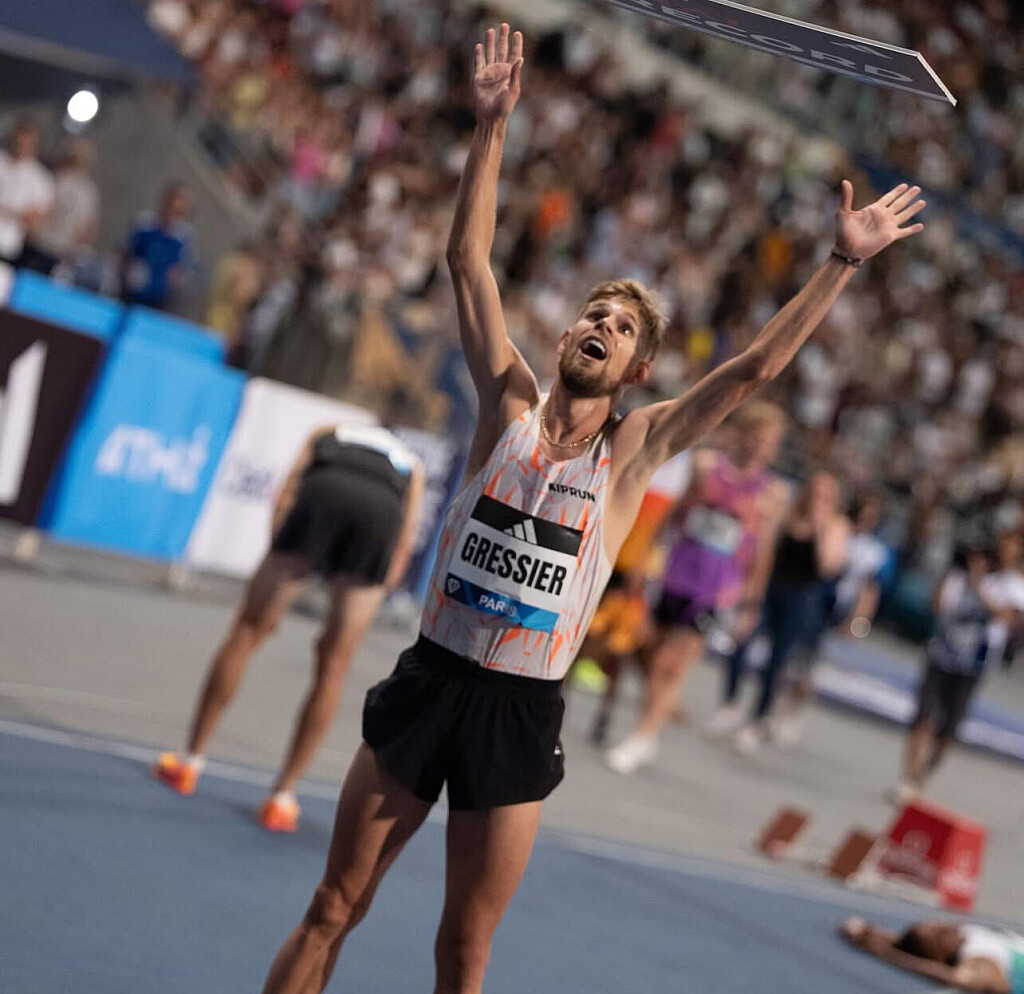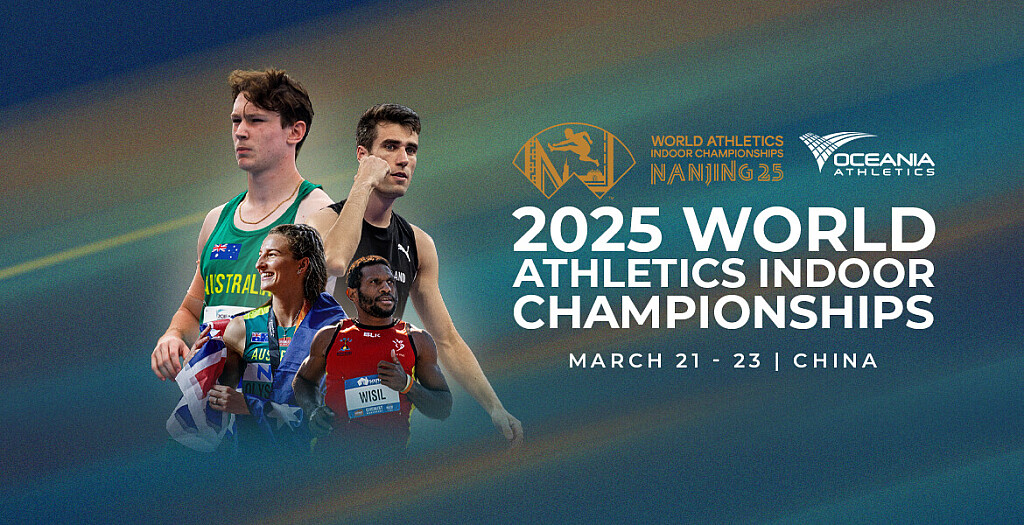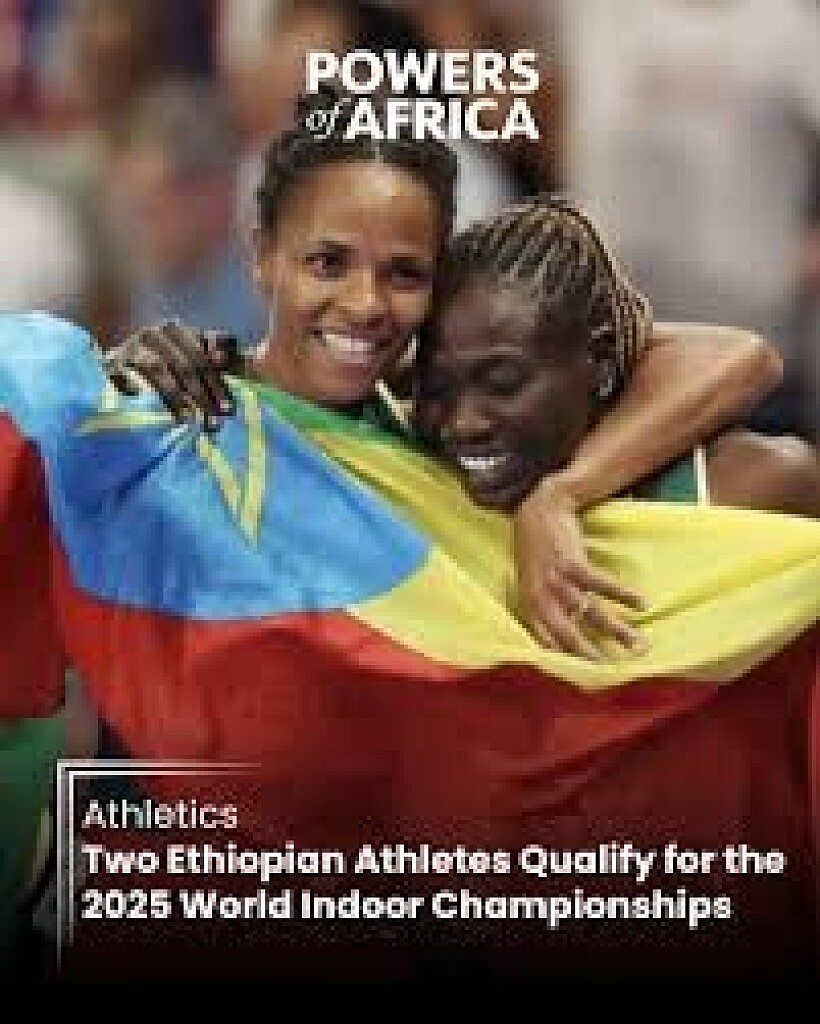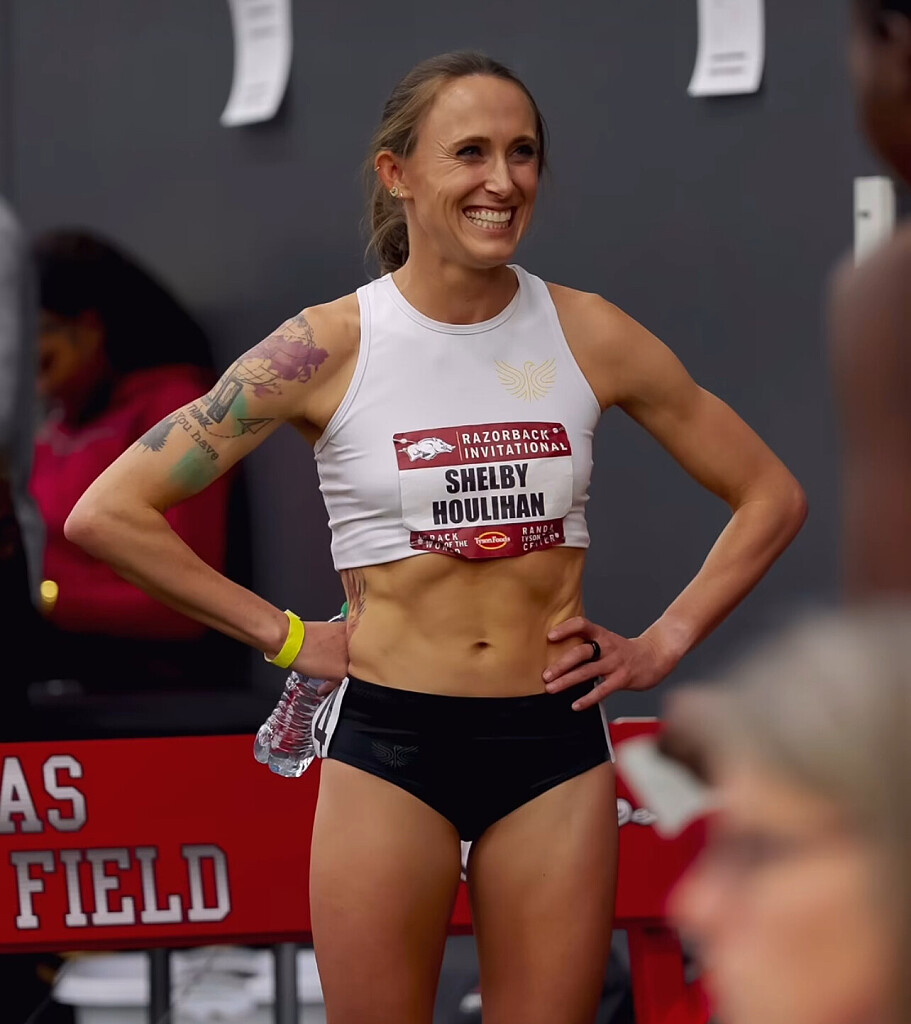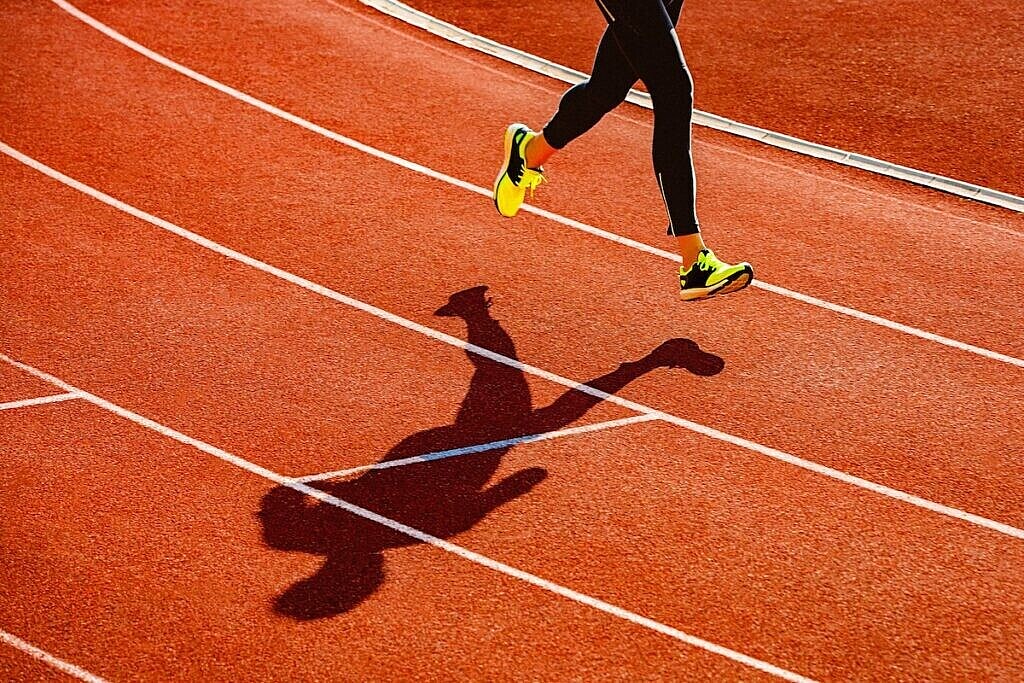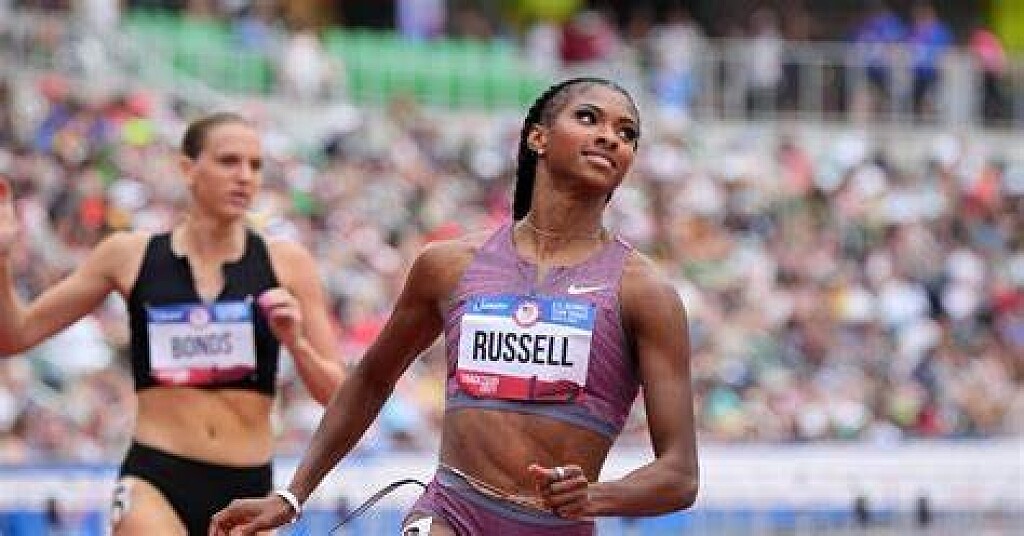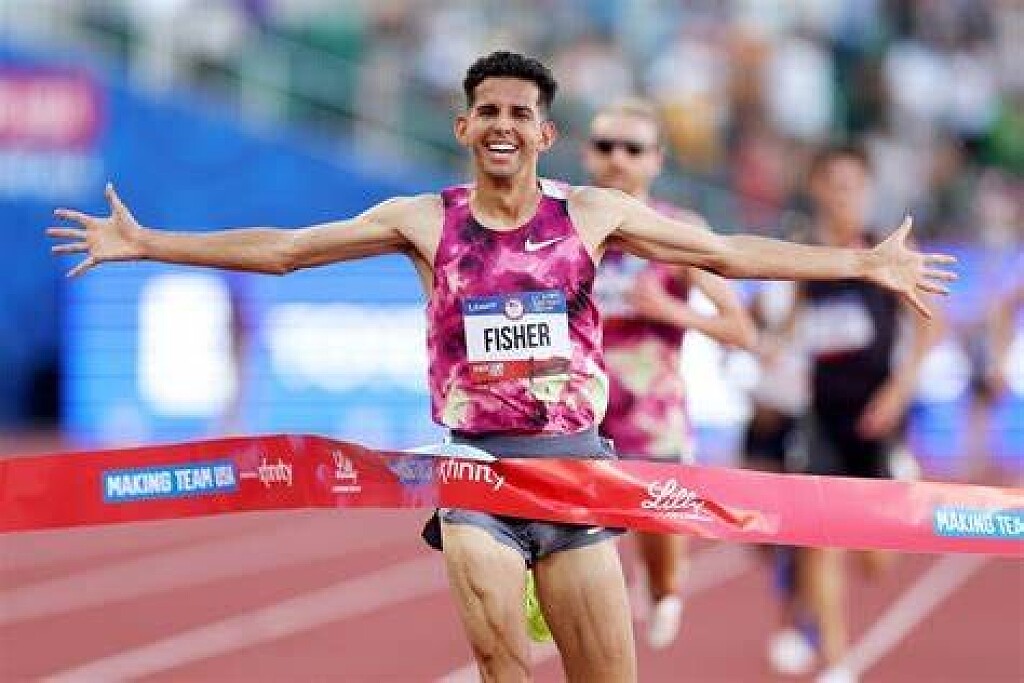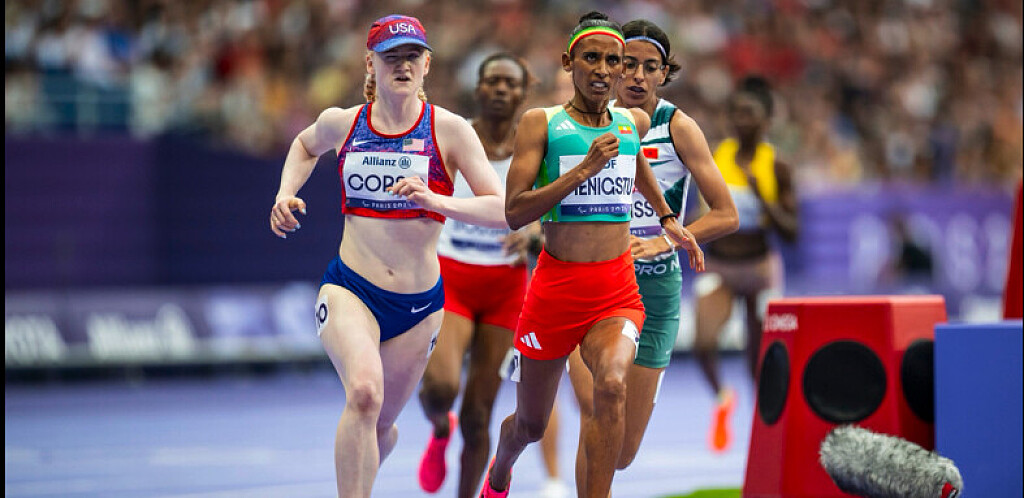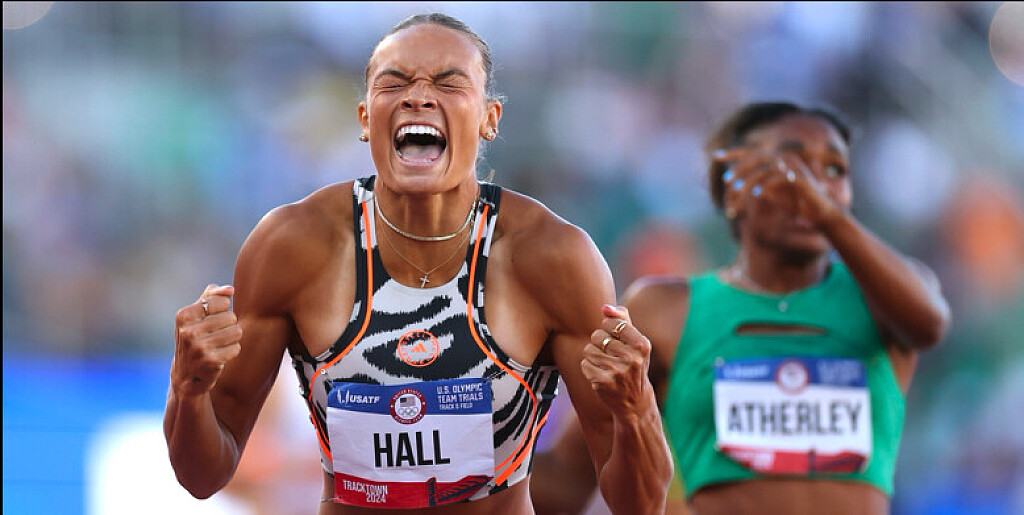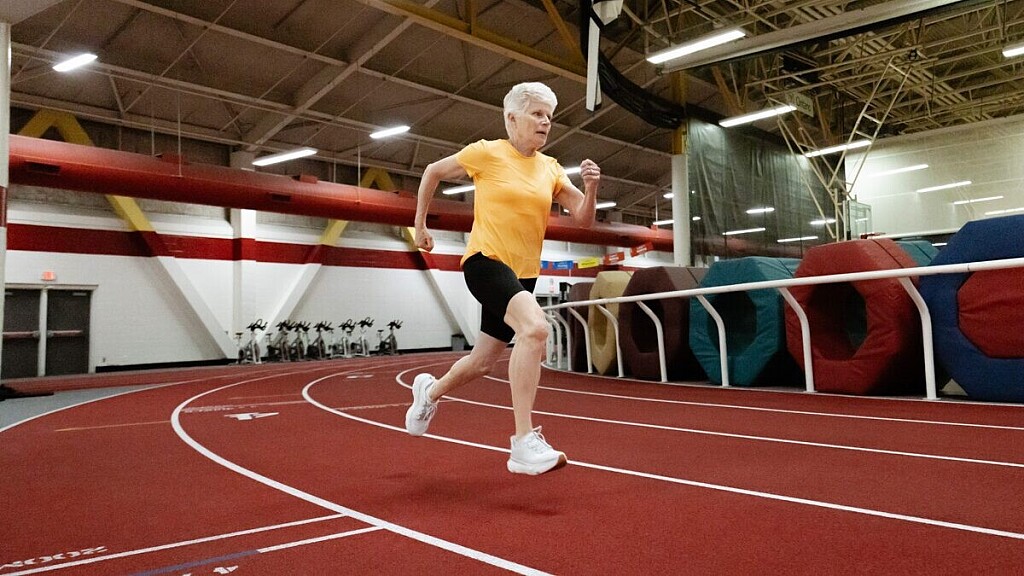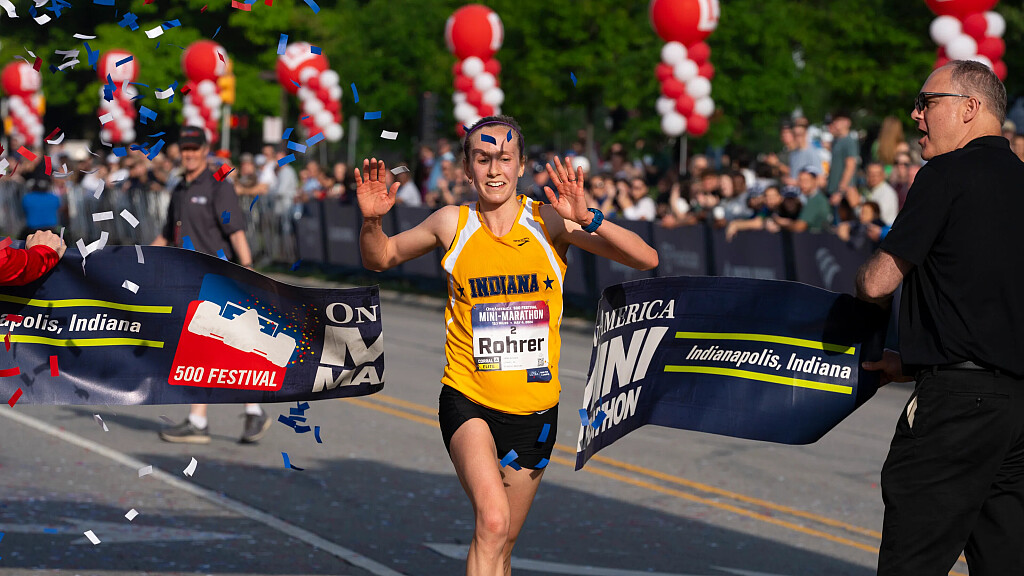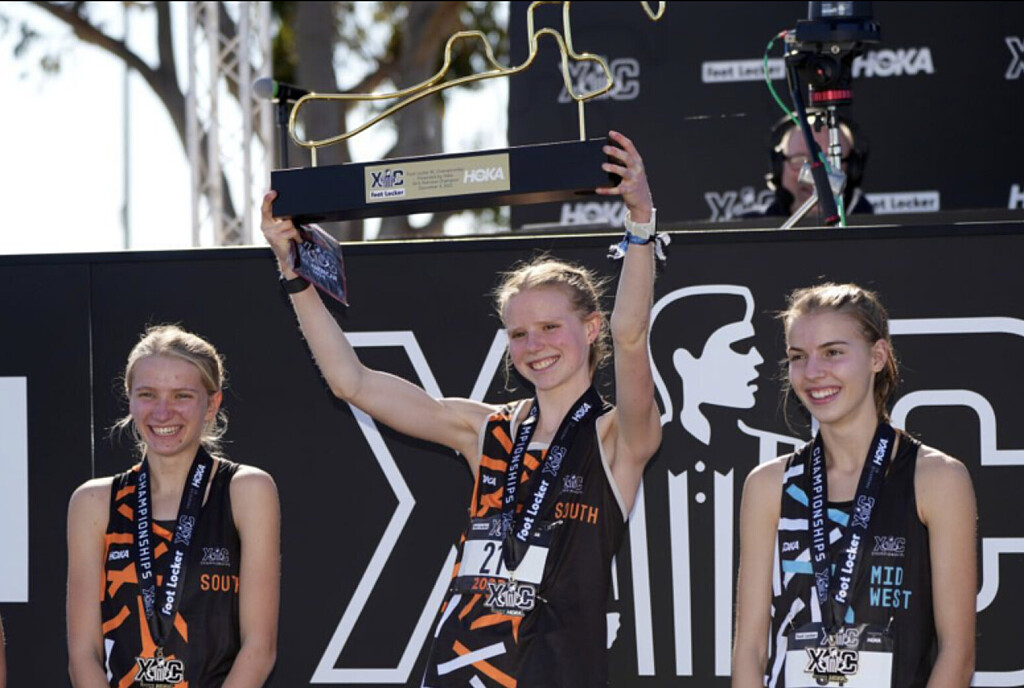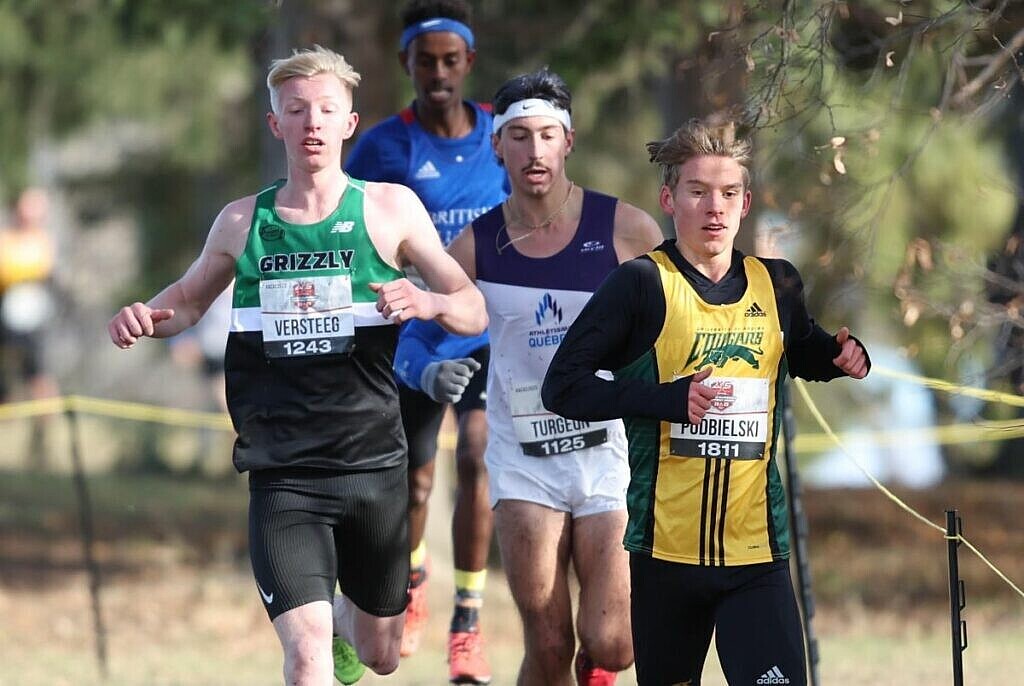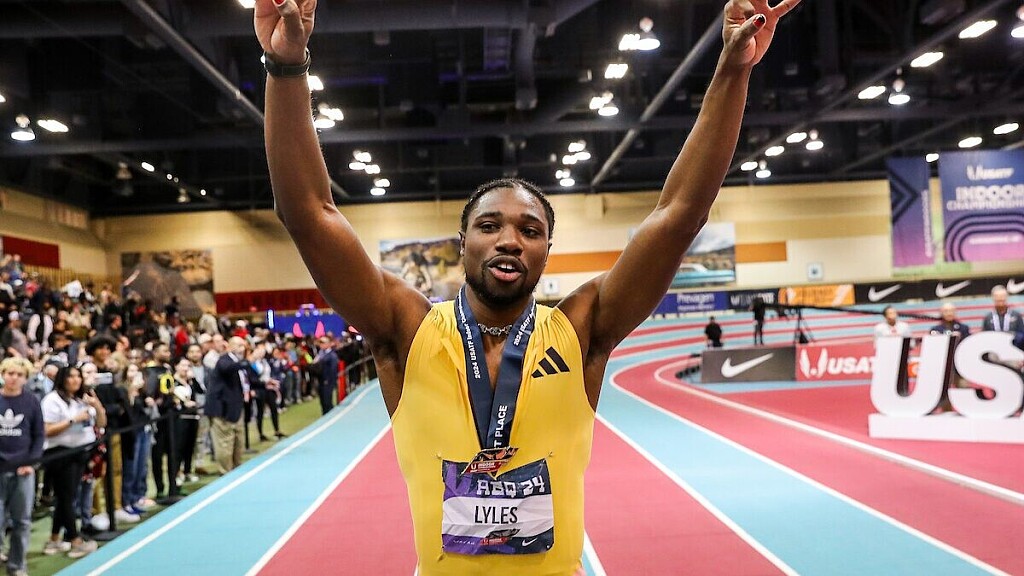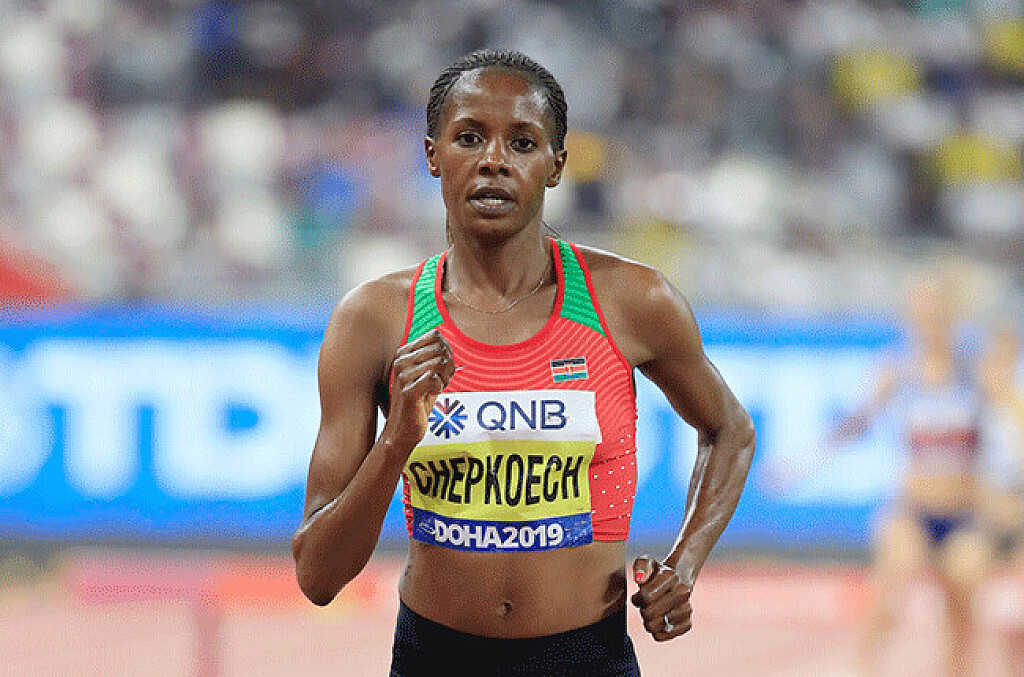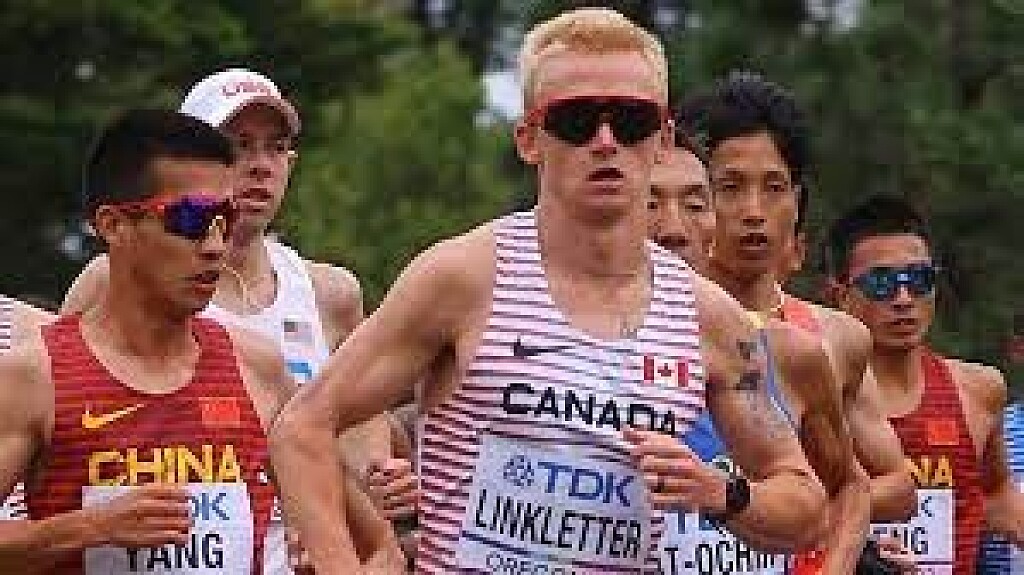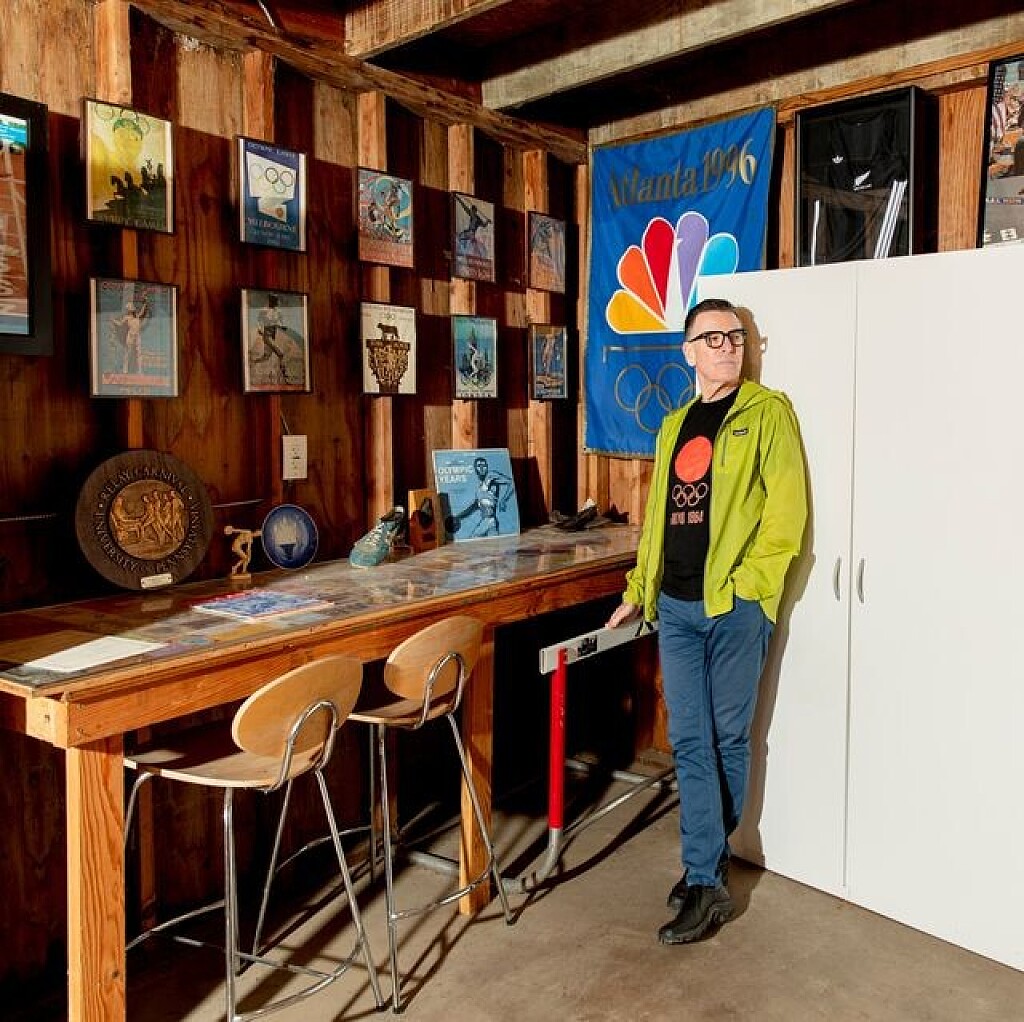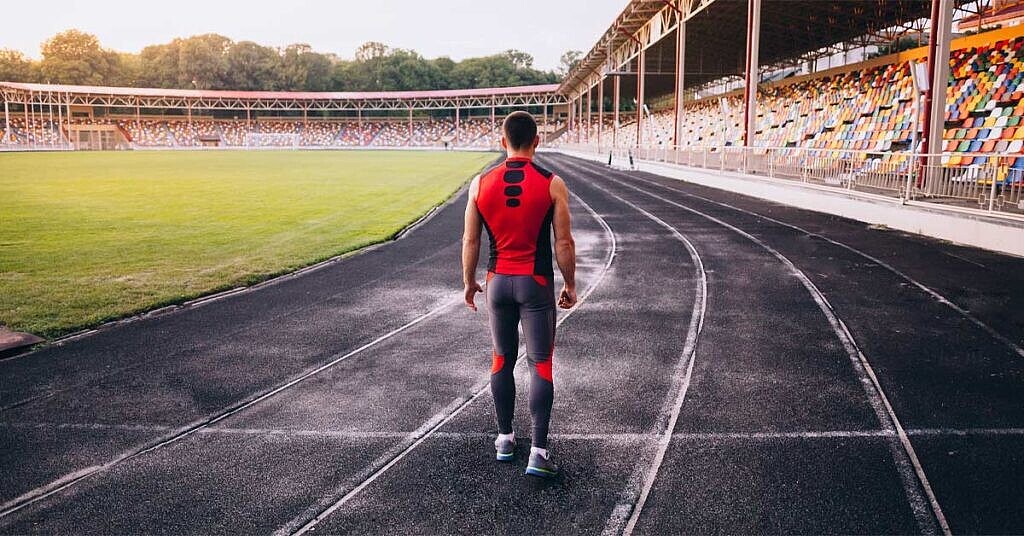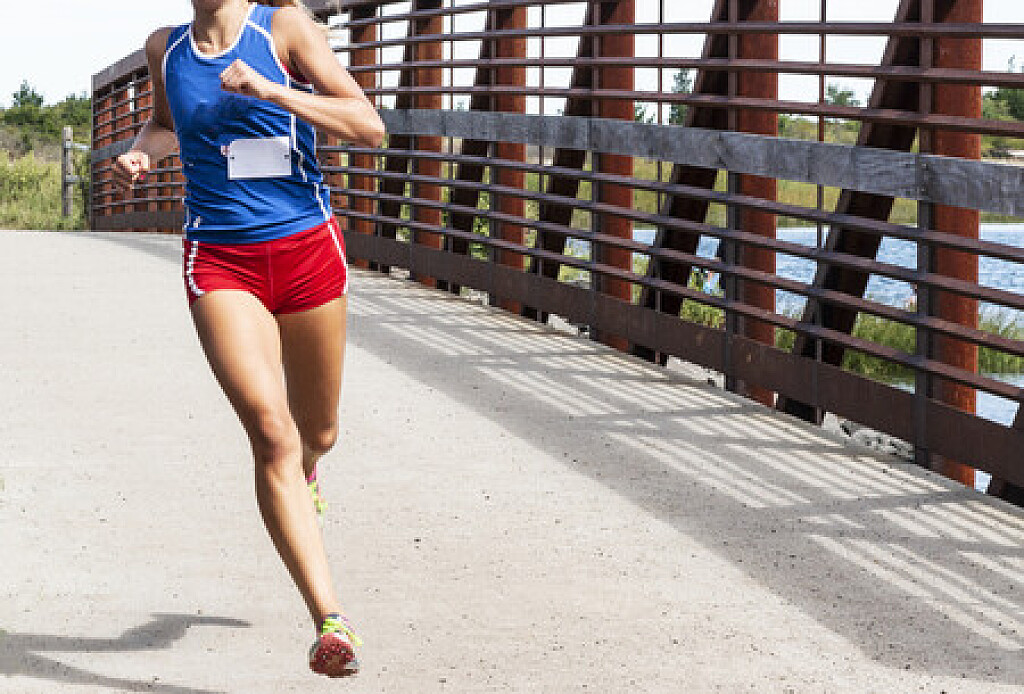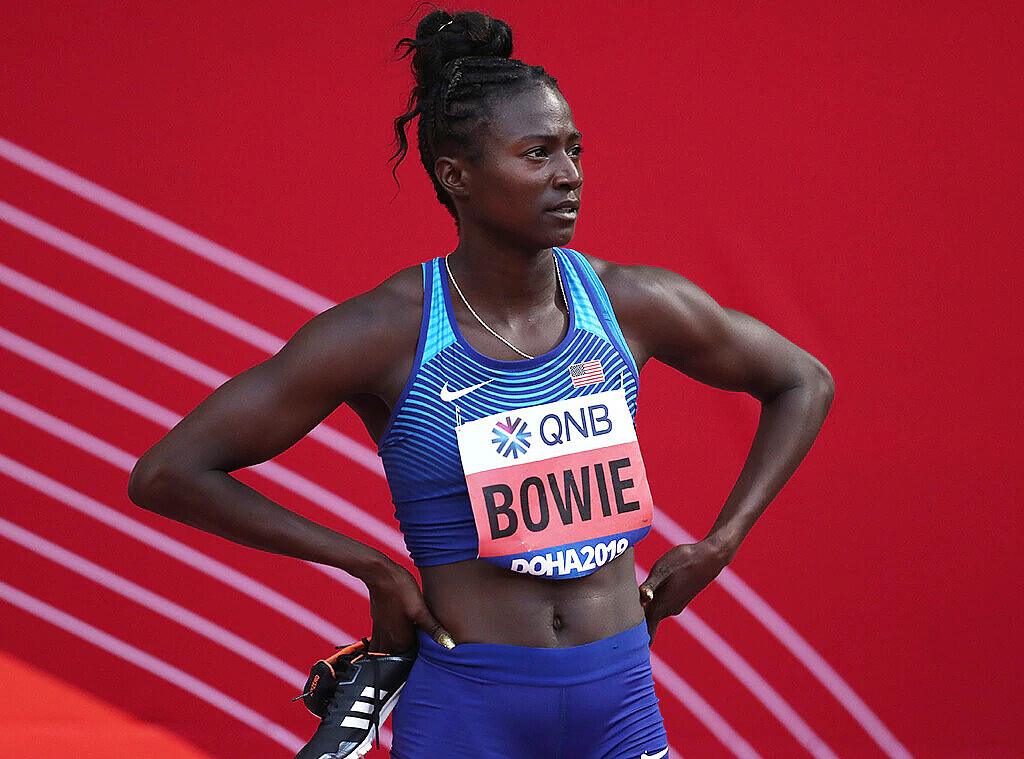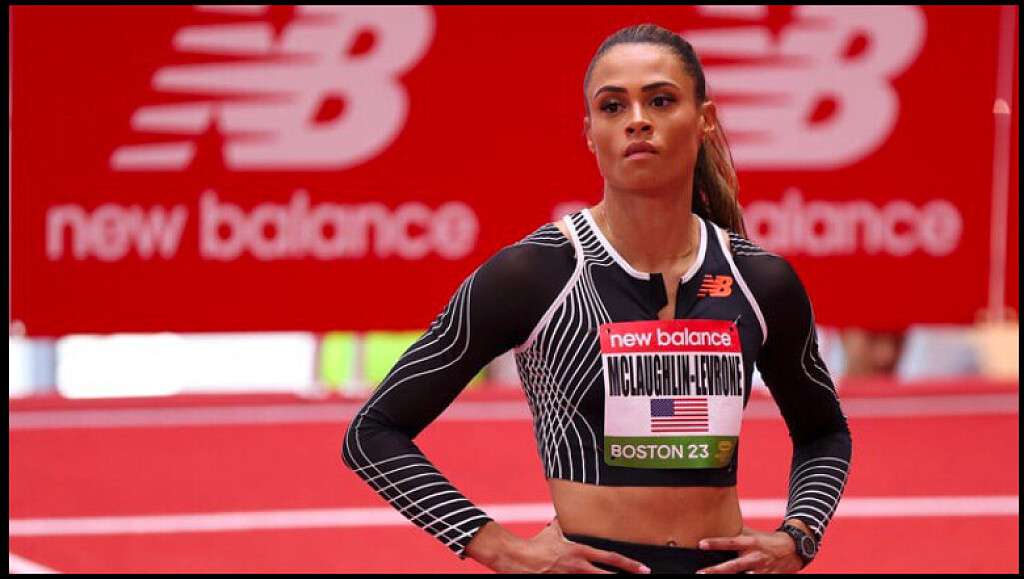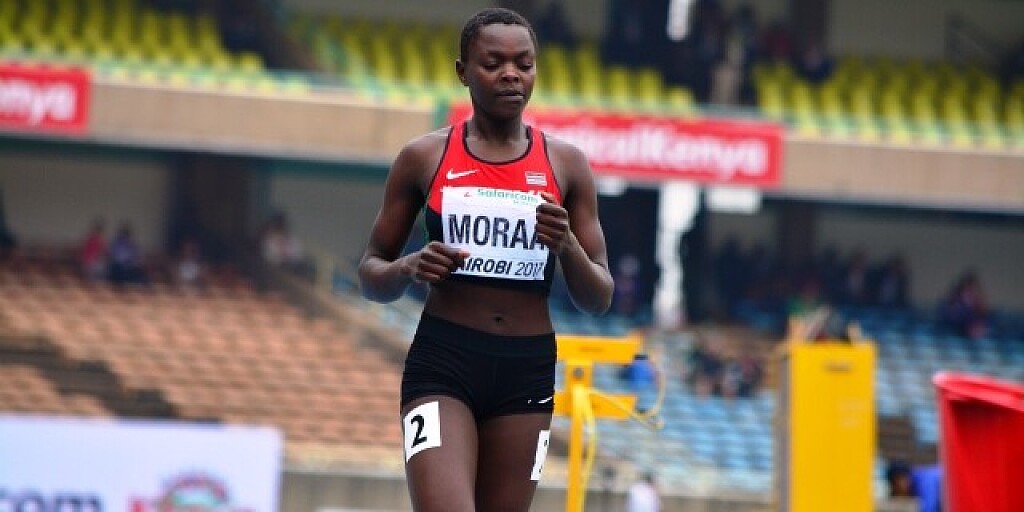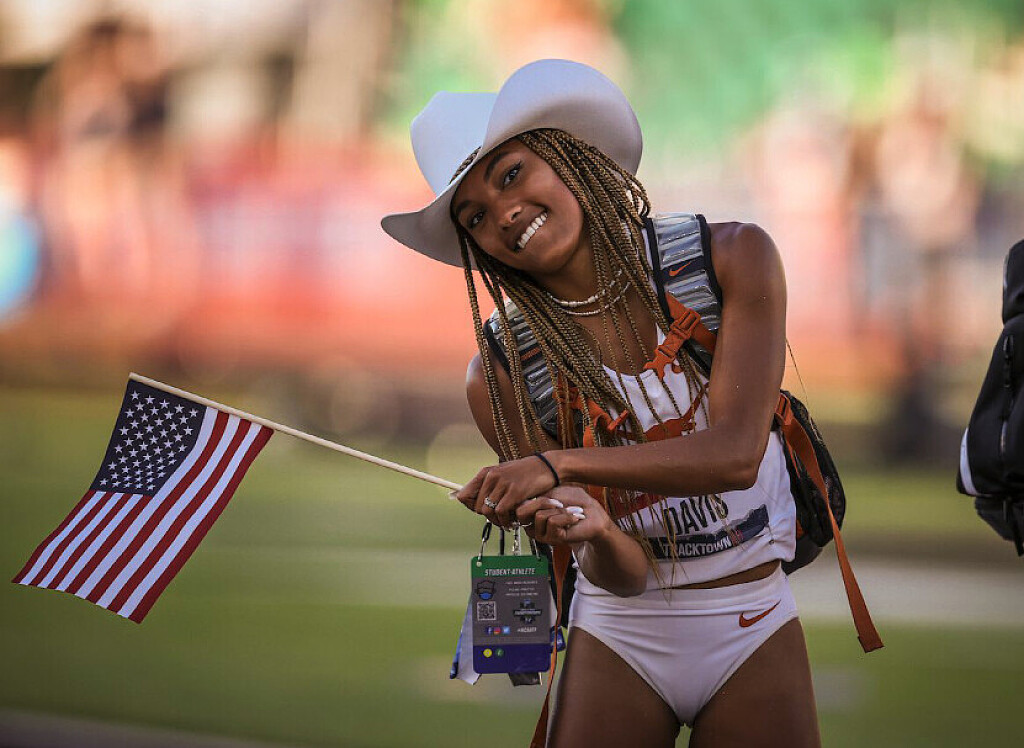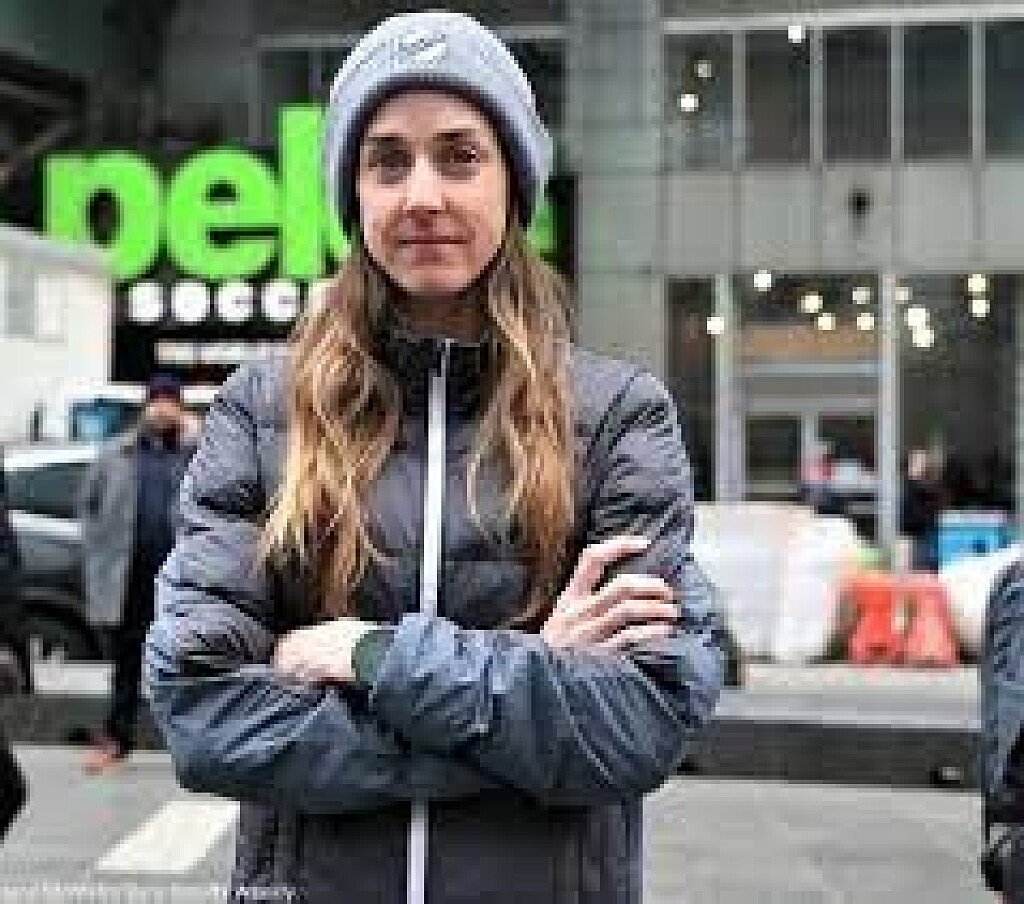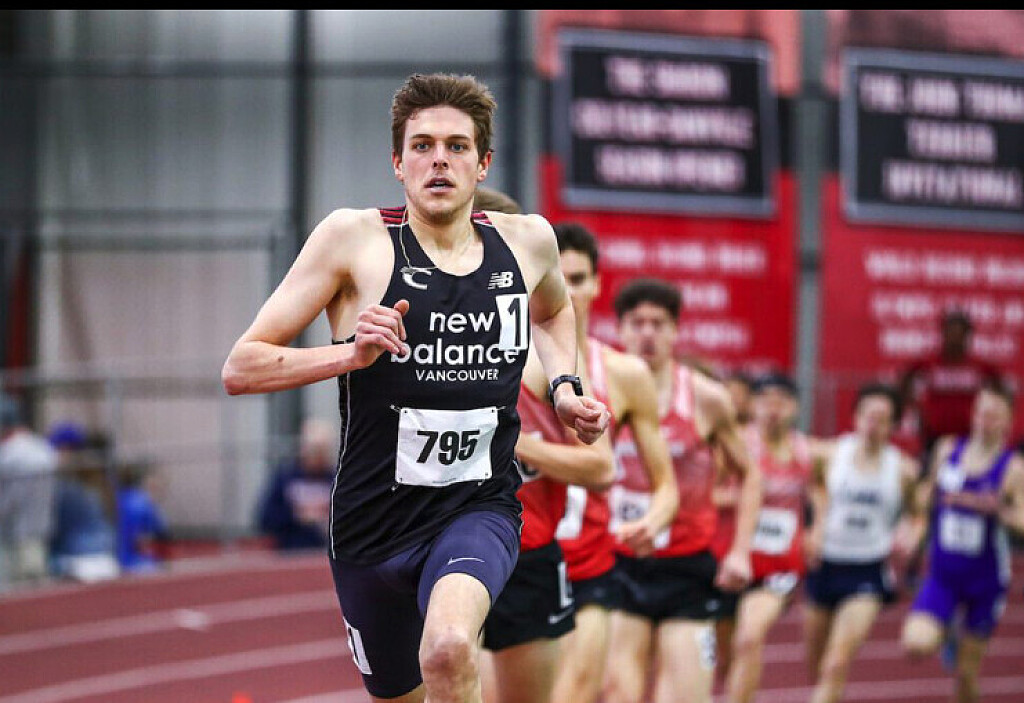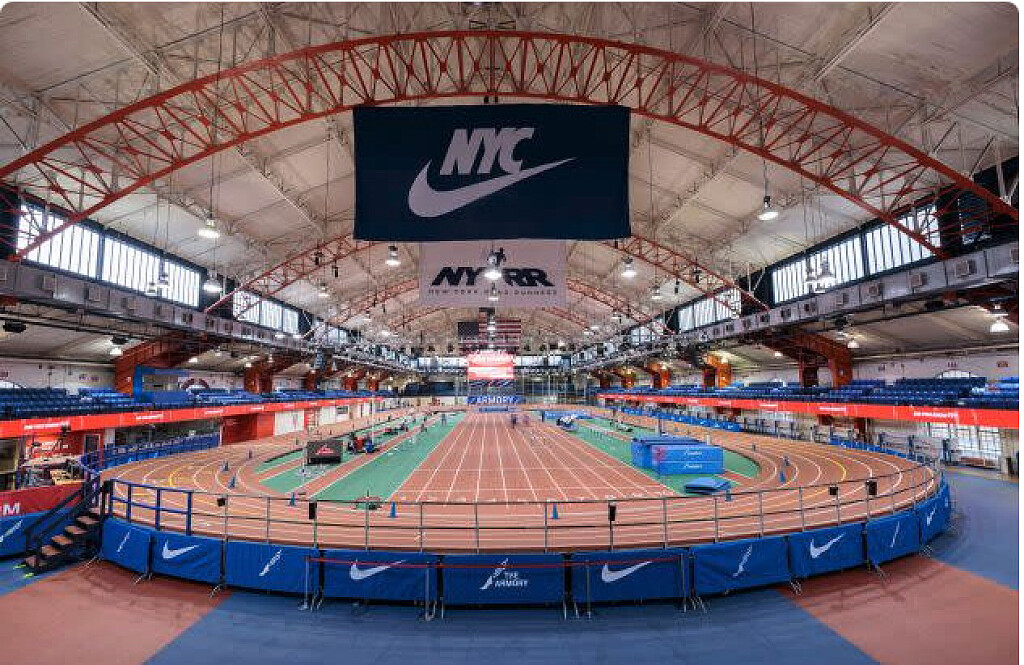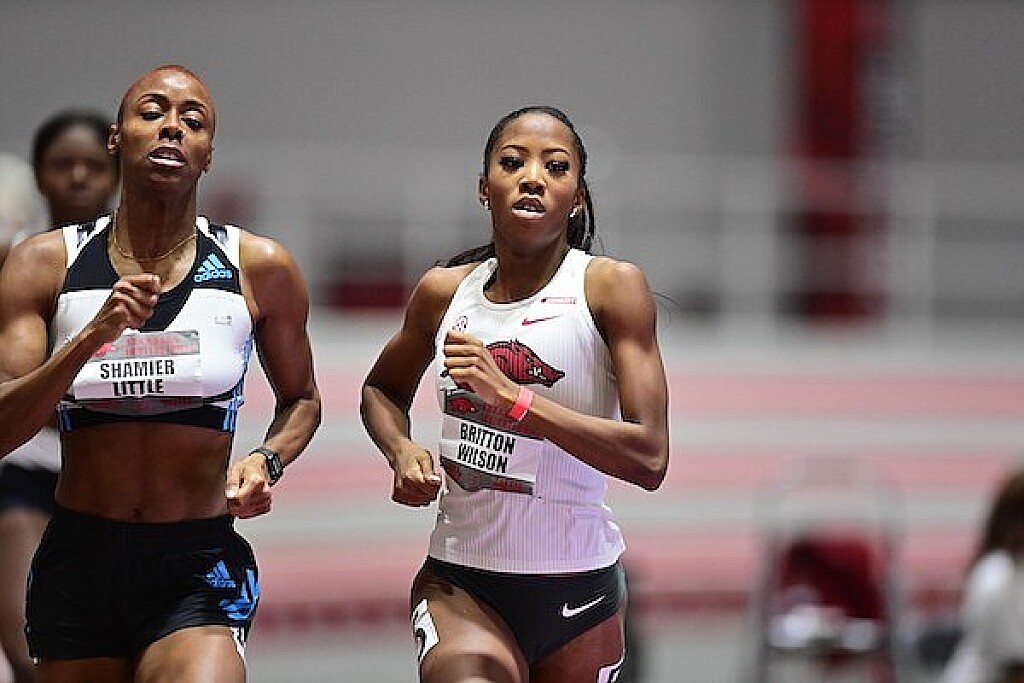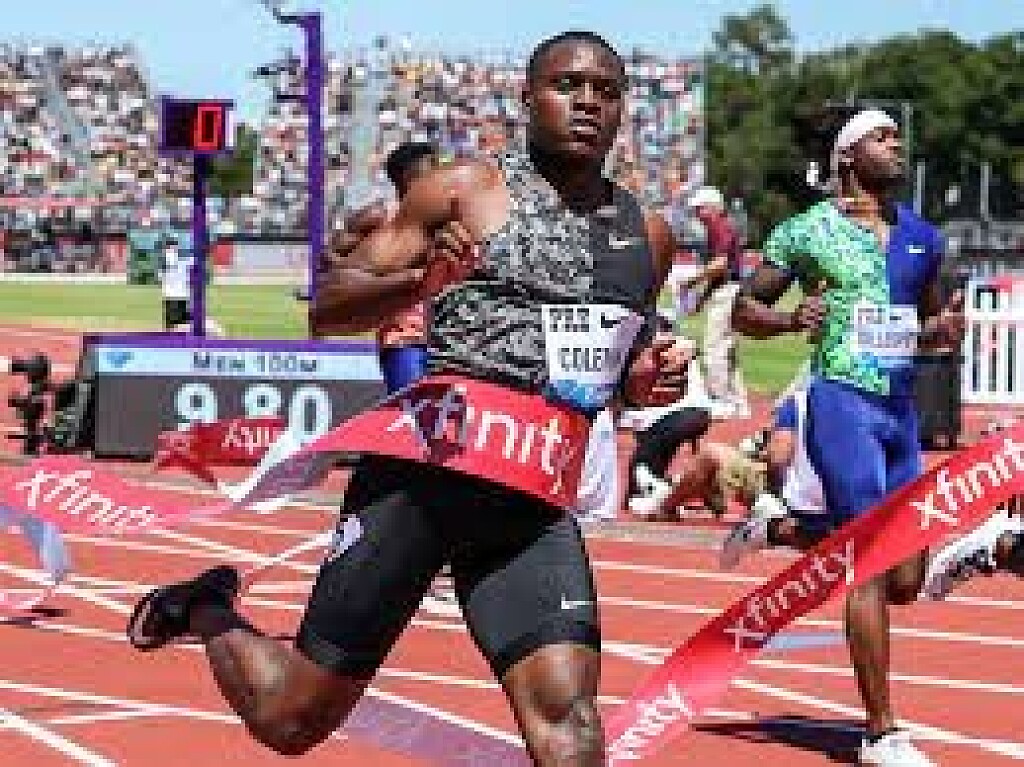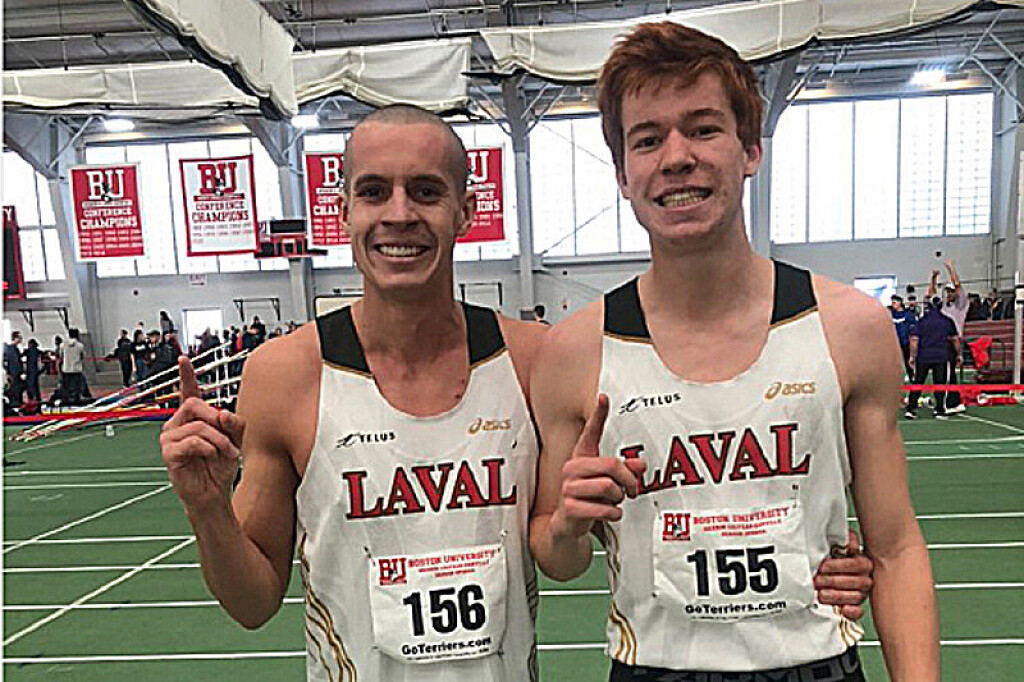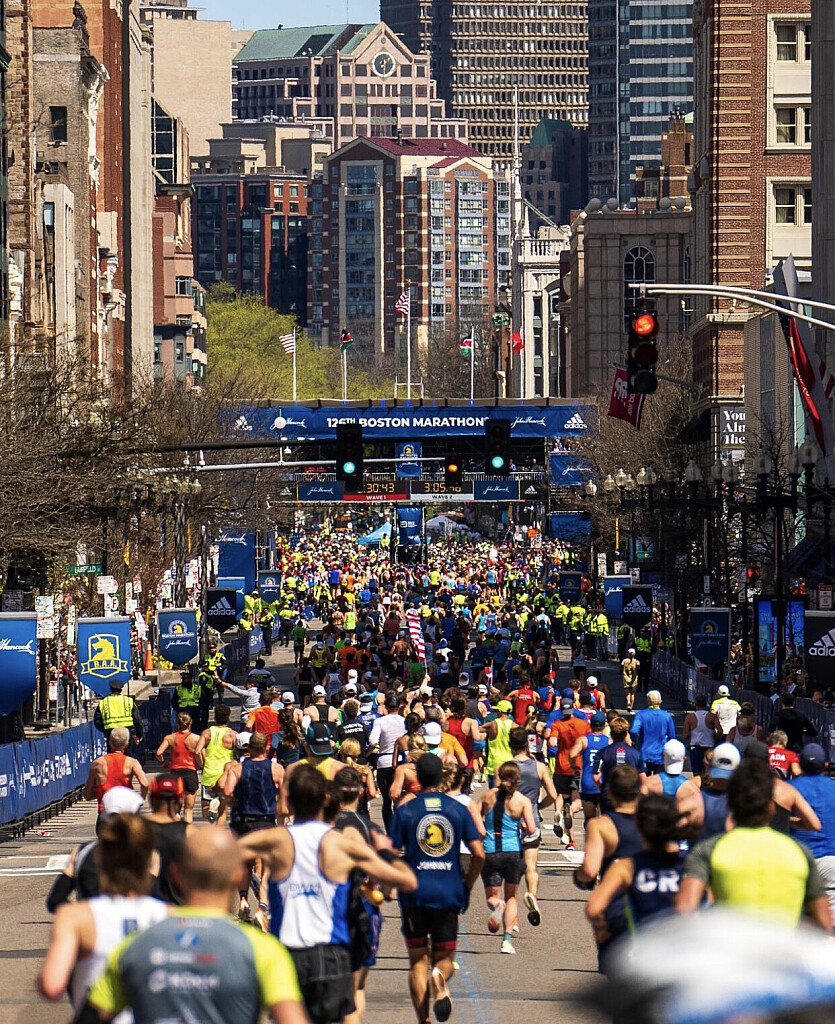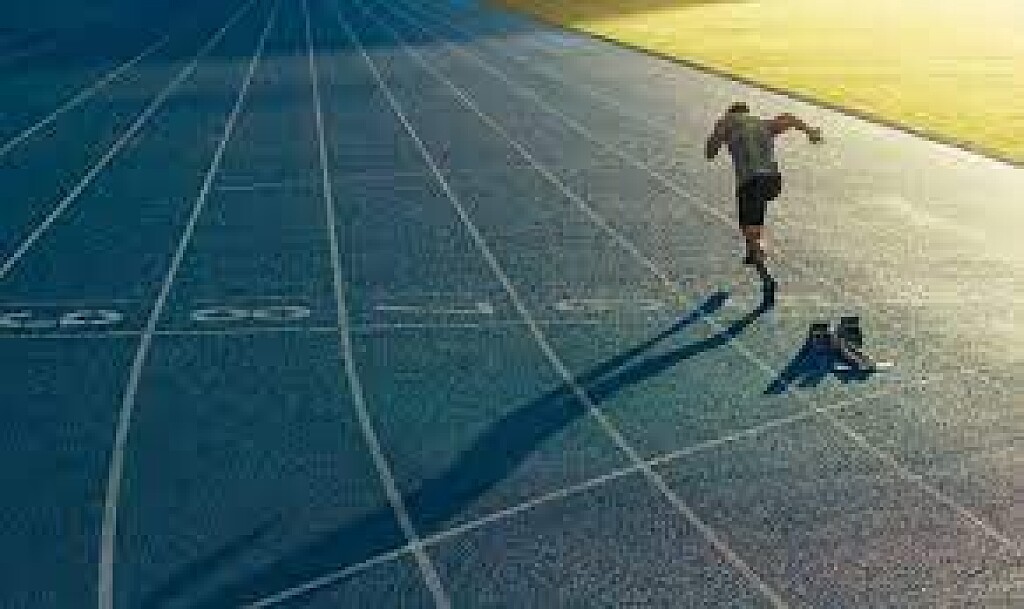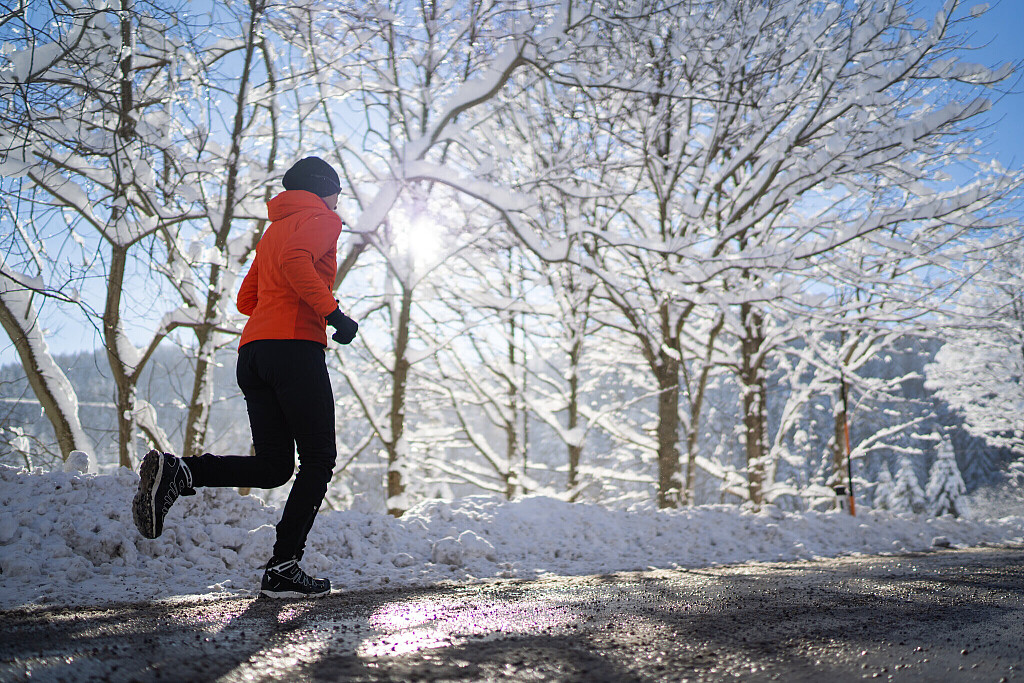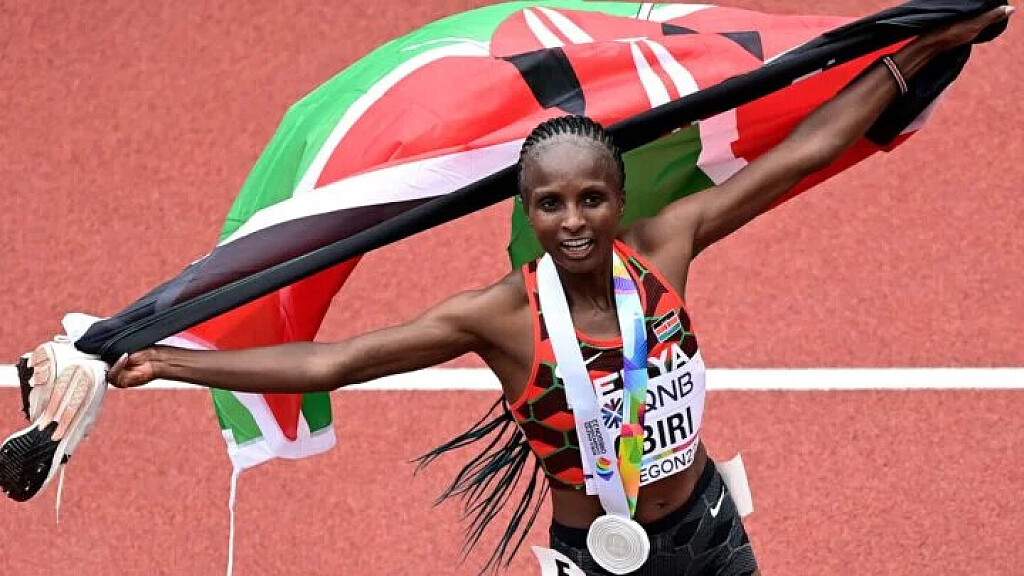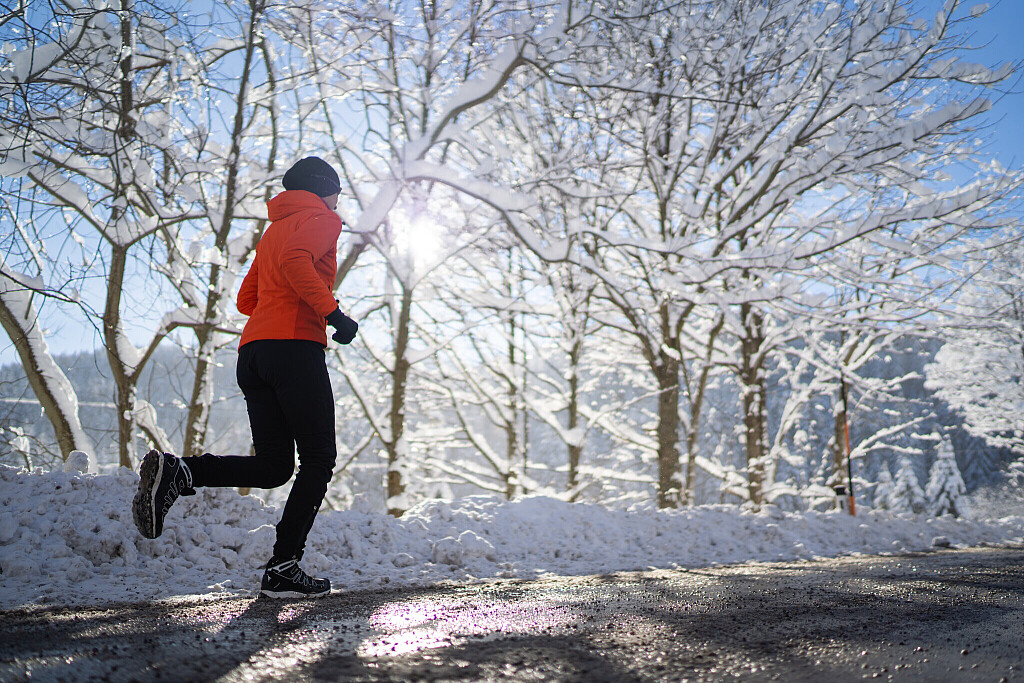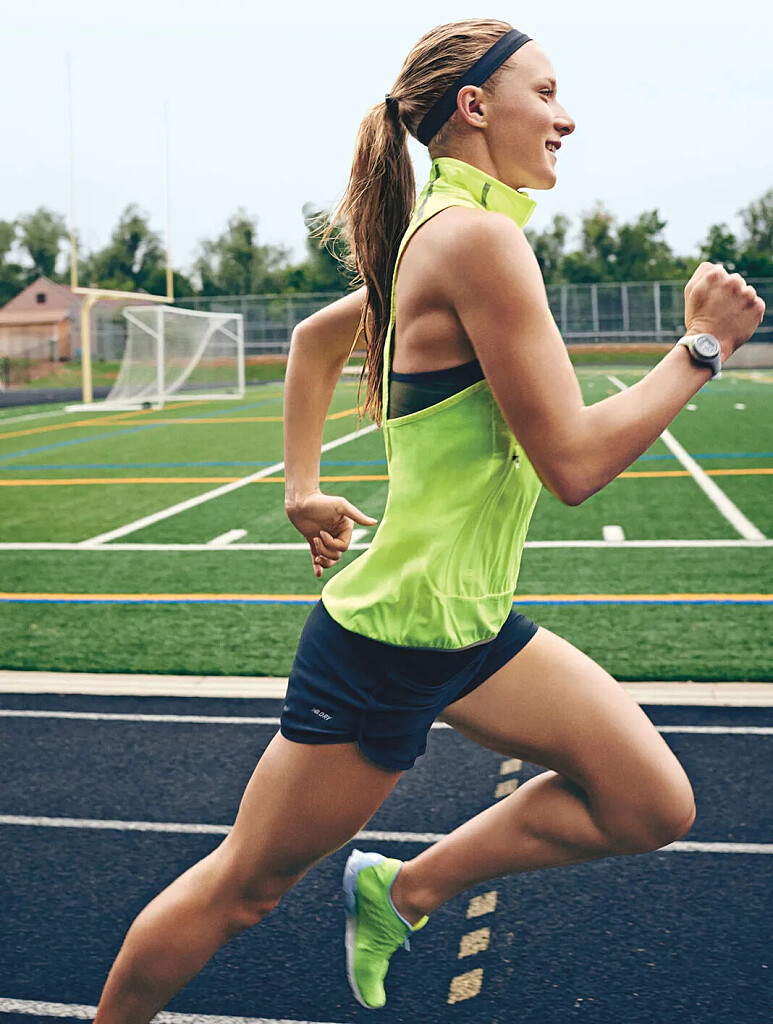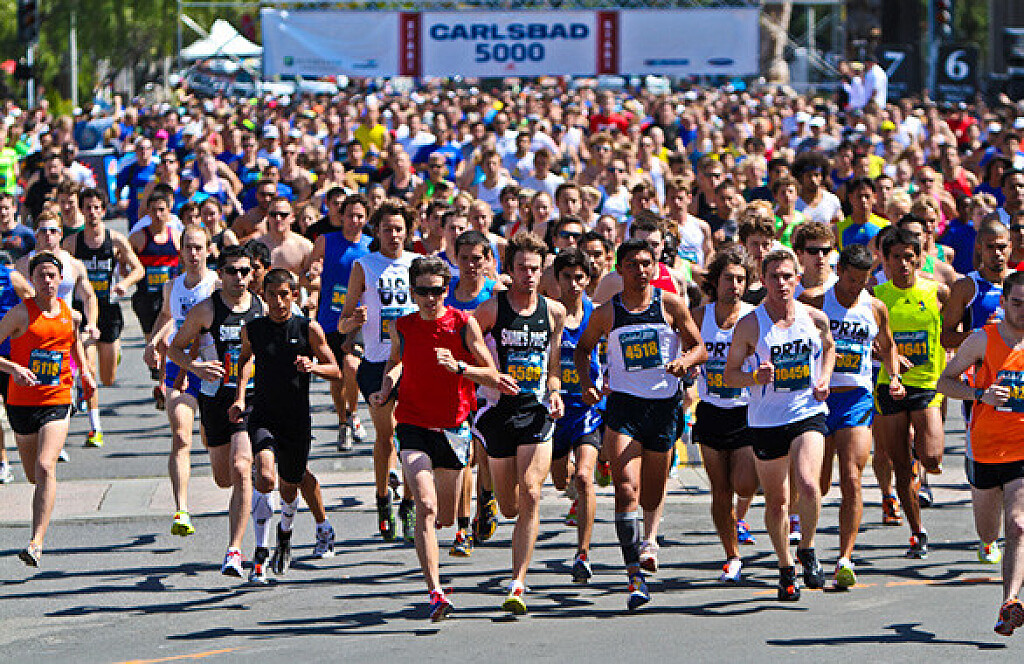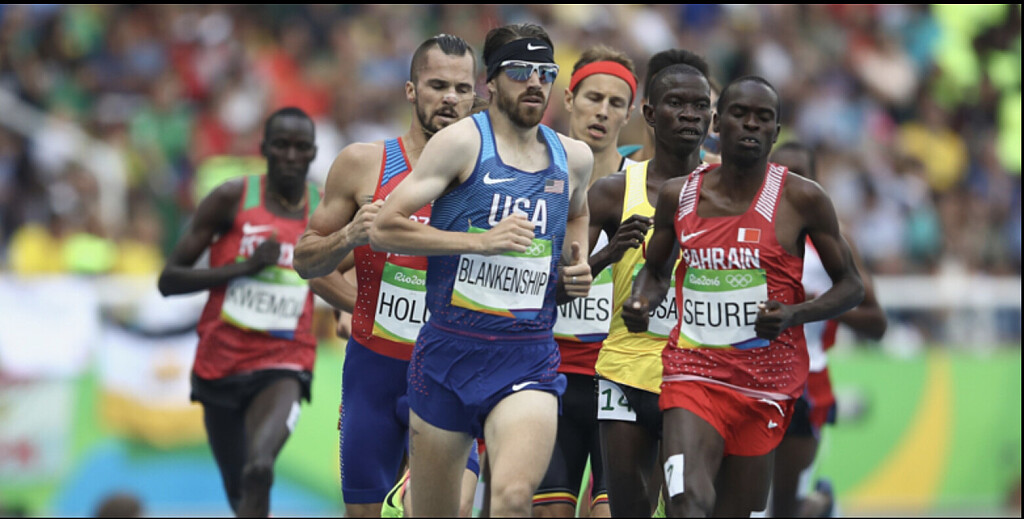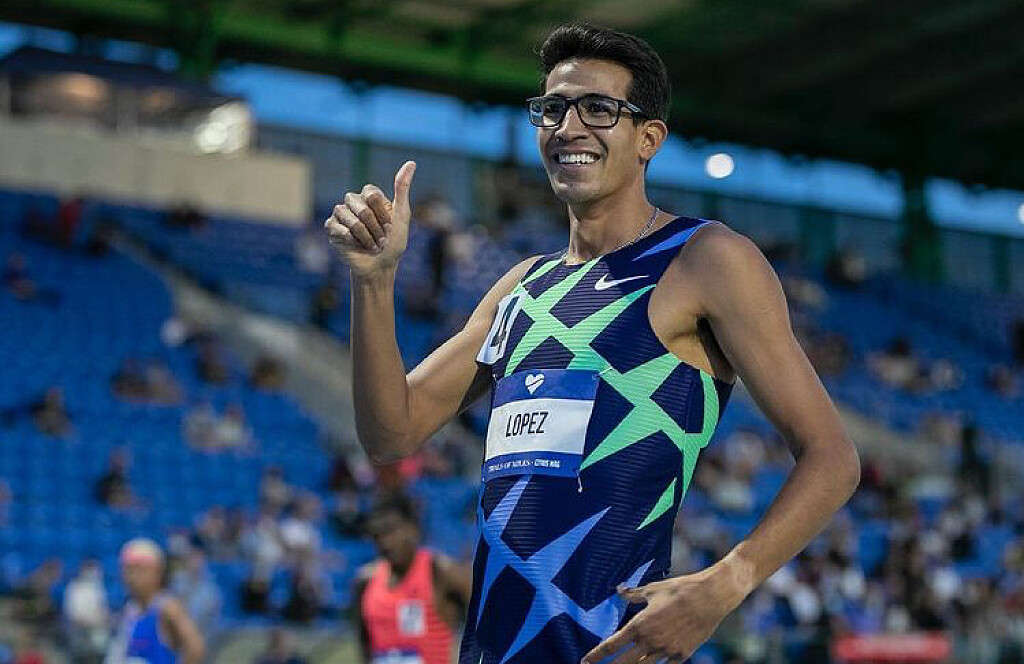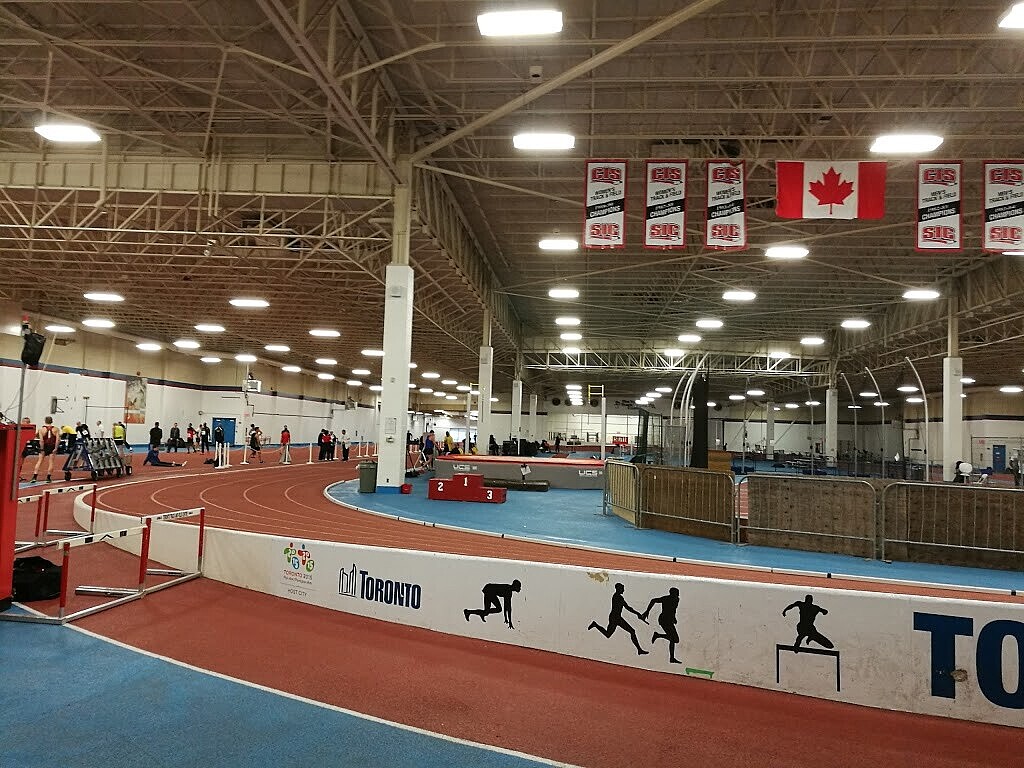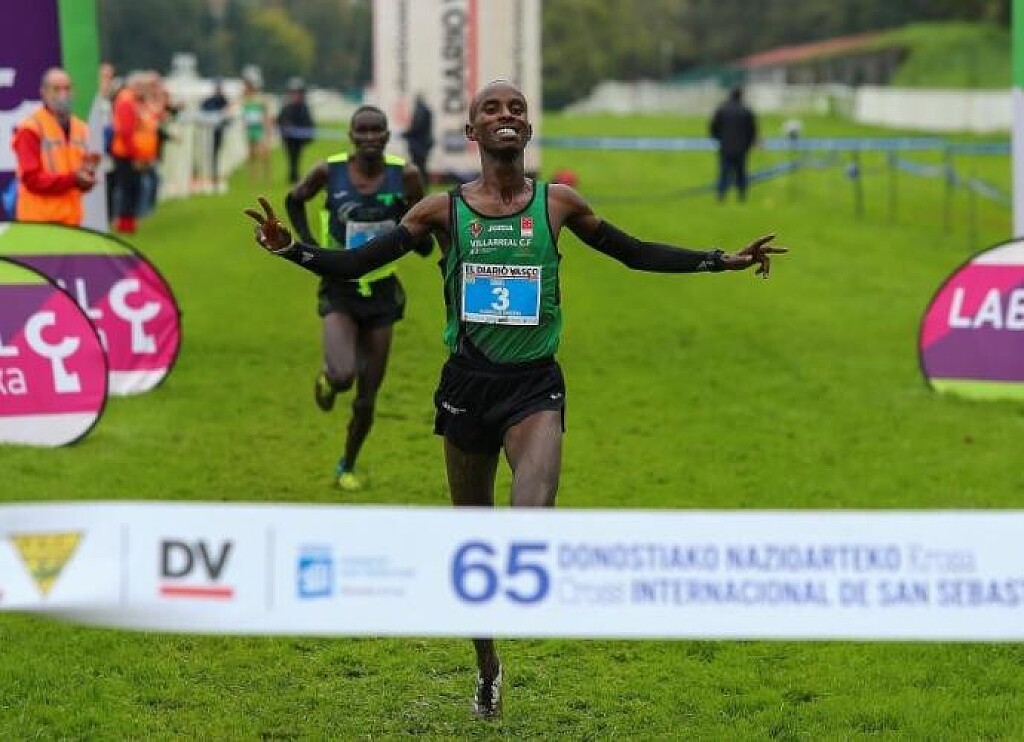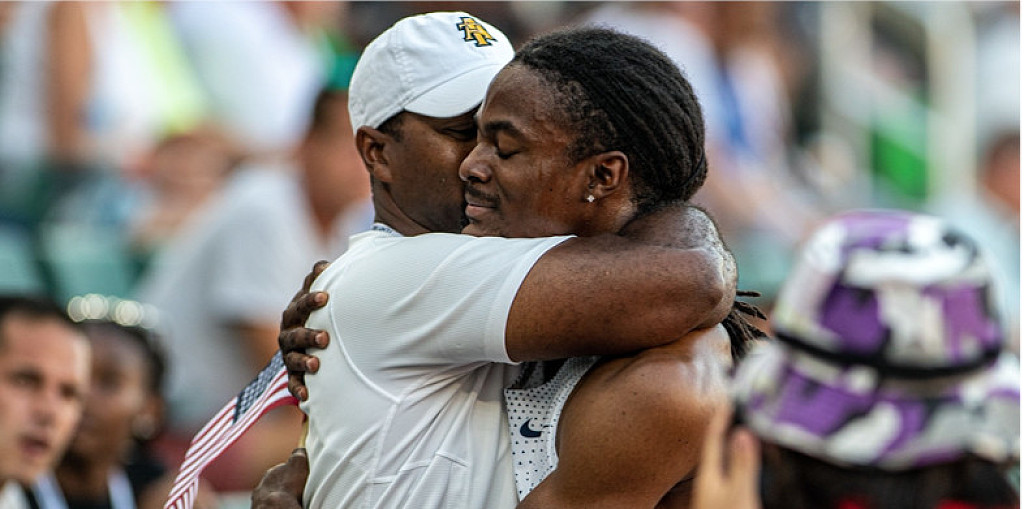Running News Daily
Running News Daily is edited by Bob Anderson. Send your news items to bob@mybestruns.com Advertising opportunities available. Train the Kenyan Way at KATA Kenya and Portugal owned and operated by Bob Anderson. Be sure to catch our movie A Long Run the movie KATA Running Camps and KATA Potato Farms - 31 now open in Kenya! https://kata.ke/
Index to Daily Posts · Sign Up For Updates · Run The World Feed
Articles tagged #Indoor track
Today's Running News
Jimmy Gressier Breaks French 5000m Record at Paris Diamond League
Paris, June 20, 2025 – In front of an electric home crowd at the Wanda Diamond League Meeting de Paris, Jimmy Gressier delivered the race of his life. The 28-year-old French distance star shattered his own national record in the 5000m, crossing the line in 12:51.59 to finish fourth in a stacked international field.
This performance not only marked a personal best for Gressier, but also cemented his place among the world’s elite, as one of only a handful of Europeans to run under 12:52 in the event.
“I might not be at 100%, but I didn’t want to miss out on being part of the celebration,” Gressier said before the race. That mindset paid off.

Racing Against the Best in the World
The race was won by Ethiopia’s Yomif Kejelcha, who clocked 12:47.84, followed closely by America’s Graham Blanks in 12:48.16 and Kenya’s Jacob Krop in 12:49.71. Gressier held his own against the top-tier field, surging in the final laps to break his previous French record of 12:54.92 (set indoors in 2024) by more than three seconds.
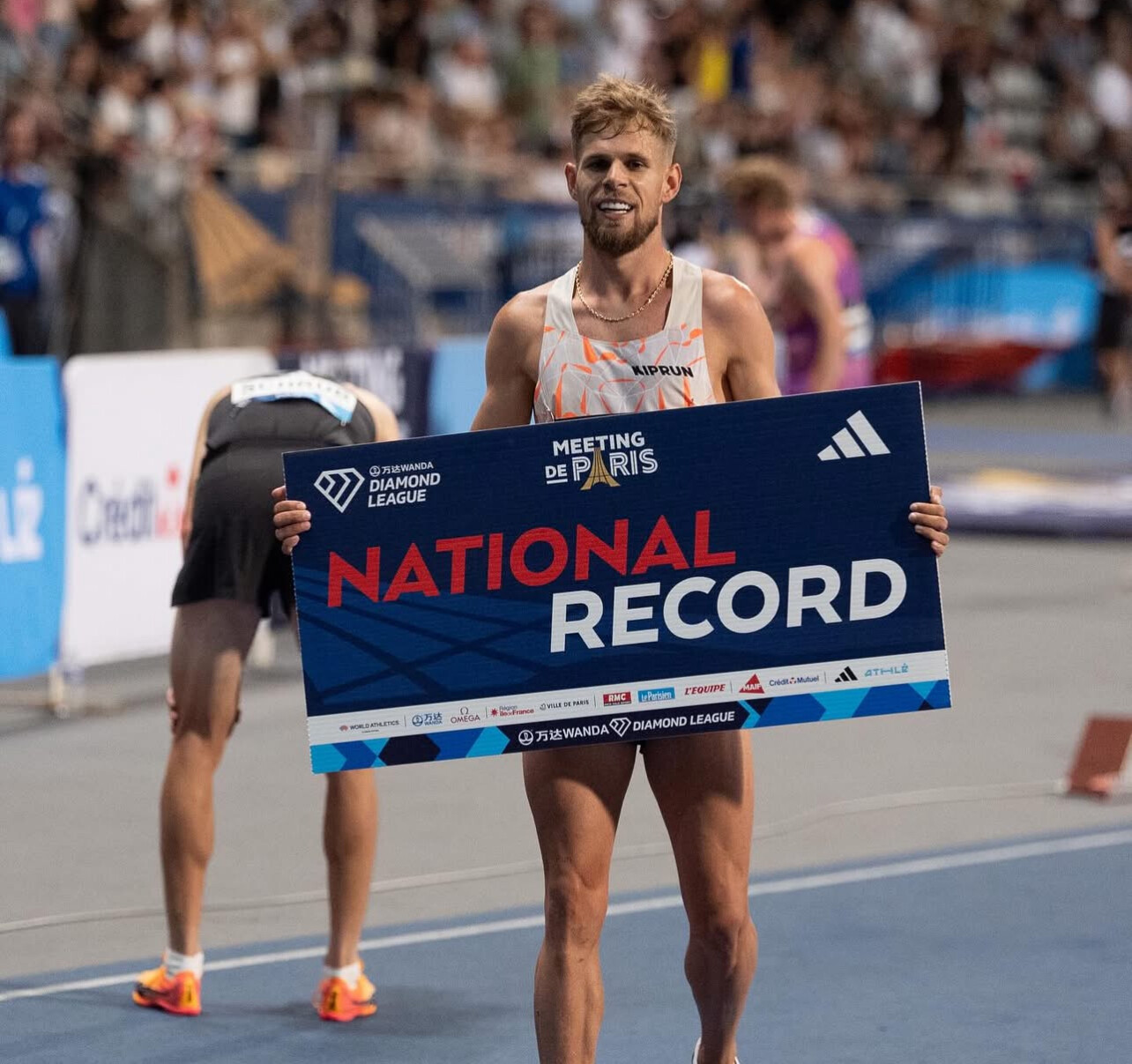
His fourth-place finish came with style and grit, as he crossed the line visibly elated, later holding up a large sign reading “National Record” to the roaring approval of the French fans at Stade Charléty.
A Milestone on the Road to Tokyo
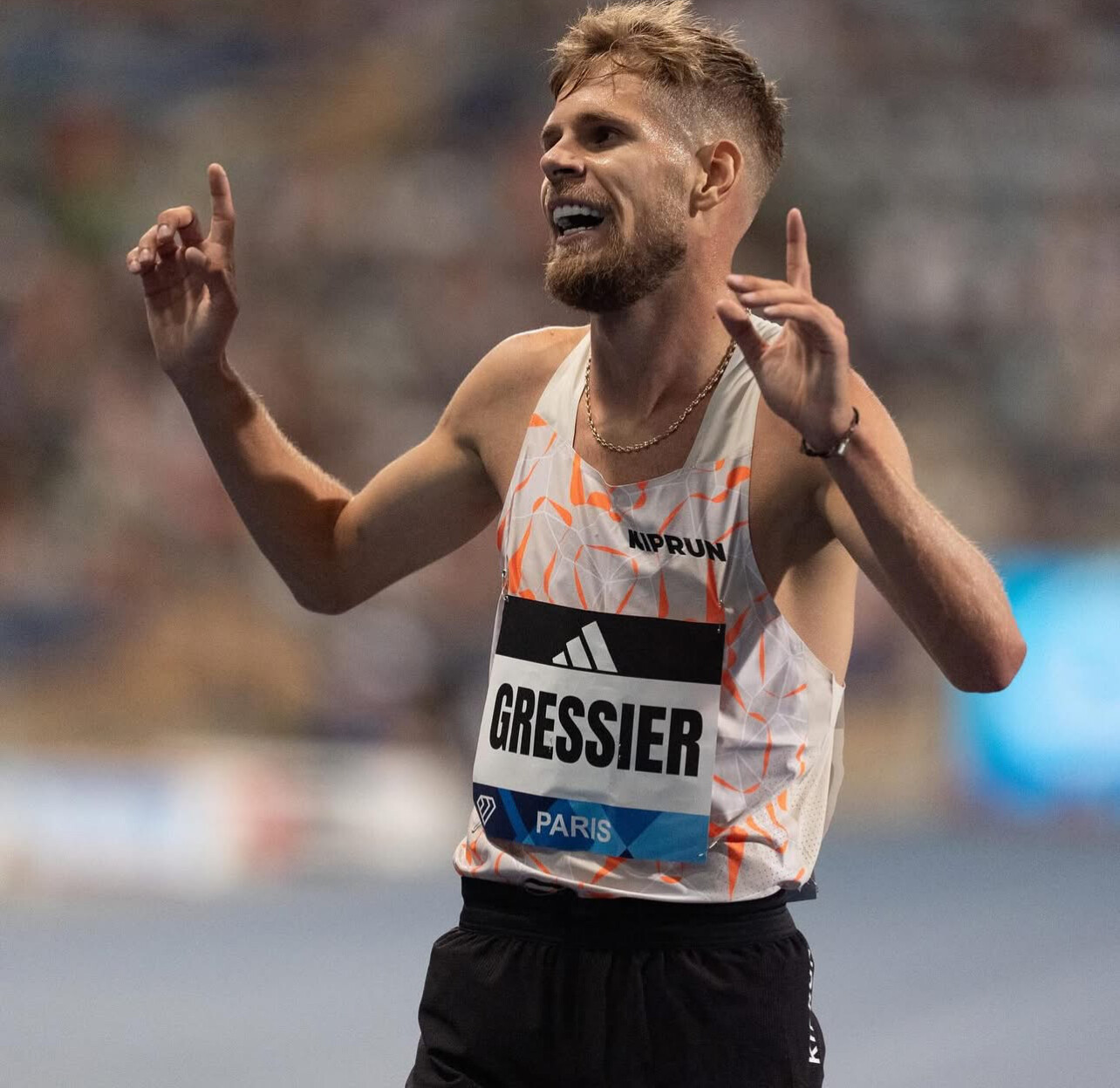
Gressier’s record-setting run is a timely confidence boost ahead of the upcoming World Championships in Tokyo. A consistent performer on the European road and cross-country circuits, he now proves he can contend with the world’s best on the track as well.
Already the European 5 km road record holder and a multi-time national champion, Gressier is building one of the most versatile résumés in distance running today. His strength across surfaces and distances—from indoor tracks to rolling road courses—positions him as a serious contender for a medal on the global stage.
“Breaking the national record by over three seconds against this level of competition shows I’m on the right path,” Gressier said after the race.
What’s Next for Gressier?
With this new national record under his belt, Gressier’s focus now shifts to Tokyo, where the French star hopes to translate his breakthrough into a podium finish. He remains committed to a robust training block under longtime coach Dinielle Arnaud, with fine-tuning to be done before the biggest race of his life.
The Rise of French Distance Running
Gressier’s performance isn’t just personal—it’s symbolic. For French athletics, his record represents a resurgence in elite distance running. With Paris having hosted the Olympics just a year earlier, the momentum behind the sport in France is real. Gressier’s run serves as inspiration to a new generation of French runners aiming to follow in his fast footsteps.
Jimmy Gressier’s 12:51.59 at the 2025 Paris Diamond League is more than a national record—it’s a bold message to the world. He’s not just running with the best—he’s becoming one of them.
by Boris Baron
Login to leave a comment
Hellen Obiri’s Pursuit of a Historic Three-Peat at the Boston Marathon
As the 2025 Boston Marathon approaches on April 21, Kenya’s Hellen Obiri stands on the brink of making history. With victories in 2023 and 2024, Obiri aims to secure her third consecutive win, a feat that would place her among an elite group of women who have achieved a “three-peat” at Boston.
From Track Star to Marathon Champion

Born on December 13, 1989, in Kisii, Kenya, Hellen Obiri began her athletic career specializing in middle- and long-distance track events. She is the only woman to have won world titles in indoor track, outdoor track, and cross country. Obiri is a two-time Olympic silver medalist in the 5,000 meters (2016 Rio and 2020 Tokyo) and has multiple World Championship medals to her name.
In 2022, Obiri transitioned to road racing, making an immediate impact by winning the 2023 Boston Marathon in her second marathon attempt. She defended her title in 2024, showcasing her versatility and endurance.
The Exclusive Club of Boston Marathon Three-Peaters
Achieving three consecutive victories at the Boston Marathon is a rare accomplishment. In the women’s open division, only four athletes have done so:
• Bobbi Gibb (1966–1968)
• Sara Mae Berman (1969–1971)
• Uta Pippig (1994–1996)
• Fatuma Roba (1997–1999)
Obiri’s potential third win would make her the fifth woman to join this distinguished group.
Aiming for Glory on Patriots’ Day
Obiri’s pursuit of a third consecutive Boston Marathon title is not just a personal milestone but also a significant moment in the event’s storied history. Her consistent performances and rapid ascent in marathon running underscore her determination and athletic prowess. As she prepares for the 2025 race, Obiri stands on the cusp of joining the legends of the Boston Marathon.
The legends:
Bobbi Gibb (1966–1968)
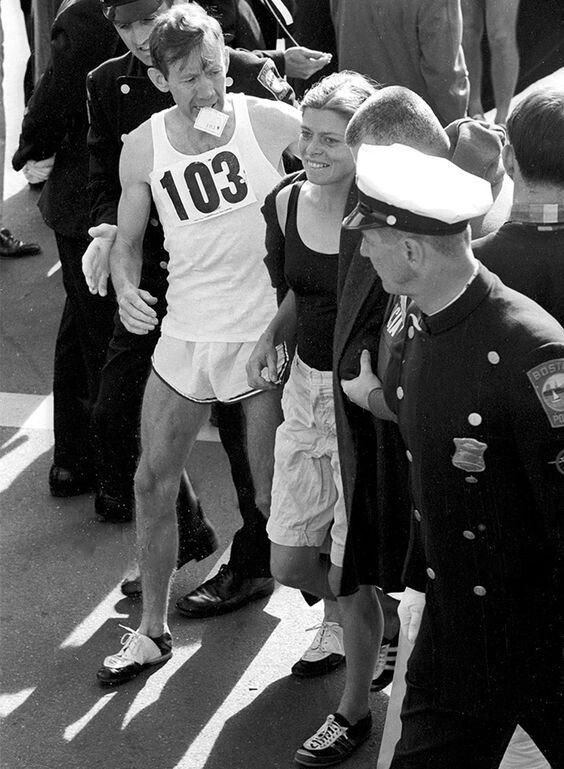
In 1966, Bobbi Gibb became the first woman to run and complete the Boston Marathon, doing so unofficially as women were not allowed to officially compete at the time. She repeated her unofficial victories in 1967 and 1968. Gibb’s pioneering efforts challenged prevailing gender norms and paved the way for the inclusion of women in long-distance running events.
Sara Mae Berman (1969–1971)
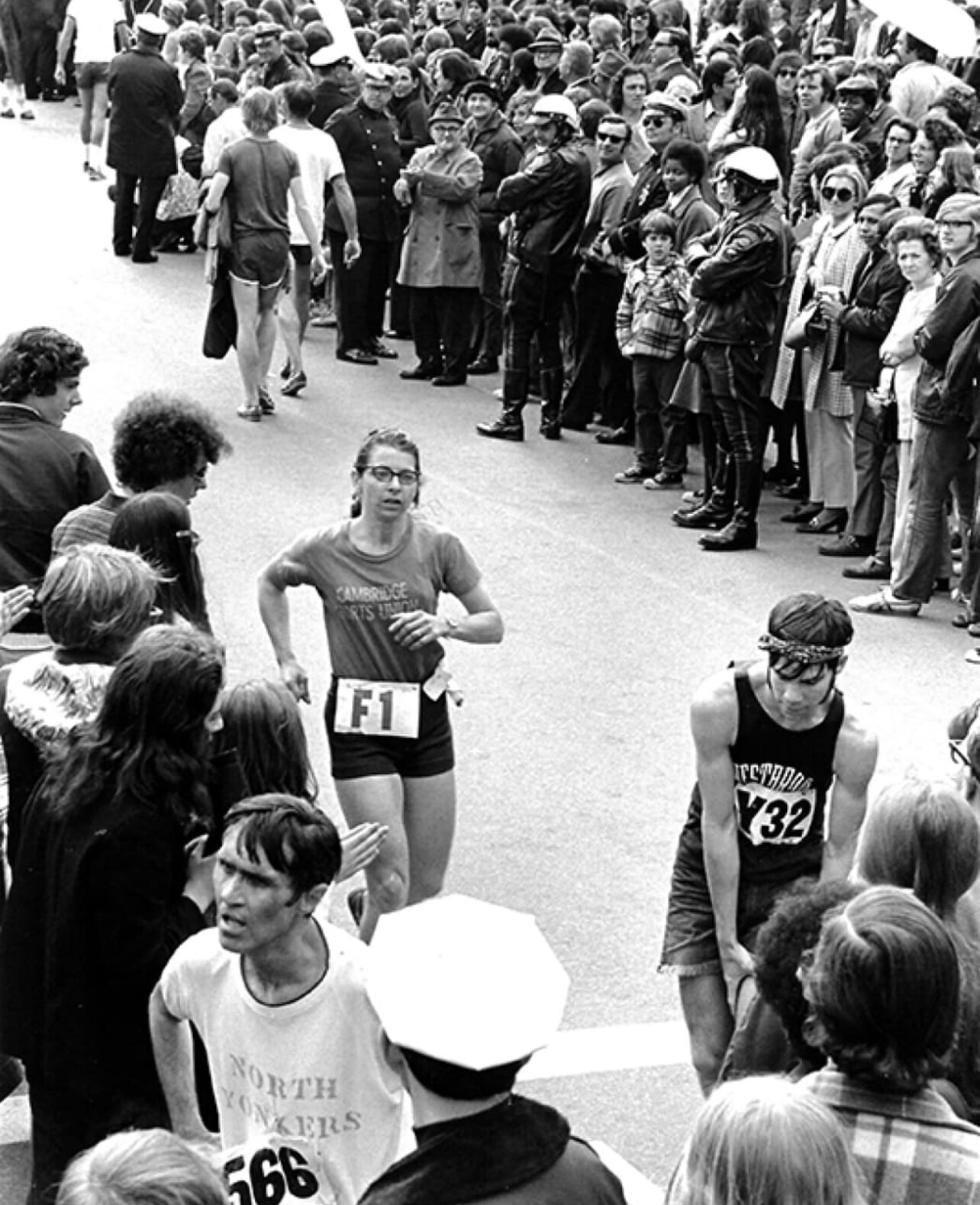
Sara Mae Berman was the first woman to cross the finish line at the Boston Marathon for three consecutive years from 1969 to 1971, during a time when women were still not officially recognized in the race. Her victories were instrumental in advocating for the official inclusion of women in the marathon, which was realized in 1972.
Uta Pippig (1994–1996)

German runner Uta Pippig achieved three consecutive official victories at the Boston Marathon from 1994 to 1996. Her 1994 win set a then-course record of 2:21:45. Pippig’s 1996 victory was particularly notable as she overcame significant physical challenges during the race, demonstrating remarkable resilience and determination.
Fatuma Roba (1997–1999)
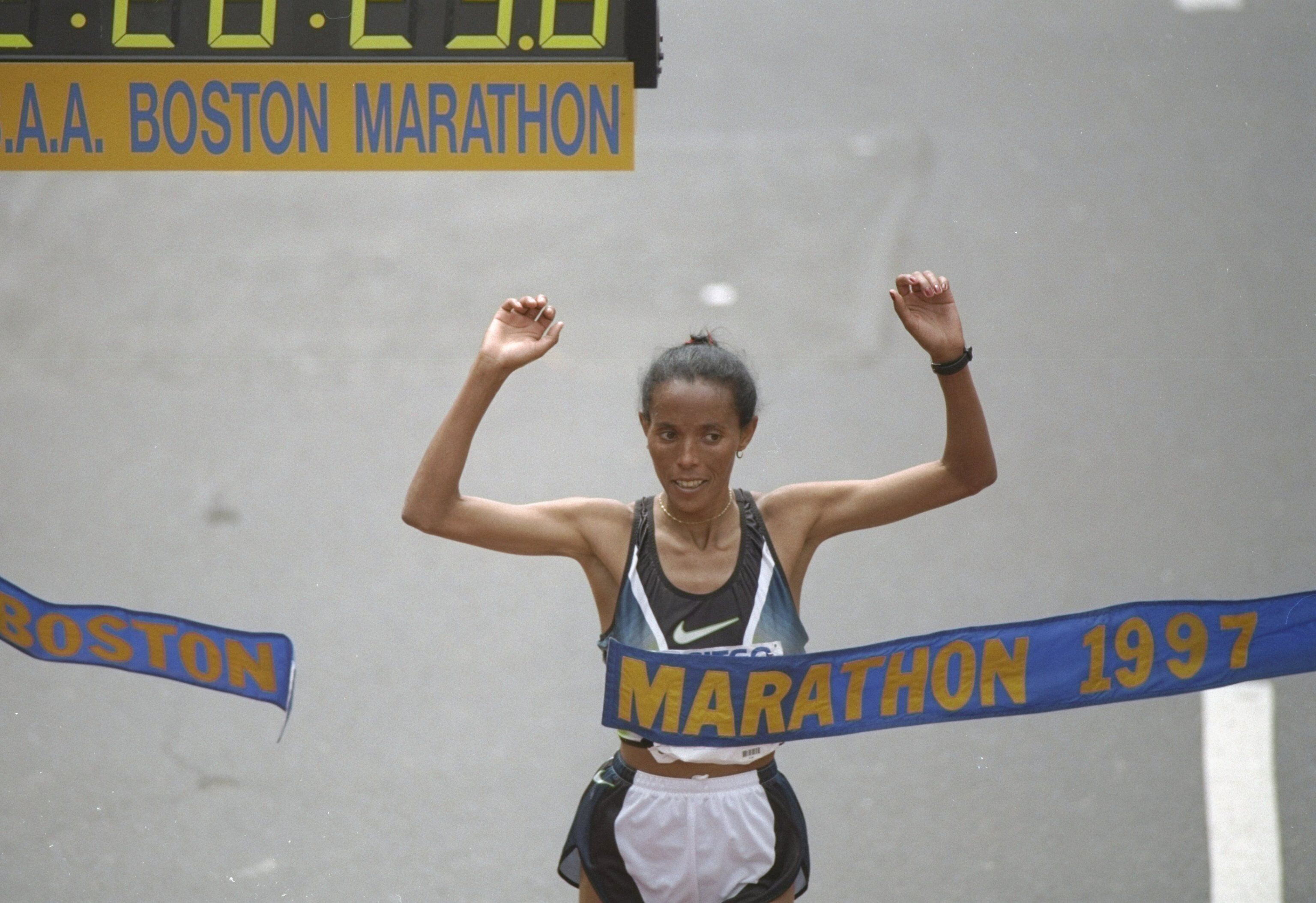
Ethiopia’s Fatuma Roba secured three consecutive Boston Marathon titles from 1997 to 1999, becoming the first African woman to win the event. Her victories followed her gold medal performance in the marathon at the 1996 Atlanta Olympics, solidifying her status as one of the premier long-distance runners of her time.
by Boris Baron
Login to leave a comment
Distance Running Takes the Spotlight at the World Indoor Championships in China
After years of delays and anticipation, the 2025 World Athletics Indoor Championships will finally unfold in Nanjing, China, from March 21 to 23. While sprints and field events always generate buzz, this edition promises to be a landmark for distance running—with some of the world’s best athletes converging to test themselves against the clock, the field, and history.
At the center of it all is Jakob Ingebrigtsen, Norway’s Olympic gold medalist and world champion, who will attempt an ambitious and rare double in the 1500 meters and 3000 meters. If successful, he will join Ethiopian legend Haile Gebrselassie, who last accomplished the feat in 1999. Ingebrigtsen’s smooth stride, iron pacing, and fierce final kick have made him one of the most dominant middle-distance runners of the past decade. But with Ethiopian and Kenyan contenders lining up with fast times and bold strategies, neither race will be a solo effort.
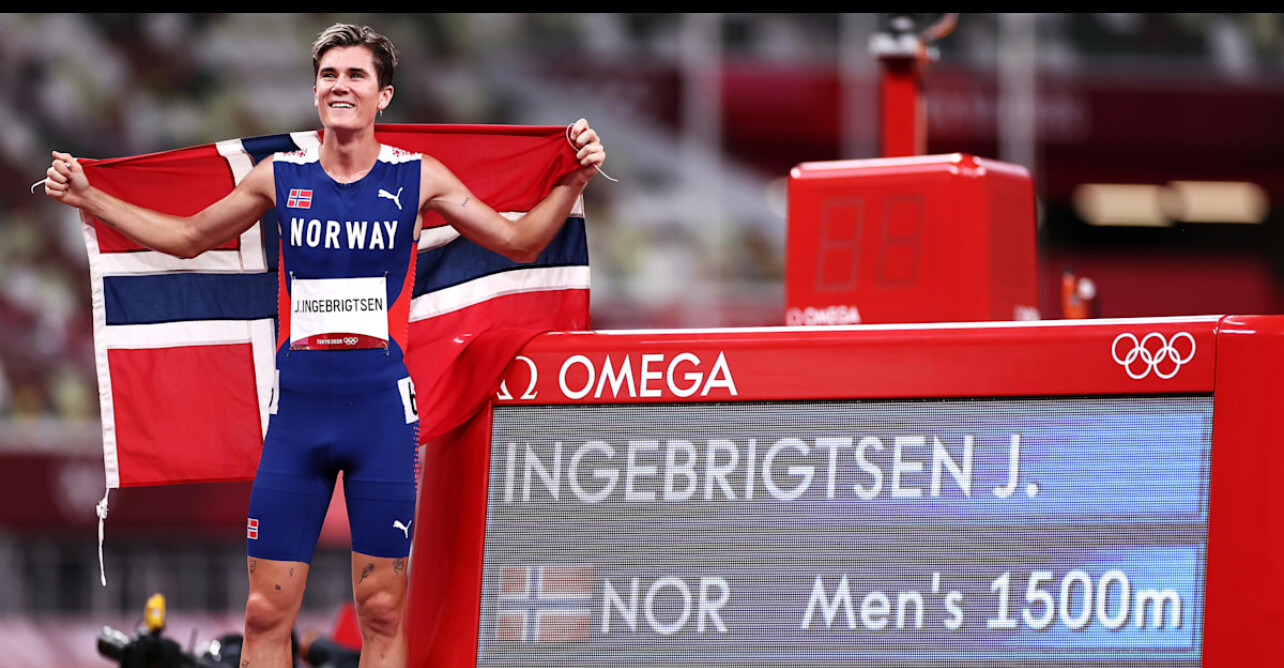
The 3000 meters is shaping up as one of the most exciting events of the meet. Alongside Ingebrigtsen, Ethiopia’s Selemon Barega—Olympic 10,000m champion—and Kenya’s Jacob Kropbring serious range and championship pedigree. With indoor tracks amplifying the tactical element and crowd energy, fans can expect a thrilling mix of surges, positioning, and all-out finishing kicks in the final laps.
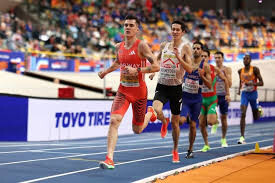
In the 800 meters, the men’s race is wide open. With no clear dominant figure, the door is open for rising stars from Spain, Algeria, and the United States to make a breakthrough. Indoors, the 800 is a physical, high-stakes affair, with tight turns and strategic jostling—where positioning is just as important as speed. The women’s 800 features a mix of veterans and rising talent, with sub-2:00 runners all seeking to time their peak perfectly for Nanjing.
The women’s 1500 meters could become a showcase for a new era of stars. While no single name stands above the rest going in, there are multiple women capable of taking the crown, including contenders from Great Britain, Ethiopia, and Australia. As with the men’s race, the tight indoor track places a premium on tactical patience and decisive moves.
Also featured is the distance medley relay, a relatively new but fan-favorite event that brings a unique blend of speed and endurance. Countries with depth across the 400, 800, 1200, and 1600-meter legs will have the advantage, and the energy in the building is expected to be electric when teams hand off for the final mile leg.
Nanjing’s fast indoor surface and tightly packed arena create the perfect environment for records, surprises, and heroic runs. After years of waiting, the distance events at these World Indoor Championships promise to be the heart of the competition—where strategy, stamina, and raw speed will collide on the world stage.
by Boris Baron
Login to leave a comment
World Athletics Indoor Championships
World-Class Competition Lands in China: 2025 World Athletics Championships The global spotlight shines on China as it hosts the 2025 World Athletics Championships, bringing together the planet’s most elite runners, jumpers, and throwers. This prestigious event, organized by World Athletics, represents the pinnacle of track and field competition—where national pride, personal records, and world titles are on the line. ...
more...Ethiopia Assembles Stellar Squad for World Athletics Indoor Championships Nanjing 2025
The Ethiopian Athletics Federation has unveiled a formidable lineup for the upcoming World Athletics Indoor Championships, set to take place from March 21 to 23, 2025, at the Nanjing Sports Training Centre’s Indoor Athletics Arena in Nanjing, China.
Highlighted Athletes:
• Tsige Duguma: The reigning 800m indoor champion, Duguma clinched gold at the 2024 World Athletics Indoor Championships in Glasgow. She further showcased her prowess by securing a silver medal in the 800m at the 2024 Paris Olympics with a personal best of 1:57.15.
• Freweyni Hailu: Hailu captured the 1500m title at the 2024 World Indoor Championships. Her consistent performances have solidified her status as one of Ethiopia’s premier middle-distance runners.
• Gudaf Tsegay: The reigning World 10,000m champion, Tsegay has been selected for the 1500m event in Nanjing. She recently recorded a world-leading time of 3:53.92 in Torun, marking the second-fastest indoor 1500m performance in history, trailing only her own world indoor record.
• Samuel Tefera: A two-time world indoor 1500m champion, Tefera aims to defend his title and further cement his legacy in middle-distance running.
• Berihu Aregawi: The Olympic 10,000m silver medallist is set to compete in the 3000m event, bringing his endurance and tactical acumen to the indoor track.
Wild Card Entries:
Due to their outstanding performances in the World Athletics Indoor Tour, both Tsige Duguma and Freweyni Hailu have secured wild card entries for the championships. These wild cards permit Ethiopia to field three athletes in specific disciplines, enhancing the team’s competitive depth.
Event Overview:
The World Athletics Indoor Championships serve as a global stage for athletes to compete at the highest level in indoor track and field events. Originally slated for 2020, the Nanjing championships faced postponements due to the COVID-19 pandemic but are now set to proceed in March 2025.
Ethiopia’s delegation reflects the nation’s rich tradition in middle and long-distance running. With a blend of defending champions and rising stars, the team is poised to make a significant impact at the championships.
Login to leave a comment
Shelby Houlihan’s Redemption Run – Back on Track After a Four-Year Ban
With her suspension concluding on January 13, 2025, Houlihan made a remarkable return to the track. On February 1, 2025, she competed in the Razorback Invitational at the Randal Tyson Indoor Track Center in Fayetteville, Arkansas. Demonstrating her enduring talent and resilience, Houlihan won the 3,000 meters with a time of 8:31.56, setting a new meet record and breaking the facility record previously held by Parker Valby.
Continuing Her Comeback
Building on her initial success, Houlihan competed in the Bruce Lehane Scarlet & White Invitational on February 8, 2025. She delivered an impressive performance in the mile, finishing with a time of 4:20.30. This achievement not only set a new facility record but also marked the second-fastest indoor mile ever recorded by an American woman.
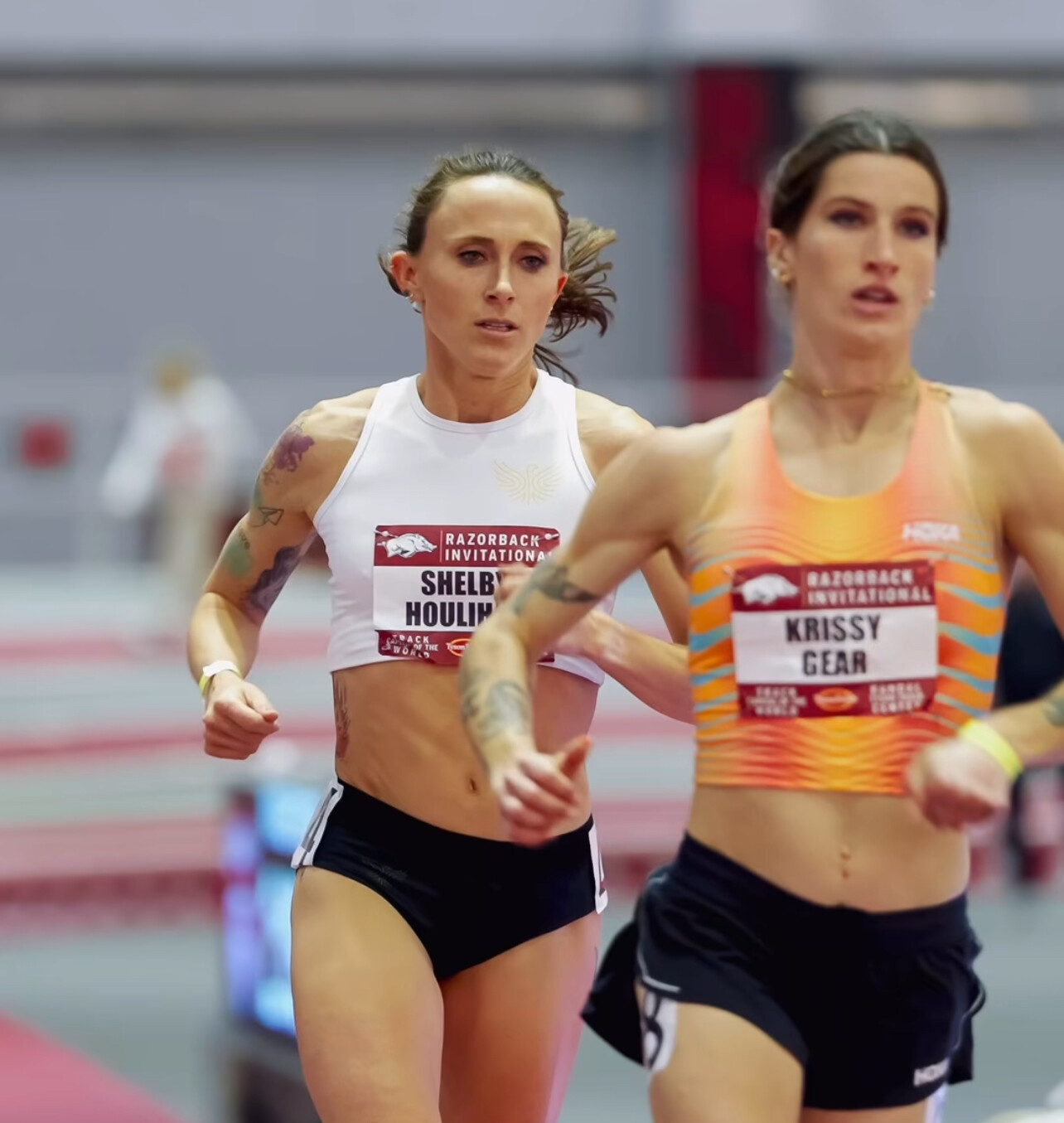
Qualifying for the World Indoor Championships
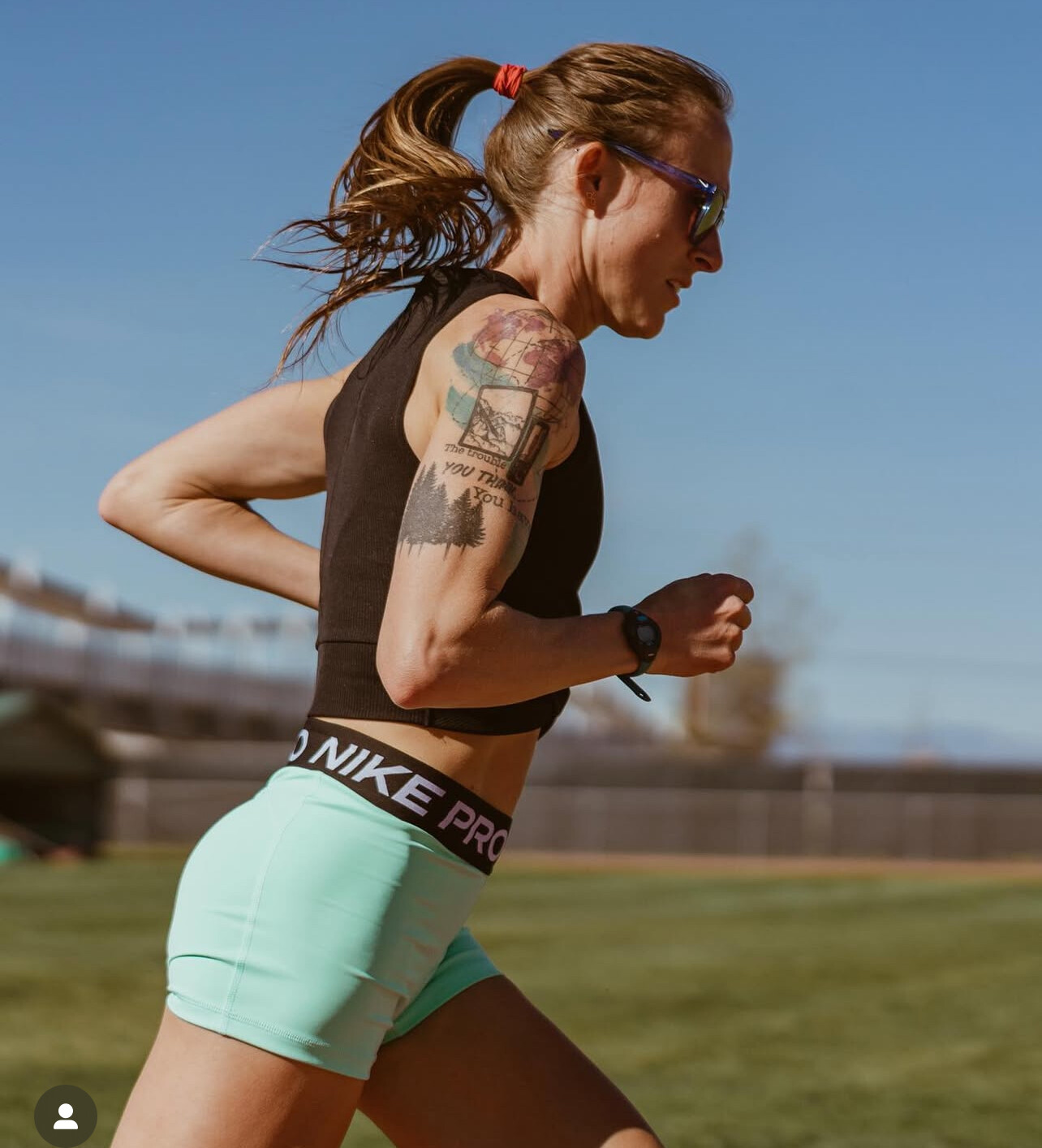
Houlihan’s comeback gained further momentum at the U.S. trials on February 22, 2025, where she competed in the 3,000 meters. She finished second with a time of 8:48.43, narrowly behind Nikki Hiltz, who won in 8:48.28. This performance qualified Houlihan for the World Indoor Championships, signaling her readiness to rejoin the international competitive arena.
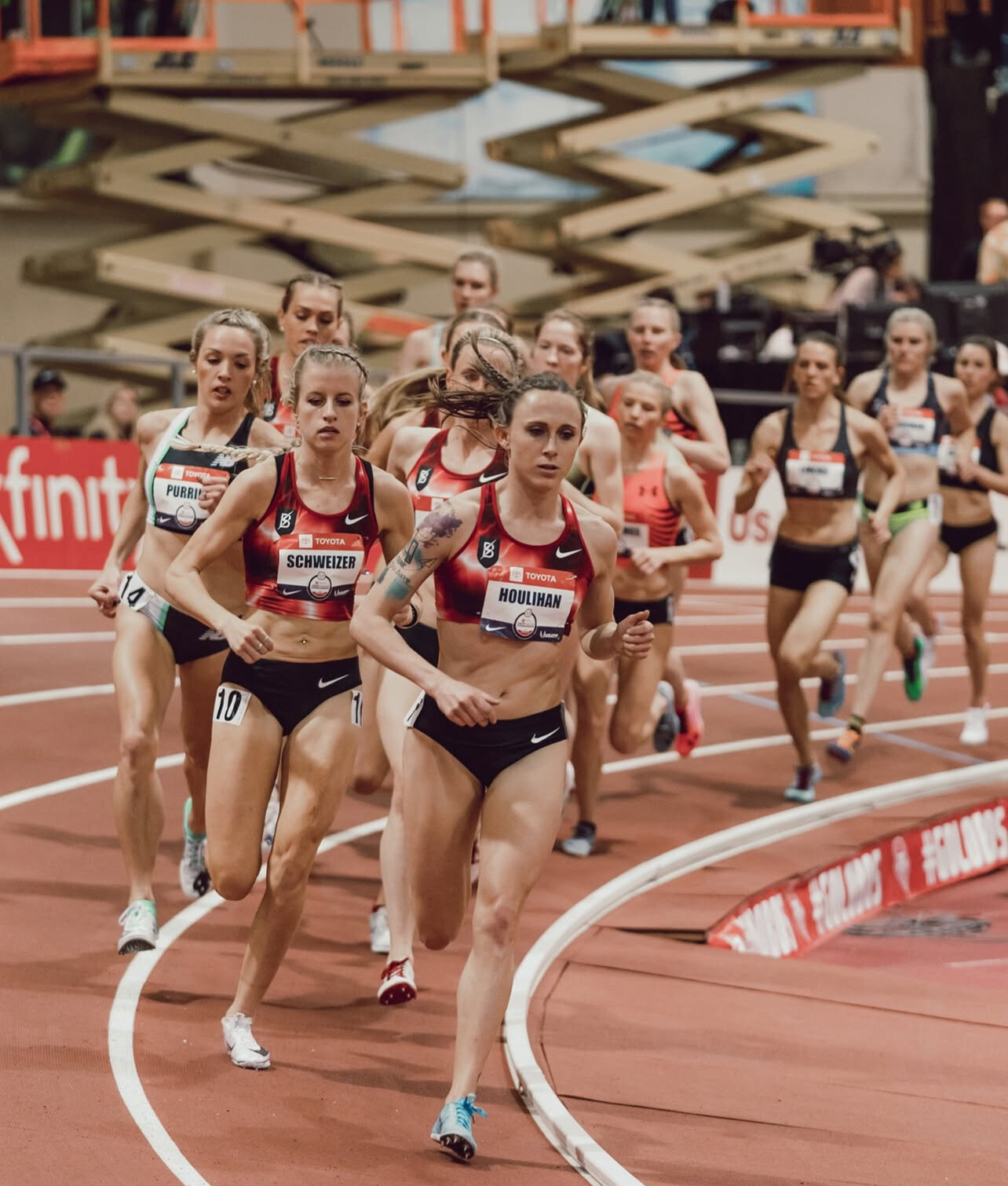
Looking Ahead
Houlihan’s swift return to top form after a prolonged absence underscores her dedication and resilience. As she sets her sights on upcoming competitions, including the World Indoor Championships, the athletics community watches with anticipation to see how her journey unfolds.
by Boris Baron
Login to leave a comment
Three track workouts to propel you into indoor season
The season of running in tiny circles is back; soon, we’ll be watching world class athletes racing around a 200m loop at their indoor season opener. Track is a fun, exciting sport–even in the winter–and there’s no reason why you need to be left out. If you’re looking to tune up your turnover and spice up your speedwork on the indoor track this year, here are three workouts to kickstart your track sessions.
Calculate your 800, 1,500m and 3,000m paces using this pace chart.
Reverse ladder
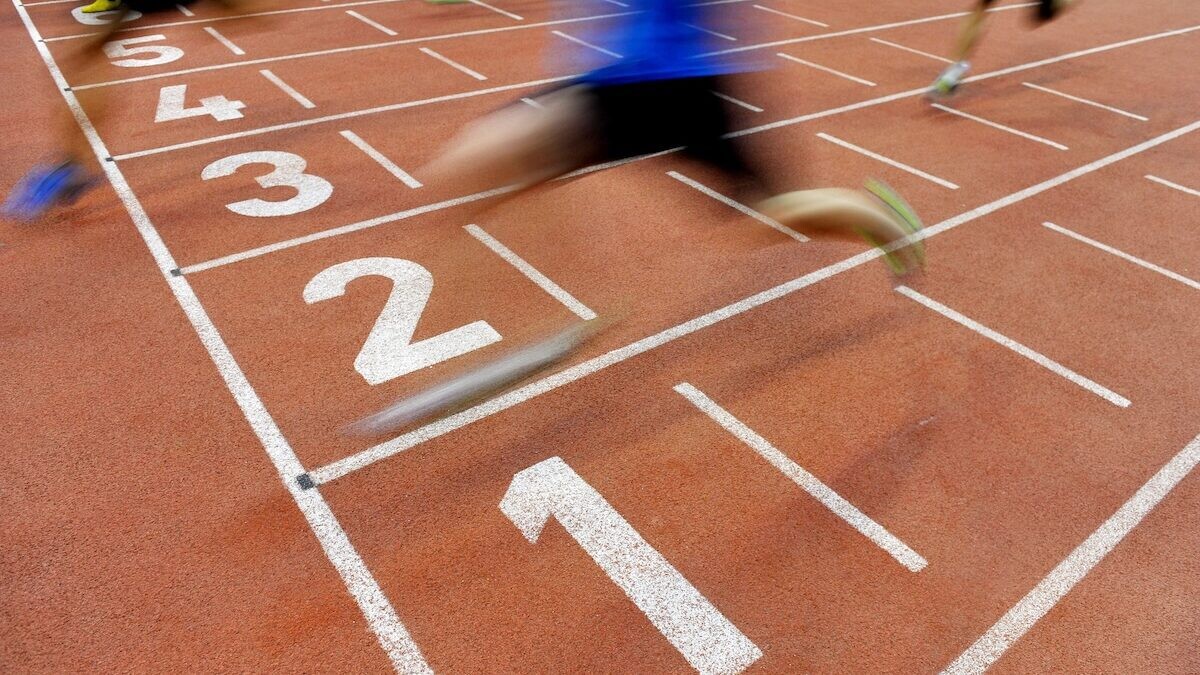
Set 1: 5 x 600m (at 3,000m pace) with 80 seconds rest. Set rest: 5 minutes
Set 2: 4 x 300m (at 1,500m pace) with 90 seconds rest. Set rest: 5 minutes
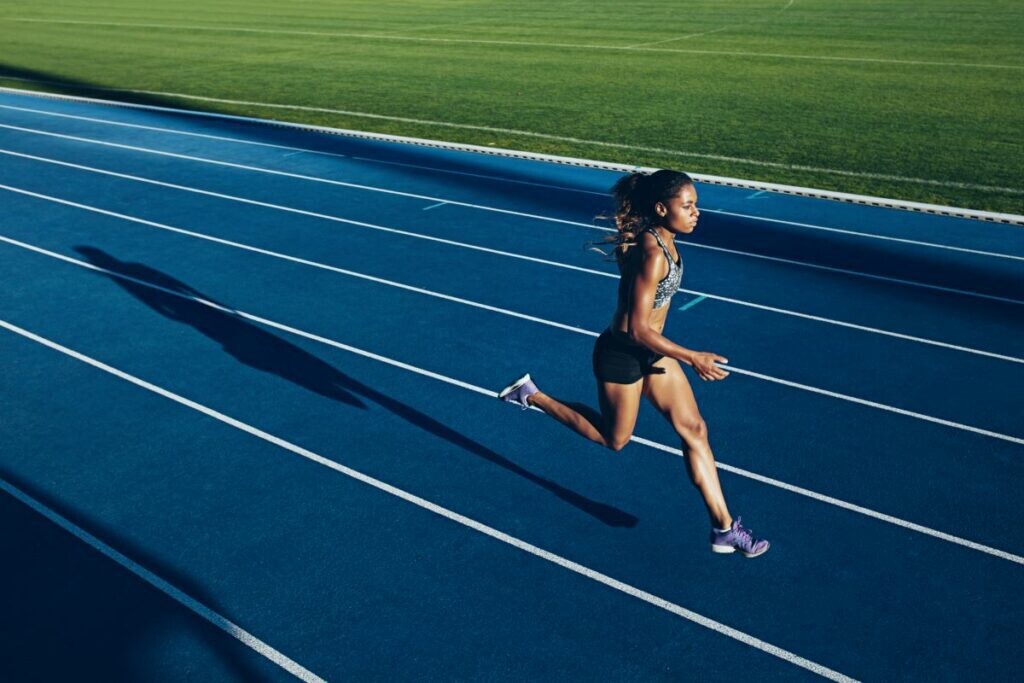
Set 3: 3 x 200m (at 800m pace) with 90 seconds rest.
Drop distance
Set 1: 3 x 800m (beginning at 3,000m pace) with 2 minutes rest. Set rest: 5 minutes.
Set 2: 400m, 300m, 200m with 90 seconds rest. Begin at a faster pace than the 800s, and speed up as the reps shorten. Set rest: 4 minutes.
Set 3: Same as set 2, slightly sped up, if possible.
400 repeats
Set 1: 10 x 400m with 60 seconds rest. Start at 3,000m pace and aim to speed up by a second every other rep. Set rest: 5 minutes.
Set 2: 2 x 200m with 60 seconds rest at 800m pace.
Warmup/cooldown
Follow your 10 to 15 minutes of warmup with some drills and strides on the track–to avoid injury, it’s important to make sure you warm up completely before hopping into your session, especially if you just returned from the winter weather. If your legs feel especially sore or lactic after your final set, conclude your workout with some light, form-focused strides to shake out them out. Cap off the session with a 10- to 15-minute cooldown.
Outdoor/treadmill alternatives
If you don’t have access to an indoor track or don’t feel like running in circles, you can use time and effort-based cues to modify the workout to suit outdoor or treadmill running. Use the pace chart to find out your goal running time for each interval, and aim for time during each rep, instead of distance. If running outside, make sure you find a clear path or road with lots of traction for the fast reps.
3,000m pace: steady, comfortable effort. You should feel relaxed enough to maintain brief conversations with your training partners.
1,500m pace: comfortably hard effort. Speaking is limited to one or two words at a time with training partners.
800m pace: hard, intense effort. Your breathing will be too labored to carry a conversation. (These reps are very short anyway–the chat with your running buddies can wait!)
by Cameron Ormond
Login to leave a comment
'Big goals coming' - Masai Russell hints at professional debut at Millrose Games as preps for 2025 gather pace
Russell defied the odds to win 100m hurdles at Paris Olympics and has acknowledged the need to improve her time in 2025 with her busy schedule set to start in February,
Paris Olympics 100m hurdles champion Masai Russell is back to work with even better plans for 2025.
The American, who is the NCAA record holder over the distance, said she has remarkably improved this year compared to 2023 and wants to break world indoor records. She is banking on her mental fortitude which she believes has drastically improved, particularly after the grueling Paris Olympics in which the 24-year-old cruised to victory on her debut at the quadrennial championship.
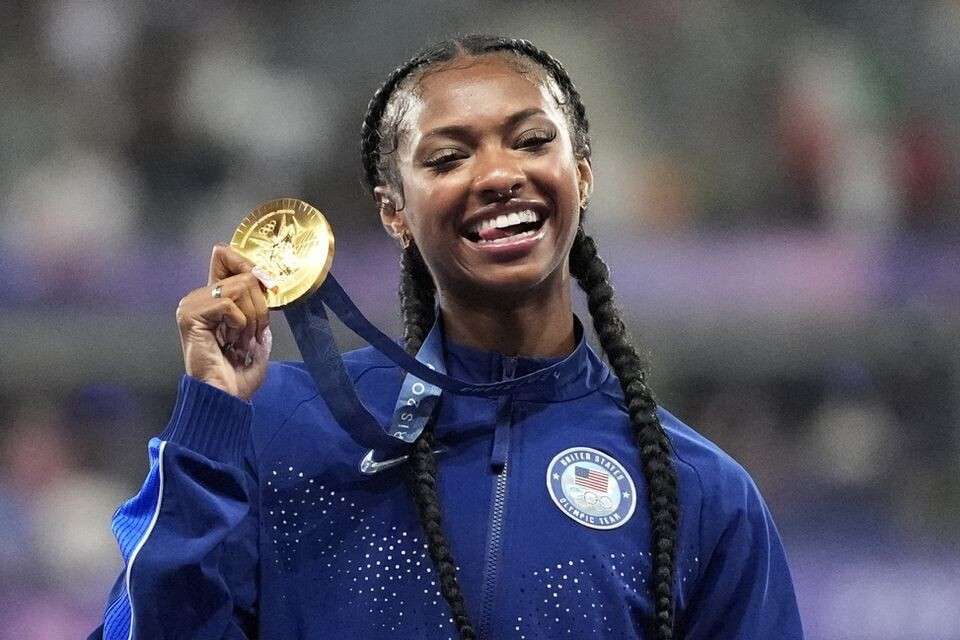
“I think I’m ahead of where I was last year, just mentally and physically. I have some big goals coming," Russell, whose personal best of 12.25 seconds over 100m hurdles is the fifth of all-time, told CitiusMug.
Part of her 2025 targets include running faster times as she reckons that every competitor strives to become better and the competition doesn't make it easy on anybody. "The women’s 100m hurdles doesn’t make it easy on anybody. I know that I have to come in even stronger, even faster, even better. I’m looking to break the world record indoors this season and win the world indoor title,” she highlighted.
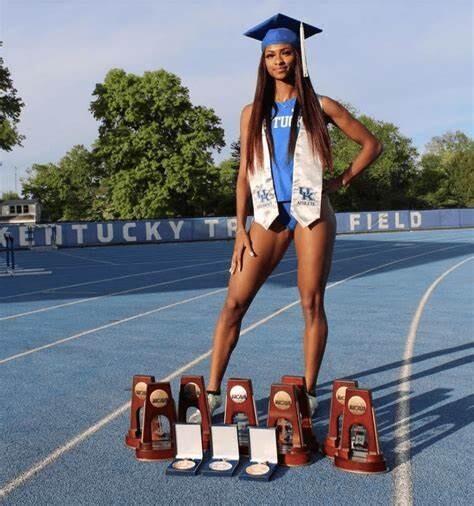
Evans Ousuru • 19:04 - 08.12.2024
Russell defied the odds to win 100m hurdles at Paris Olympics and has acknowledged the need to improve her time in 2025 with her busy schedule set to start in February,
Paris Olympics 100m hurdles champion Masai Russell is back to work with even better plans for 2025.
The American, who is the NCAA record holder over the distance, said she has remarkably improved this year compared to 2023 and wants to break world indoor records. She is banking on her mental fortitude which she believes has drastically improved, particularly after the grueling Paris Olympics in which the 24-year-old cruised to victory on her debut at the quadrennial championship.
ATHLETICS
‘I don’t want to add that much stress’ - Masai Russell explains biggest problem she is facing since buying new house
“I think I’m ahead of where I was last year, just mentally and physically. I have some big goals coming," Russell, whose personal best of 12.25 seconds over 100m hurdles is the fifth of all-time, told CitiusMug.
Part of her 2025 targets include running faster times as she reckons that every competitor strives to become better and the competition doesn't make it easy on anybody. "The women’s 100m hurdles doesn’t make it easy on anybody. I know that I have to come in even stronger, even faster, even better. I’m looking to break the world record indoors this season and win the world indoor title,” she highlighted.
ATHLETICS
'Gold was just the beginning' - Masai Russell fired up ahead of crucial 2025 season
At the same time, Russell, who in 2023, broke the collegiate record for the 60m hurdles after running 7.75s to beat Grace Stark's time of 7.78s set in 2022, confirmed to race at the 117th edition of the Millrose Games.
"Olympic 100m hurdles champion is confirmed to race the 60m hurdles at the @MillroseGames at @ArmoryNYC on Feb. 8th. This will be her first appearance at the Millrose Games as a professional. She used to compete at the meet as a star at @Bullis_Track."
The Millrose Games is the world’s most prestigious Indoor Track & Field Competition. The February 8, 2025 event is set for, The Armory, a state-of-the-art facility that has been nicknamed 'The Fastest Track in the World' in the New York City.
by Evans Ousuru
Login to leave a comment
NYRR Millrose Games
The Pinnacle of Indoor Track & Field The NYRR Millrose Games, first held in 1908, remains the premier indoor track and field competition in the United States. The 2025 edition will once again bring the world’s top professional, collegiate, and high school athletes to New York City for a day of thrilling competition. Hosted at the New Balance Track &...
more...Adel Mechaal returns to the Nationale-Nederlanden San Silvestre Vallecana
The Nationale-Nederlanden San Silvestre Vallecana begins its countdown to the 60th anniversary of the best 10K in the world.
In this special edition, the International event promises to raise emotions to unprecedented heights, bringing together a large representation of national and international athletics on December 31.
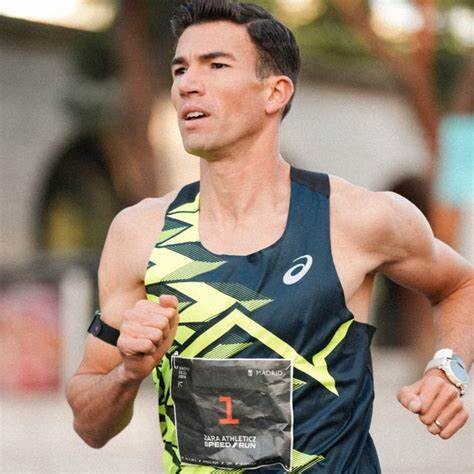
After a few years of absence, the Nationale-Nederlanden San Silvestre Vallecana will once again enjoy the elegant strides of Adel Mechaal.
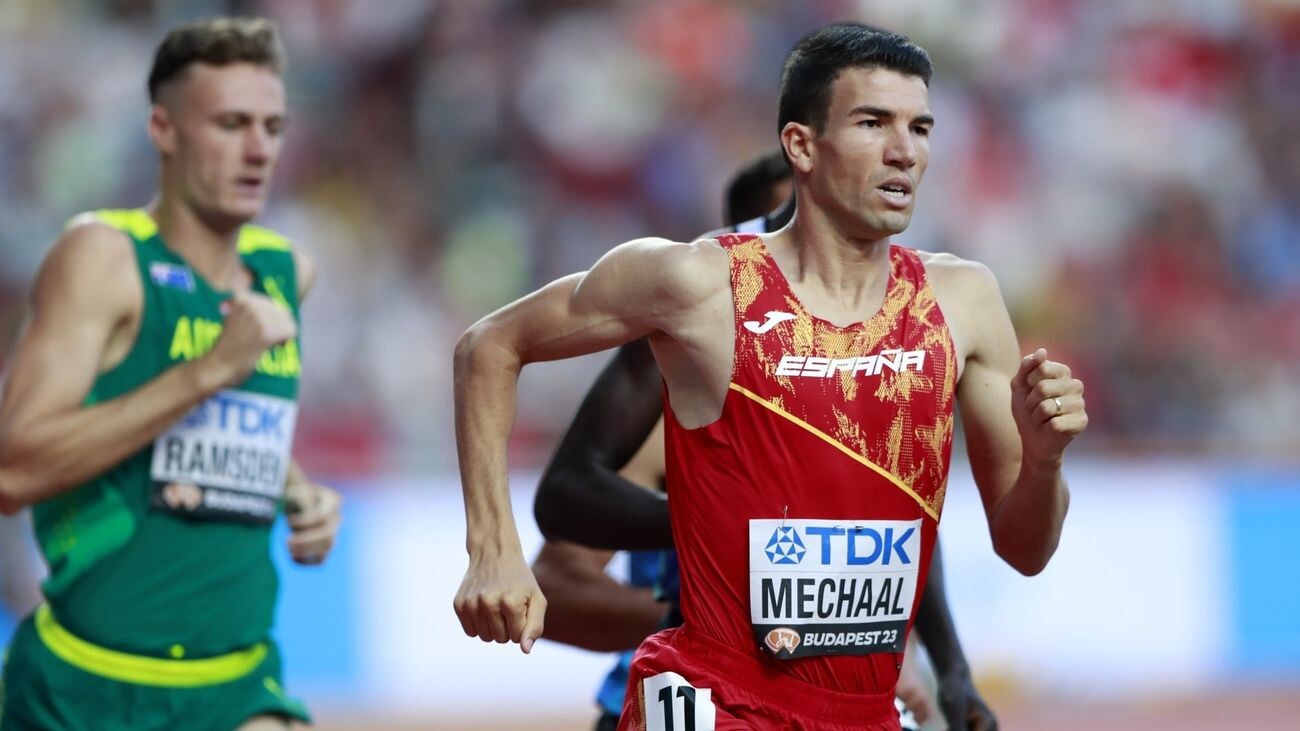
The national record holder, in 1500 meters in indoor track and European champion in 3,000 meters in 2017, is in one of the best moments of his career, as he recently evidenced in the streets of Madrid, in the Speed Run, to become the fastest Spaniard in history in a 10K with a brutal record of 26:46.
Adel Mechaal dreams of glory in the end-of-year classic, as do two Madrilenians who know what it's like to run fast in the Nationale-Nederlanden San Silvestre Vallecana. Jesús Ramos returns after climbing the podi
by Marca
Login to leave a comment
Saint Sylvester Road Race
The Saint Silvester Road Race (Portuguese: Corrida Internacional de São Silvestre) is a long-distance running event, the oldest and most prestigious street race in Brazil. Regarded as the main international event in Latin American athletics, the Brazilian competition is held yearly in the city of São Paulo on December 31. São Paulo's race was originally known as a "marathon", although...
more...Pro runner’s next-level workout on the road to L.A. Olympic medal
The newest member of team New Balance Boston, Parker Valby, has settled into her Boston life with her fellow Olympian training partners and coach Mark Coogan. After setting NCAA records in the outdoor 5,000m and 10,000m, the former Florida Gator began her professional running career as a New Balance athlete. A video posted by FloTrack on Wednesday dove into a soft-surface November workout during the base-building season in the lead-up to the indoor track season–which Valby demolished.
“Most people don’t know Parker as a person,” Coogan said. “They just see her as a runner. She’s a wonderful young lady and she’s fitting in great.” The 22-year-old announced her surprise signing with New Balance in October, unexpectedly straying from Nike after becoming their first female track and field athlete to sign a Name, Image, Likeness (NIL) deal. Industry sources report that Valby’s contract is upwards of USD 700,000 and will be in play until well past the 2028 L.A. Olympic Games.
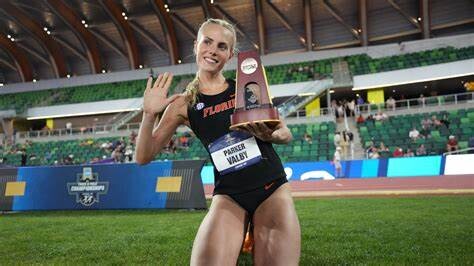
“It was definitely a learning experience,” Valby said about her time at the Paris Olympics. “It was my first time racing outside the NCAA. I’m very grateful for the experience and the lessons I took from it–it wasn’t my ideal performance that I wanted, but I’m happy that I did it in hindsight, so I can be ready for L.A.”
“Parker said she wants to get a medal at the Olympics in L.A.,” Coogan added. “She’s gonna make us better, and hopefully we can make her better and she can do big things in the future.”

The workout path was roughly 1,000m, though Coogan admitted he wasn’t sure of the exact distance. The coach was aiming for the team to have a solid workout where the athletes could stick together. The target effort for the cross-country-style workout was to begin at threshold pace (comfortably hard). Other pro athletes at the practice include Paris Olympian Emily Mackay, 2020 Olympian Heather MacLean, and Coogan’s daughter, Katrina Coogan.
The workout: 3 x (2K, 2 minutes, 1K)
Set 1: 2 loops: 6:38, 1 loop: 3:06
Set 2: 2 loops: 6:20, 1 loop: 3:02
Set 3: 2 loops: 6:01, 1 loop: 2:50
The video shows Valby sharing the lead with her teammates before pulling away from the group during the final set. An extra 1K loop was added on, which Valby completed in 2:53.
Although Valby is younger and less experienced than her teammates, Coogan says she’s a bit stronger than the other women because she comes from a 10,000m background. The other athletes’ main events are 1,500m and 5,000m.
“We work together, we meet in the middle,” Valby said. “Train with others to make yourself better.”
According to MacLean, the team has tried to create a culture of respect and support. “[Parker] brings a fresh new perspective to everything,” she said. “I learned something from her, I hope she learned something from us.”
“Almost like a college cross-country team, we’ve made a team into a family, and I think that’s one of the reasons we’re so successful,” Coogan said. His Instagram revealed that the team hit the indoor track for the first time last week. If all the athletes stay healthy, the whole New Balance Boston team will open their season at the New Balance Grand Prix on Feb. 2.
by Cameron Ormond
Login to leave a comment
LA 2028 Summer Olympics Games
Discover how the Los Angeles Candidature Committee describes their vision for the Games and the legacy they plan to leave behind: For centuries, people have been following the sun to California – to a coastal paradise of beautiful weather, inspiring landscapes and an ocean of possibilities. Since it was first settled, LA – the City of Angels – has built...
more...Grant Fisher to Race Cole Hocker at 2025 Millrose Games in Battle of America’s Best Distance Runners
America’s two best distance runners are set to square off at America’s most prestigious indoor track meet.
On February 8, Grant Fisher will race Cole Hocker over 3,000 meters at the 2025 Millrose Games at the Armory. Fisher is the reigning US champion in the 5,000 and 10,000 meters and a double Olympic medalist. Hocker is the US and Olympic champion in the 1500 meters. Let the hype commence.
Over the last three years, the men’s 3,000 at Millrose has produced some of the best racing of the indoor season. In 2022, Geordie Beamish used a killer kick to upset Hocker and Cooper Teare in the home straight. In 2023, miler Josh Kerr surprisingly stepped up and won in a big pb of 7:33.47, demonstrating the endurance chops that would presage his World Championship 1500 victory six months later. Last year, the event was lengthened to two miles, and Kerr streaked to a world indoor record of 8:00.67 after Fisher tried and failed to break him during the second mile.
The top four finishers at 2024 Millrose would combine to earn seven global medals in 2024. Kerr claimed World Indoor gold in the 3,000 and Olympic silver in the 1500. Fisher, the runner-up in an American record of 8:03.62, took Olympic bronze in the 5,000 and 10,000. Hocker, 3rd in 8:05.70, claimed World Indoor silver and Olympic gold in the 1500. And fourth-placer Beamish (8:05.73) would defeat Hocker to win the World Indoor 1500 title three weeks later in Glasgow.
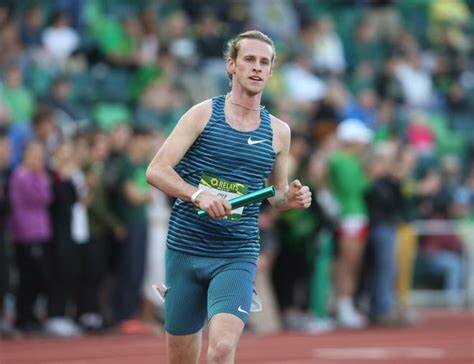
“You look back at that race, that was a pretty loaded field,” Fisher said on this week’s LetsRun.com Track Talk podcast where he announced he would be running Millrose. “Maybe not everyone said that at the time. They might’ve said Josh was the class of the field. But now post-Olympics, you see some people did really, really well throughout that season, and it all kind of started at Milrose at that two-mile. So it’ll be a fun spot to get things rolling again.”
More athletes will be announced as part of the field in the coming weeks, but Fisher versus Hocker should be enough to get any American distance running fan excited. This sort of matchup does not happen often. They were both Foot Locker Cross Country champions as high schoolers. They were both NCAA champions as collegians. They are both national champions as professionals. More than that, Hocker is the fastest American ever in the 1500 meters; Fisher holds the same title in the 3,000, 5,000, and 10,000. They are two of America’s brightest distance talents, now or ever, and they are firmly in their primes.
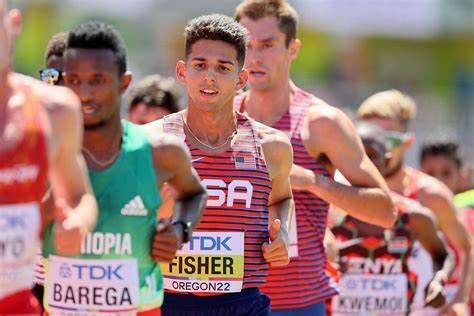
Fisher, 27, and Hocker, 23, did race three times this year, with Fisher prevailing in all three matchups: the 2-mile at Millrose, the 5,000 at the LA Grand Prix on May 17, and the Olympic Trials 5,000 final on June 30. But they’ve never raced each other as Olympic medalists. And that hits different.
Since 1968, four American men have medalled in the Olympic 1500 — Leo Manzano, Matthew Centrowitz, Hocker, and Yared Nuguse. During that same span, only two Americans have medalled in the Olympic 5,000 — Paul Chelimo and Fisher. Only once has one of the 1500 medalists raced one of the 5000 medalists. That came in May 2018, when Chelimo defeated Centrowitz in a 1500 at the Payton Jordan Invitational.
That’s it. Just one matchup between an American 1500 medalist and an American 5,000 medalist in more than half a century. On February 8 at Millrose, we’ll get to see the second, and it will come at the crossover distance of 3,000 meters. In their three battles in 2024, Fisher’s strength prevailed over Hocker’s kick, though Fisher acknowledged he had home-event advantage.
“I didn’t know I was 3-0 against Cole, but to be fair, I’ve never met him at his distance,” Fisher said. “So that gives me a little bit of an advantage. That would be like saying I’m undefeated against him at 10k or something — I don’t think that’s a fair comparison. So yeah, maybe I’ll drop down, race him in a 1500, have it be more of a balanced record to show. But Cole ran incredibly well in the 2-mile last year at Milrose.”
In 2025, however, Hocker will be looking to erase that advantage; he has spoken of wanting to be the best in the world at not just the 1500 meters, but the 5,000 as well. An early showdown against the Olympic bronze medalist is a great way to test the progess he is making.
So who will win on February 8? Hocker’s speed? Fisher’s strength? Or perhaps someone else entirely? We’ll find out in less than two months.
“It will be a really fun opportunity,” Fisher said. “Last year it was fast. I’m sure it’ll be fast this year. So it’s gonna be fun.”
by Jonathan Gault
Login to leave a comment
NYRR Millrose Games
The Pinnacle of Indoor Track & Field The NYRR Millrose Games, first held in 1908, remains the premier indoor track and field competition in the United States. The 2025 edition will once again bring the world’s top professional, collegiate, and high school athletes to New York City for a day of thrilling competition. Hosted at the New Balance Track &...
more...When You’re Sidelined, Cross-Train Your Way Back to Health Before a Goal Race
Here’s how Liza Corso made the podium at the Paralympic Games by making her bike and swim workouts as intense as her running regimen.
Leading up to the 2024 Paralympic Games, Liza Corso was pedaling furiously on a stationary bike parked on the patio of her condo in Nashville, Tennessee. In the brutal summer heat, the two-time Paralympian closed her eyes while visualizing the women’s 1500-meter final.
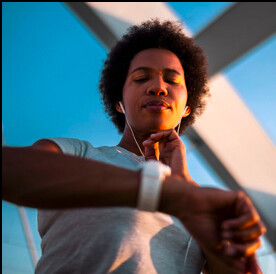
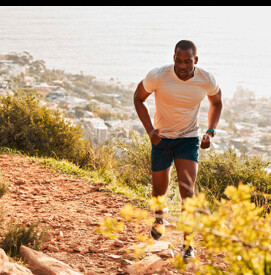
She imagined the purple track at Stade de France and the uniforms of competitors she’s faced before in the T13 classification (athletes with vision impairment). With pop music blaring in her headphones, Corso pedaled faster in anticipation of the biggest race of her career.
On August 31, Corso’s visualizations finally came to fruition. After spending six weeks cross-training while healing a stress fracture in her left femur, the Lipscomb University senior earned bronze in 4:23.45, just over a second behind two-time Paralympic champion Tigist Mengistu of Ethiopia and silver medalist Ezzahra El Idrissi of Morocco. After the race, the athlete from Newmarket, New Hampshire, shared on Instagram she only ran eight miles over the course of six weeks in the lead-up to the event in a brutal buildup that tested her mentally and physically.
So, how did the 21-year-old pull off winning a Paralympic medal while healing from an injury and not being able to run? In an interview with Runner's World, Corso shared the many highs and lows of the cross-training regimen that helped her safely prepare for a standout performance on the world stage.
July 1-July 26: Processing the Injury
About three weeks before the U.S. Paralympic Trials on July 18-20, Corso started feeling pain in her left quad. She went to see the doctor and got an MRI in the area where her quad meets her hip, which showed she had tendonitis. After recovering from a stress fracture in her tibia during the indoor track season earlier this year, the diagnosis was a relief for Corso. “I didn’t want tendonitis, but I was scared of something [in the] bone so I was like, this is the best case scenario. I can keep running through it,” she said.
Though the pain continued to get worse leading up to the national championship in Miramar, Florida, Corso still managed to compete in the women’s 1500 meters and earn a spot on Team USA. But with the pain intensifying, Corso
Though Corso struggled to feel like she was building the same level of fitness, seeing her heart rate reach 160 beats per minute for 90-minute sessions and hover between 175 to 180 for hard workouts ended up being a source of encouragement. “My coach said, ‘Your heart doesn’t know the difference between if you’re running or if you’re biking,’” Corso said.
Late July to August 31: Monitoring the Pain
In the first two weeks after the Paralympic Trials and following her diagnosis, Corso’s main priority was to walk pain free. Working with her physical therapist, she focused on limiting any weight-bearing activity, using crutches when she wasn’t cross-training for the first three days post-diagnosis. While gradually using the crutches less and less, Corso was able to walk pain free without them about two weeks after the diagnosis.
Corso also incorporated blood flow restriction (BFR) into her training. The method involves the application of a cuff (tourniquet) proximally to the muscle that is being trained. The cuff is inflated to a specific pressure with the aim of blocking the blood vessels. The idea is to help strengthen muscles and promote healing, Corso said. She usually put the
“To be able to prove to myself that I didn’t let those [negative thoughts] win, and I chose the harder path—to keep a positive mindset and work through some pretty lonely and draining cross-training sessions—it all ended up being worth it,” she said.
Looking back on her experience this summer, Corso hopes other runners can find their own hard-fought victory amid the healing process, knowing how powerful team support and mental tools can be in difficult situations.
by Runners World
Login to leave a comment
‘I Can. I Will. I Must:’ Mantras and Affirmations That Propel Olympic Athletes to Victory
These motivating words from Olympians—and the stories behind them—can help you get through any tough run.
For all the drama it contained—including a fall by defending Olympic champion Athing Mu—the final of the women’s 800 meters at the 2024 U.S. Olympic Track and Field Trials was over in less than 2 minutes.
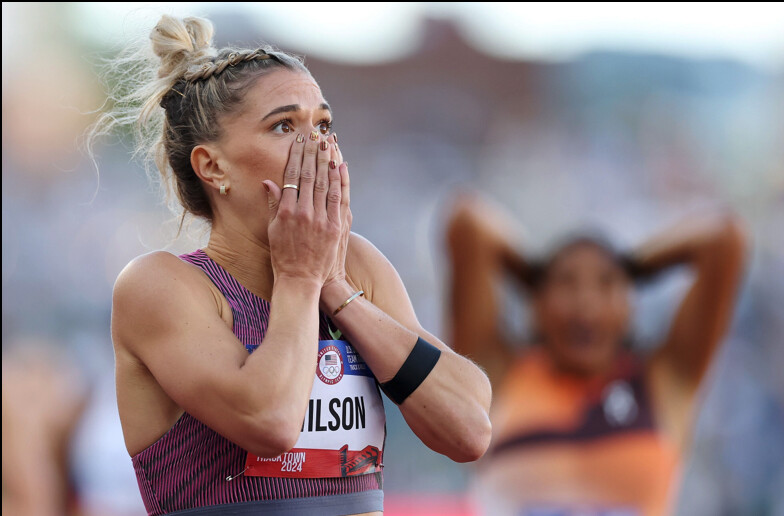
But for Allie Wilson, time stood still. “Everything, any mantra I’ve ever talked about, was rapid-fire flying through my brain,” she told Runner’s World. “‘Try to get top three.’ ‘Pass one more person.’ ‘1 percent.’ I was so calm, cool, and collected, like I’ve never felt before.”
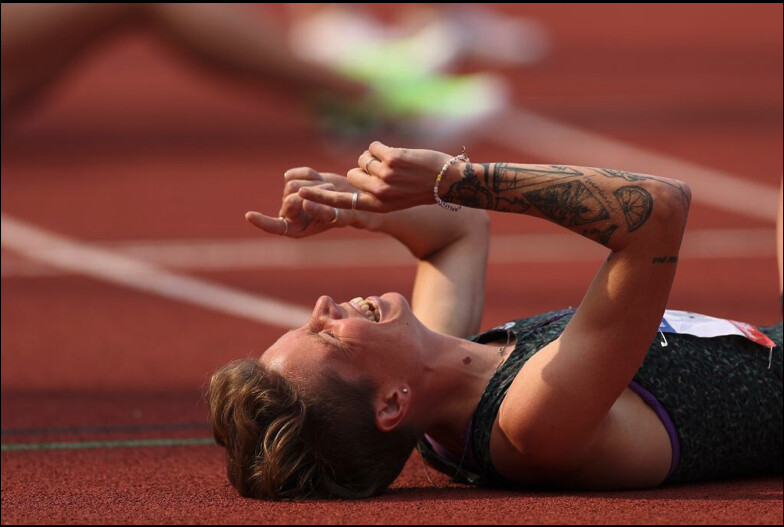
Buoyed by these confidence-boosting claims, Wilson placed second in a personal best 1:58.32 to earn a spot on Team USA.
She credits this flow state to her work with Bianca Martin, a mindset coach currently studying for her master’s degree in sport and performance psychology. Since meeting three years ago, the two have worked on many psychological aspects of performance. One of the most important, Wilson says, has been replacing negative thoughts with neutral or positive ones.
She’s far from the only track and field Olympian to use this approach to performance psychology. Many use spoken or written affirmations—statements that challenge negative thoughts and reinforce positive emotions—as well as mantras, a few words that might be repeated during a workout or race.
Here are the powerful phrases that got Wilson, 1500-meter champion Nikki Hiltz, and champion heptathlete Anna Hall to their first Olympics in Paris this summer. While mantras and affirmations tend to work best when they’re personal, you might find inspiration from their examples for your own big goals.
Looking for inspiration?
Swipe through the deck to find a mantra that resonates with you today!
Looking for inspiration?
Swipe through the deck to find a mantra that resonates with you today!
Allie Wilson’s Mantras“Just another race.”
Yes, the stakes at the Trials—and, before that, at the 2024 USA Indoor Track and Field Championships in Albuquerque in February—were higher than at most meets. But Wilson realized the more she kept her mindset and routine consistent, the better she performed.
“I’m running two laps around the track—that’s what I do every weekend,” says Wilson, a Nike athlete. “Why am I going to go berserk over it and start doing things all differently than I would, or freaking out? It’s the same thing at the end of the day; I’ve done it a million times.”
“I can win.”
In the days before the indoor championships, Wilson found herself nervously telling Martin she knew what was going to happen. Just like at every other major competition, she’d likely give it her all but come up just short. Martin stopped her and ordered her to say the opposite instead: “I can win.”
Wilson hesitated, but Martin insisted. “I would sit there and I wouldn’t speak for 10 seconds. And eventually, I would say it,” Wilson says.
Thanks to all that practice, it didn’t take nearly as long for the thought to surface during the race itself. “When it got really hard, all of a sudden, I was like, ‘Oh my god, I can win it,’” Wilson says—and she did, in 2:00.63.
“1 percent.”
With competition like Mu, who’s also the American record holder, in the race at the team trials, Wilson knew winning would take a fast time. And she wasn’t sure she could keep the pace—though her personal best was 1:58.09, in 2022, she’d only run one race faster than 2 minutes since that summer.
Martin had her calculate what time would result if she ran just 1 percent faster than her best time this season. Wilson figured out it was 1:59 with a few milliseconds. “That struck a chord with me. I was like, ‘Wow, 1 percent is so little, but it makes such a big difference,’” she says. After that, she told herself: “Even when you think you’re trying your hardest, try 1 percent harder.”
“Why not you?”
Thanks to all the work she’d done in the lead-up, Wilson says she had fewer negative thoughts during the Trials than she used to. But she still couldn’t help but express a few doubts. When she did, Martin reminded her that any three women in the final could go to the Olympics. “Why not you?” she asked Wilson.
“That was probably the one I was using on the starting line the most,” Wilson says. “I told myself, it could be any combination of three. I only have to beat six people and then I could be one of them.”
Allie Wilson’s Mantras
“Just another race.”
Yes, the stakes at the Trials—and, before that, at the 2024 USA Indoor Track and Field Championships in Albuquerque in February—were higher than at most meets. But Wilson realized the more she kept her mindset and routine consistent, the better she performed.
“I’m running two laps around the track—that’s what I do every weekend,” says Wilson, a Nike athlete. “Why am I going to go berserk over it and start doing things all differently than I would, or freaking out? It’s the same thing at the end of the day; I’ve done it a million times.”
“I can win.”
In the days before the indoor championships, Wilson found herself nervously telling Martin she knew what was going to happen. Just like at every other major competition, she’d likely give it her all but come up just short. Martin stopped her and ordered her to say the opposite instead: “I can win.”
Wilson hesitated, but Martin insisted. “I would sit there and I wouldn’t speak for 10 seconds. And eventually, I would say it,” Wilson says.
Thanks to all that practice, it didn’t take nearly as long for the thought to surface during the race itself. “When it got really hard, all of a sudden, I was like, ‘Oh my god, I can win it,’” Wilson says—and she did, in 2:00.63.
“1 percent.”
With competition like Mu, who’s also the American record holder, in the race at the team trials, Wilson knew winning would take a fast time. And she wasn’t sure she could keep the pace—though her personal best was 1:58.09, in 2022, she’d only run one race faster than 2 minutes since that summer.
Martin had her calculate what time would result if she ran just 1 percent faster than her best time this season. Wilson figured out it was 1:59 with a few milliseconds. “That struck a chord with me. I was like, ‘Wow, 1 percent is so little, but it makes such a big difference,’” she says. After that, she told herself: “Even when you think you’re trying your hardest, try 1 percent harder.”
“Why not you?”
Thanks to all the work she’d done in the lead-up, Wilson says she had fewer negative thoughts during the Trials than she used to. But she still couldn’t help but express a few doubts. When she did, Martin reminded her that any three women in the final could go to the Olympics. “Why not you?” she asked Wilson.
“That was probably the one I was using on the starting line the most,” Wilson says. “I told myself, it could be any combination of three. I only have to beat six people and then I could be one of them.”
Anna Hall’s Mantras“You’re one of the best athletes in the world—act like it.”
Hall has a history of winning. She’s claimed two NCAA titles and two previous national championships in the heptathlon, which involves seven different running, throwing, and jumping events.
But she broke her foot during the 2021 Trials, taking her out of contention for the Tokyo Games. And then, just this past January, she had knee surgery. The tight timeline for her return made it challenging to stay confident, and the first few weeks she was back at practice post-surgery, she would feel frustrated and cry frequently.
One night, she went home and took a step back. She asked herself: “How would the person who is where I am in sport act throughout this injury? How would they show up every day motivated and ready to go?” Her coaches noticed her mindset was more positive and even her body language improved, says Hall.
“I can, I will, I must.”
Hall has kept a journal ever since 2022, when she was returning from her foot injury. She typically writes in it a few times a week. Sometimes, she jots down technical cues that help her remember how she wants to feel when she’s tossing a shot put (“slide, twist, lift, HIT”) or leaping over hurdles (“tall tight shoulders down”).
But she also includes affirmations like this one, taken from her jumps coach in Florida, Nic Peterson. Hall uses it during every meet to remind herself not only of her own determination, but also the team behind her. The day of her last event the Trials, the 800 meters, it’s written three times on the top of a page of her journal, followed by the statement: “Today I will become an Olympian.”
“Prove them wrong.”
For all her winning, Hall prefers an underdog mentality. “No matter how much I’m favored to win something, in my head, I’m like, ‘Somebody thinks I’m not supposed to win this,’” she says.
This time, she had a concrete example: Early in the season, as she was regaining her post-injury footing, a prominent track and field competition ranked Hall third in early predictions for the Trials. Hall understands why they’d do that, but she still used it as fuel to outperform their projections.
“We are so back.”
The day after the Trials, Hall immediately picked up her journal again to acknowledge all she’d accomplished. In addition to a gold medal and a trip to Paris, the victory had given her a powerful mindset shift.
No longer was she questioning whether she was ready to compete after surgery—she’d done so, successfully. She’ll keep that feeling and phrase in mind, and in her journal, at the Games, where she hopes to be in contention for the win.
Anna Hall’s Mantras
“You’re one of the best athletes in the world—act like it.”
Hall has a history of winning. She’s claimed two NCAA titles and two previous national championships in the heptathlon, which involves seven different running, throwing, and jumping events.
But she broke her foot during the 2021 Trials, taking her out of contention for the Tokyo Games. And then, just this past January, she had knee surgery. The tight timeline for her return made it challenging to stay confident, and the first few weeks she was back at practice post-surgery, she would feel frustrated and cry frequently.
One night, she went home and took a step back. She asked herself: “How would the person who is where I am in sport act throughout this injury? How would they show up every day motivated and ready to go?” Her coaches noticed her mindset was more positive and even her body language improved, says Hall.
“I can, I will, I must.”
Hall has kept a journal ever since 2022, when she was returning from her foot injury. She typically writes in it a few times a week. Sometimes, she jots down technical cues that help her remember how she wants to feel when she’s tossing a shot put (“slide, twist, lift, HIT”) or leaping over hurdles (“tall tight shoulders down”).
But she also includes affirmations like this one, taken from her jumps coach in Florida, Nic Peterson. Hall uses it during every meet to remind herself not only of her own determination, but also the team behind her. The day of her last event the Trials, the 800 meters, it’s written three times on the top of a page of her journal, followed by the statement: “Today I will become an Olympian.”
“Prove them wrong.”
For all her winning, Hall prefers an underdog mentality. “No matter how much I’m favored to win something, in my head, I’m like, ‘Somebody thinks I’m not supposed to win this,’” she says.
This time, she had a concrete example: Early in the season, as she was regaining her post-injury footing, a prominent track and field competition ranked Hall third in early predictions for the Trials. Hall understands why they’d do that, but she still used it as fuel to outperform their projections.
“We are so back.”
The day after the Trials, Hall immediately picked up her journal again to acknowledge all she’d accomplished. In addition to a gold medal and a trip to Paris, the victory had given her a powerful mindset shift.
No longer was she questioning whether she was ready to compete after surgery—she’d done so, successfully. She’ll keep that feeling and phrase in mind, and in her journal, at the Games, where she hopes to be in contention for the win.
Nikki Hiltz’s Mantras
“I am capable.”
Hiltz, the Lululemon-sponsored runner who won the women’s 1500 meters in a meet-record 3:55.33, began journaling in 2023 as part of a New Year’s resolution. One part of that has been writing down affirmations like this one, followed by specific workouts and races that offer data points to back them up.
For example, Hiltz won their semifinal with the fastest time of all the heats, 4:01.40. Although that was their personal best time less than a year ago, at the Trials, “it felt like 6/10,” they wrote—far from an all-out effort. And a month before, they ran 3:59 at the Prefontaine Classic, despite doing a hard double-threshold workout the same week.
“You’re going to perform how you practice.”
In addition to a written journal, Hiltz uses the Notes app to jot down motivating, calming, or confidence-boosting sentiments. Inspiration can come from anywhere—sometimes it’s a coach or sport psychologist, but in this case, it’s from Netflix’s docuseries America’s Sweethearts: Dallas Cowboys Cheerleaders.
Hearing the coach say it to the cheerleaders before a performance—reminding them to “just go out there and do what you’ve already been doing”—caused Hiltz to think about how all their hard work in training would translate into success when it mattered.
“I have all the tools.”
Hiltz headed into the finals particularly confident of their ability not only to run fast, but to shift gears and kick hard. In their journal, they wrote that they thought they were now capable of accelerating off a 3:57 pace.
And that’s exactly what happened—after Elle St. Pierre led for the first three laps in 3:08.77, Hiltz swung wide and surged in the final 100 meters to take the win. “Every time I’ve written something like that in my journal, it kind of comes true,” Hiltz says. “That’s the power of putting it out to the world.”
“Respect everybody, fear nobody.”
Hiltz knew the field in the 1500 meters was deep, and that multiple athletes could run faster than 4 minutes. But they didn’t let that rattle them.
They’ll carry that approach over to the Games, too. Exactly a week after the Trials, Kenya’s Faith Kipyegon broke her own world record in the event, running 3:49.04—and Australia’s Jess Hull stuck with her, finishing in a new national record of 3:50.83.
While it would be easy to find this intimidating—and in moments, Hiltz does—their mental work allows them to quickly see the flip side. “We’ve all beat Jess Hull at some point or another,” they say. “Jess doing that was badass and impressive, and she’s inspiring me to go out at a faster pace than I ever have before.”
That ability to reframe is exactly why Hiltz—along with Hall and Wilson—say they’ll keep using affirmations and mantras as they head into their big races in Paris.
“When you’re on the starting line of the Olympic final, no one’s doing anything more or less than anyone else. We all have incredible coaches, and we’ve done incredible training,” Hiltz says. “What’s going to separate us from each other is the belief and the mental stuff.”
Nikki Hiltz’s Mantras
“I am capable.”
Hiltz, the Lululemon-sponsored runner who won the women’s 1500 meters in a meet-record 3:55.33, began journaling in 2023 as part of a New Year’s resolution. One part of that has been writing down affirmations like this one, followed by specific workouts and races that offer data points to back them up.
For example, Hiltz won their semifinal with the fastest time of all the heats, 4:01.40. Although that was their personal best time less than a year ago, at the Trials, “it felt like 6/10,” they wrote—far from an all-out effort. And a month before, they ran 3:59 at the Prefontaine Classic, despite doing a hard double-threshold workout the same week.
“You’re going to perform how you practice.”
In addition to a written journal, Hiltz uses the Notes app to jot down motivating, calming, or confidence-boosting sentiments. Inspiration can come from anywhere—sometimes it’s a coach or sport psychologist, but in this case, it’s from Netflix’s docuseries America’s Sweethearts: Dallas Cowboys Cheerleaders.
Hearing the coach say it to the cheerleaders before a performance—reminding them to “just go out there and do what you’ve already been doing”—caused Hiltz to think about how all their hard work in training would translate into success when it mattered.
“I have all the tools.”
Hiltz headed into the finals particularly confident of their ability not only to run fast, but to shift gears and kick hard. In their journal, they wrote that they thought they were now capable of accelerating off a 3:57 pace.
And that’s exactly what happened—after Elle St. Pierre led for the first three laps in 3:08.77, Hiltz swung wide and surged in the final 100 meters to take the win. “Every time I’ve written something like that in my journal, it kind of comes true,” Hiltz says. “That’s the power of putting it out to the world.”
“Respect everybody, fear nobody.”
Hiltz knew the field in the 1500 meters was deep, and that multiple athletes could run faster than 4 minutes. But they didn’t let that rattle them.
They’ll carry that approach over to the Games, too. Exactly a week after the Trials, Kenya’s Faith Kipyegon broke her own world record in the event, running 3:49.04—and Australia’s Jess Hull stuck with her, finishing in a new national record of 3:50.83.
While it would be easy to find this intimidating—and in moments, Hiltz does—their mental work allows them to quickly see the flip side. “We’ve all beat Jess Hull at some point or another,” they say. “Jess doing that was badass and impressive, and she’s inspiring me to go out at a faster pace than I ever have before.”
That ability to reframe is exactly why Hiltz—along with Hall and Wilson—say they’ll keep using affirmations and mantras as they head into their big races in Paris.
“When you’re on the starting line of the Olympic final, no one’s doing anything more or less than anyone else. We all have incredible coaches, and we’ve done incredible training,” Hiltz says. “What’s going to separate us from each other is the belief and the mental stuff.”
by Runner’s World
Login to leave a comment
Under Armour Diversity Series: Toronto’s Karla Del Grande
For multiple world record holder Karla Del Grande, age is just a state of mind.
Under Armour has teamed up with Canadian Running to produce the Under Armour Diversity Series—an exclusive feature content series designed to highlight and promote individuals and organizations who have demonstrated a commitment to grow the sport of running, support those who are underrepresented and help others. The series features stories and podcasts highlighting these extraordinary Canadians who are making a difference in their communities and on the national running scene.
Karla Del Grande has a few big goals: First, she wants to set another world record, and take home another medal at World Masters Athletics Championships this year. She wants to support her track team at Variety Village in Toronto. And she really, really wants masters athletes to know that the track is open to everyone.

After all, she didn’t find her way there until she was nearly 50 years old. Now, at 71, she’s become a poster-woman of the sport in Canada, thanks to her indomitable record-setting, her sheer dedication to the sport and her love of bringing new people in.
We met up on a snowy day in March at Variety Village, where she trains and runs with the Variety Village Athletics Club. I arrived late, just in time to catch the last 15 minutes of her workout class. Rather than let me stand on the sidelines, she jogged over, grabbed me by the hand, and pulled me into the group class, where athletes of all ages, shapes, sizes and abilities started doing rubber band work with a partner.
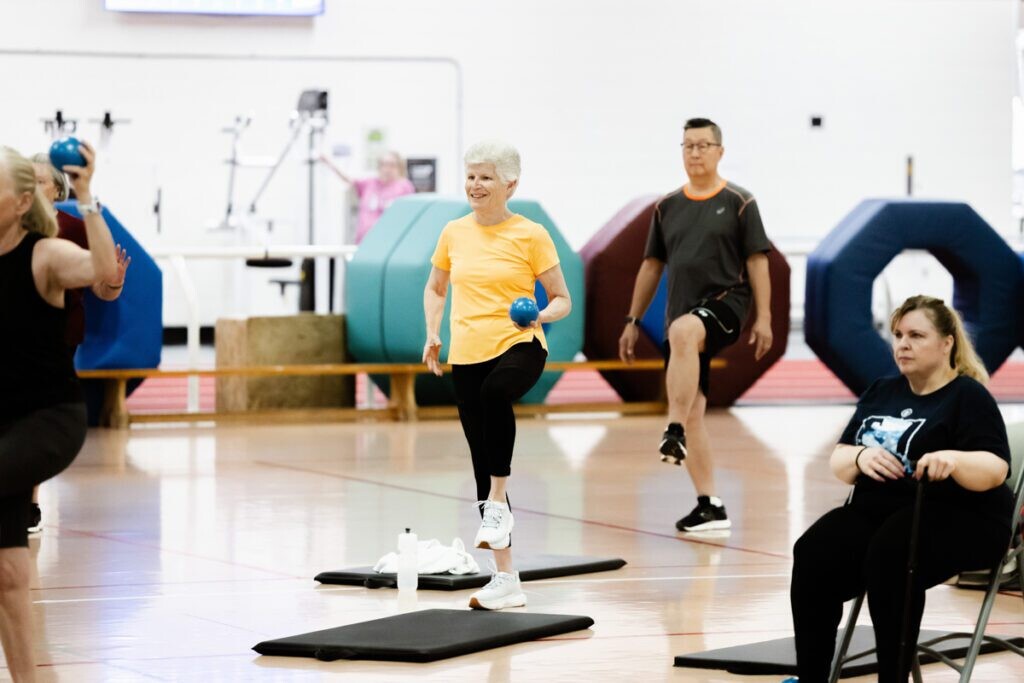
(“Everybody has the right to be part of a gym and have that social connection, no matter who you are, whether you’re a wheelchair user, or you have a mobility issue or anything else,” says Jill Ross Moreash, the class instructor, a former teacher and one of the fittest women I’ve ever seen, told me after class.)
Del Grande handed me a band after I shucked my winter coat and shoes. “You can be my partner,” she said. The workout was not easy.
This isn’t the first time Del Grande has helped bring someone into one of the workout classes. She recalls another snowy day, when she was heading into Variety Village for track practice, and she noticed an older woman standing next to her car, looking bereft. Del Grande started up a conversation, quickly learning the woman had recently been widowed and was hoping to find some conversation and community, but was overwhelmed about going into the gym. Del Grande shepherded her in, gave her a tour, helped her get signed up and brought her to class. She’s so well known as a woman who brings people into the community that she’s honoured on the wall at Variety Village.
That’s how she is on the track, as well: open and generous with her time (while still training to set world records, of course).
As a young girl, Del Grande was sporty, but she and her gym bestie (a race walker named Nicky Slovitt) both recall how, in gym class when they were in school, girls weren’t encouraged to run. That whole bit about our ovaries falling out if we sprinted or high jumped? Not a joke, if you were a gym teacher in the 60s, apparently. They believed it.
The track club at Variety Village isn’t just masters athletes; head coach Jamal Miller has created a vast community of runners ranging from pre-teens to the 70+ age group, with elite runners training alongside new track athletes. “We’re the best kept secret in Scarborough,” says assistant coach Katie Watkins. “We’re in a little bubble of what the world should be. Our track club is quite a diverse team. We cater to people of all abilities, from those living with disabilities to grassroots runners, starting off at age four, all the way up to world champions. The unique part about Jamal and how he trains is that if you’re interested, and you want to try it, he wants to work with you.”
Del Grande is at Variety Village early most days of the week. On Monday, she swims or aqua-jogs, then does weights. (“It’s a longevity thing,” she says. “You need to have balance between focusing on performance but also thinking toward longevity.”) Tuesday, she trains on the indoor track that runs around Variety VIllage’s main gym space. Wednesday is another weight session, this time in a class, and she runs again Thursday. Friday through Sunday depend on what her competition schedule looks like–when we met up on Wednesday, she was racing on Sunday, so the rest of the week was relatively easy, to prepare for that.
Del Grande found the track by accident–a work friend introduced her to running workouts on the track, and it grew from there. At the time, she did casual 5K and 10K runs and races, but she wouldn’t call herself a runner. Her friend brought her along to a track workout held by a local shop. “I really liked the short stuff,” she recalls. “We’d be doing track workouts and everybody else would be complaining that you had to go fast, and going around the track over and over was boring. But I loved it. And finally somebody said, ‘Well, why aren’t you racing it?'”
It was a lightbulb moment. “I thought adults just did road races,” she says. “It’s very hard to get out the information about the sprinting. But it exists–and there are adults doing high jump and shot put and all the other track and field sports, as well.”
She signed up, one thing led to another, and now, she’s one of the fastest female masters athletes in Canada.
“We always say that you’re never too old, you’re only too young to join Canadian Masters Athletics,” she laughs.
by Molly Hurford
Login to leave a comment
Anna Rohrer, at 23 weeks pregnant, wins 2nd straight Indy Mini-Marathon
Mishawaka native Annan Rohrer successfully defended her title in the OneAmerica 500 Festival Mini-Marathon on Saturday, but this time around she was 23 weeks pregnant!
Rohrer, a Mishawaka High School and University of Notre Dame graduate, was the women’s champion after finishing the race with a time of 1:15:18. This comes one year after she won the race with a time of 1:11:31.
Given the circumstances of her pregnancy, she told our sister station WTHR she wasn’t sure what to expect in this year’s race.
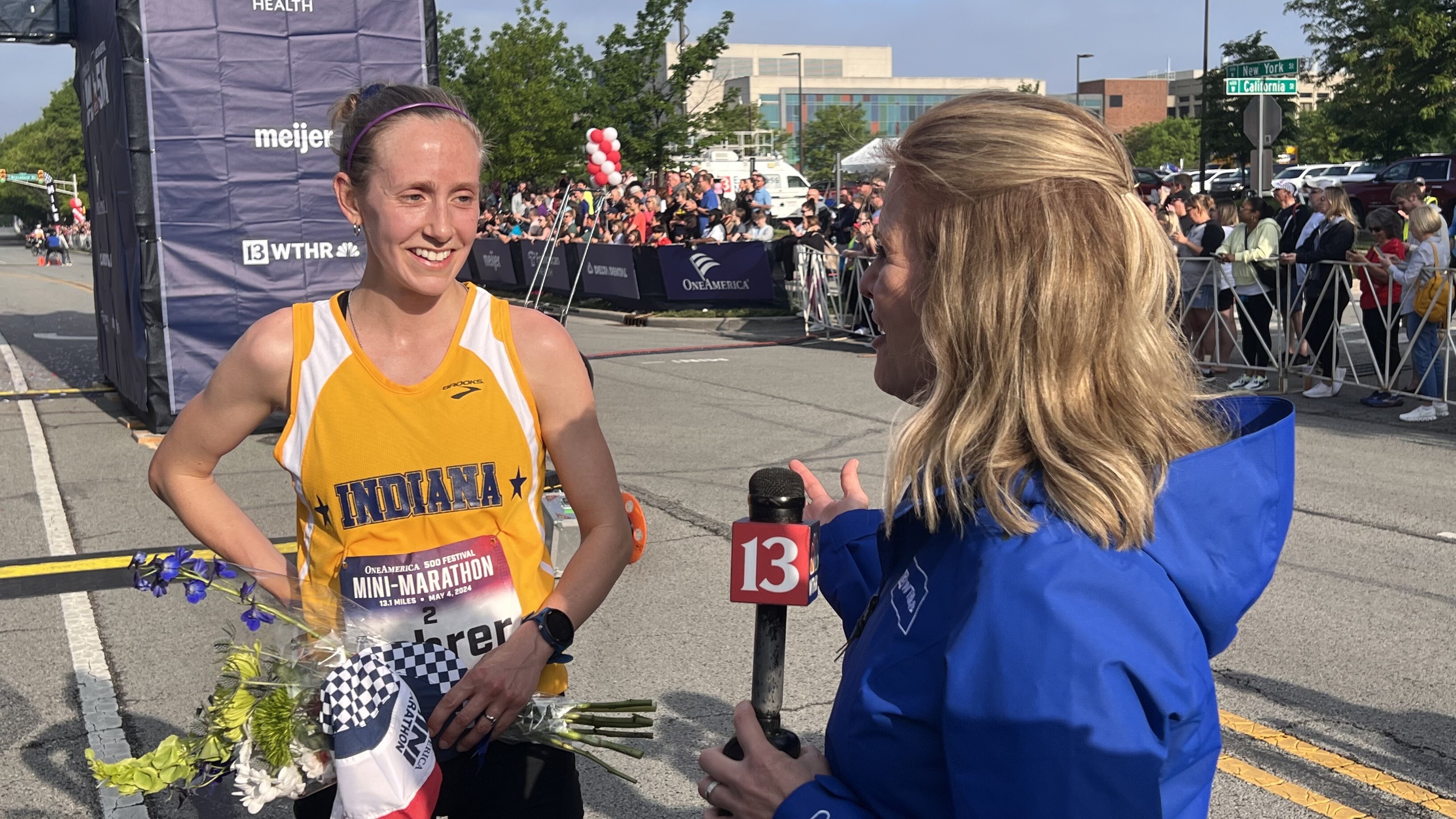
“I didn’t think I’d run quite the same time last year, but you know, whatever God wills is gonna happen on the day,” she said.
In high school, Rohrer was a two-time state cross country champion and three-time state champion in track in the 3,200. She also won the 1,600 state title as a senior.
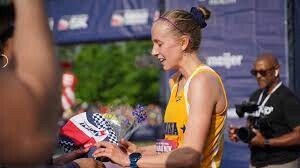
At Notre Dame, Rohrer was a four-time first-team Cross Country All-American, a two-time indoor track first-team All-American, and a three-time outdoor track All-American. Rohrer was an Atlantic Coast Conference cross country champion in 2016. She also won ACC titles in the 5,000-meter (indoor and outdoor) in 2017 and was the 10,000-meter outdoor champion in 2017 and 2019.
Rohrer, who now lives in Carmel, tells WTHR this will be her first child.
Login to leave a comment
OneAmerica 500 Festival Mini-Marathon
The mission of the 500 Festival is to produce life-enriching events and programs while celebrating the spirit and legacy of the Indianapolis 500 and fostering positive impact on the city of Indianapolis and state of Indiana. As an organization providing multiple events and programs, many of which are free to attend and impact over 500,000 people annually, our mission to...
more...Texas 16-Year-Old Breaks Two High School 5K Records
Elizabeth Leachman ran 15:28 for 5,000 meters indoors and 15:25 outdoors—but she’s taking the long view.
Elizabeth Leachman has built an impressive running résumé during her first two years of high school. Last December, the sophomore won the Foot Locker Cross Country Championships in San Diego in 16:50, finishing 14 seconds ahead of the second-place runner.

She made headlines on March 10 at the Nike Indoor Nationals meet in New York, when she broke an indoor track record for previously held by Katelyn Tuohy. Leachman, 16, ran 15:28.90 for 5,000 meters, bettering Tuohy’s high school record (15:37.12), set in 2018, by more than 6 seconds. Leachman averaged 4:59 per mile.
Then on March 28, she ran the 5,000 meters at the Texas Relays and took an additional 3 seconds off. Her time, 15:25.27, broke Natalie Cook’s high school record (15:25.93) from 2022.
Her coach, Jenny Breuer, doesn’t care about any of that. She just wants her athlete to run even splits.
Leachman, who goes to Boerne Champion High School, in Boerne, Texas, a suburb of San Antonio, knows her pacing can be a weakness. But she’s working on it.
“That’s definitely been a struggle for me,” she said. “I really like to go out hard and just kind of get after it. But I pay for it at the end, for sure.”
That’s why according to Breuer, the 5,000-meter record wasn’t even the most important race Leachman ran at the Nike indoor meet. Two days earlier, Leachman won the 2-mile in 9:44.16, splitting 5:03 for the first mile and 4:41 for the second.
The 4:41 was (unofficially) a mile PR for her. It also proved to her that she didn’t have to lead. Leachman has had some poor (for her) races after going out too hard, most notably at Nike Cross Nationals last fall, the week before her Foot Locker win, when she rocketed out to a 17-second lead in the early miles before fading to 15th place.
“You can’t keep doing the same thing and expecting a different result, so [for the 2-mile] we really just talked about waiting for the 1200, six laps in, then go,” Breuer said. “She likes to lead. It stresses her out not to lead. I think that gave her a lot of confidence she could race differently and still win.”
Breuer says Leachman is easily the most talented athlete she has had in 28 years of coaching college and high school athletes. But she spends most of her time holding Leachman back.
After she contended with hip bursitis and tendinitis in her hip and hamstring as a freshman, Leachman embarked on a vigorous cross-training regimen, alternating sessions of pool running, the elliptical machine, and the ARC trainer.
Her weekly schedule is similar to that of Parker Valby, the University of Florida star who is a four-time NCAA champion. Leachman’s routine includes only three or four days each week of running, for about 30 miles total. She’ll do a 90-minute session of cross-training on the days she doesn’t run, and on the days she does, she’ll put in an extra 30 minutes of cross-training after the workout.
A typical week, Breuer said, will include a long run, a threshold run or intervals, and a shorter interval workout. The long run is usually 9–11 miles. She tried to have Leachman run by time, but she ended up running too fast and too far, so they went to a mileage limit.
A recent threshold workout was 4 x 1 mile at about 5:10 pace, with a one-minute recovery between miles. The speed day was 4 x 600 meters with a 200-meter float between each. She never does more than a mile for warmup or cooldown, so that workout totaled less than 4 miles.
They’ve also spent a lot of time doing 200s in 36 seconds and 400s in 72. Breuer will sometimes have Leachman do those after the main part of the workout, just to get the feeling of the pace she should not exceed.
“If you have to take the lead, do not go faster than 36 or 72,” Breuer said she instructed Leachman before the 2-mile. “Do not run a 68. Please.”
The coach and the runner sometimes challenge each other. Leachman wants to do more. Breuer wants her to stay healthy and develop over time. “I’m always pulling her back,” Breuer said. “Err on the side of caution.”
For all the unusual ability Leachman has—a powerful aerobic engine, the discipline to work hard at cross-training—there’s one thing that she doesn’t have that most 16-year-olds do: an Instagram account.
That’s been a deliberate choice on the part of Leachman and her parents, who don’t want to see their daughter swept up into the frenzy and pressure that can sometimes descend on young, female runners. (See: Tuohy and Valby.)
“I think if it was fully up to me, I probably would have it,” Leachman said. “But my parents don’t want me to, and I’m okay with it. I haven’t really fought it.”
When she was at Nike Indoor Nationals in New York, it was the first time she had encountered fans who wanted to take pictures with her. It wasn’t too weird, she said. “It was mostly other high school girls and then a couple of younger girls,” she said. “It was sweet. I never expected that.”
The social media moratorium is a way to keep Leachman’s high school experience as typical as possible. She maintains a perfect GPA. She works occasional shifts at a gym after school, staffing the front desk or the babysitting area, where parents drop their kids while they work out. She likes to be with her teammates, helping score points for Boerne Champion, even though she does many of her workouts alone or with the boys’ team during cross-country season.
She follows what’s happening in pro and college running, but not obsessively. She knew Valby ran 14:52 in winning the NCAA indoor title—“insane” Leachman called it—but then she didn’t give it much more thought.
“Because running is important to me, it’s the focus of what I’m doing a lot of the time,” she said. “When I’m away from it, I try not to make my whole life focused around it, so that I can be more balanced in general.”
The adults in Leachman’s life sound a constant drumbeat: You are more than your performances.
“We talk a lot about external expectations, and just because you’re good at running doesn’t mean that it’s everything that defines you,” Breuer said. “That’s what’s really hard, I think, for a 16-year-old to remember sometimes when the spotlight is on. I try to remove that pressure as much as possible and remind her that this is supposed to be fun.”
There is plenty of time for all the extras. Leachman will have to wait to see if her 15:25 gets her entry into the Olympic Trials this summer, but Breuer is playing the long game.
“She has a really good perspective,” Breuer said of Leachman. “Her parents have done a super job. And also, I say, ‘I want you to be an amazing college runner, I want you to be an amazing professional runner, if that’s what you want to do. We don’t want you to peak in high school. That’s not the goal.’”
by Runner’s World
Login to leave a comment
Training through the seasons: injury prevention tips
The start of a new season marks a shift in the training environment for competitive runners across Canada. Distinct challenges arise as runners shift their focus to new racing distances or terrains. As runners transition from outdoor to indoor running in winter, and switch into cross-country running in the fall, the ligaments and tendons of the lower extremities are put to the test. New running environments place demands on these structures and may leave runners vulnerable to injury.
Clinically, my treatment approach is to support these structures with targeted strength training. Loading the joints of the lower extremity with running-specific single-leg movements can help prepare them for the demands of new surfaces and terrains. Single-leg squats, lunges and calf-based loading strategies can be done with the goal of preventing long-term injuries. Jumping-based exercises on uneven surfaces are another great option, because they mimic the demands that runners may experience during races over grass, hills, and mud.
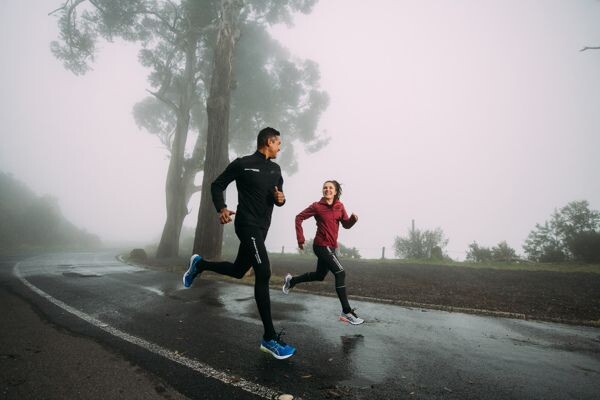
As the weather gets colder, many athletes across Canada turn to doing at least some of their training indoors. An indoor track presents a unique challenge to the athlete’s body, as everyone runs in a counterclockwise direction only. The repetitive nature of running, combined with consistently turning in one direction, can lead to various loading challenges, which can be amplified on the tighter turns of indoor tracks. Researchers from Western University found that the ankle-stabilizing muscles on the left leg on the inside edge of the turn developed strength changes distinctly different from those on the opposite leg, which they suspect are from athletes constantly turning to the left on an indoor track.
In our work with runners at the Runner’s Academy in Toronto, we have found that this type of asymmetrical loading pattern can contribute to muscular imbalances and running-related injuries affecting the ankle, knee, hip and pelvis. Clinically, I use hands-on manual therapies with targeted rehabilitation exercises to address areas of muscular compensation and joint overuse.
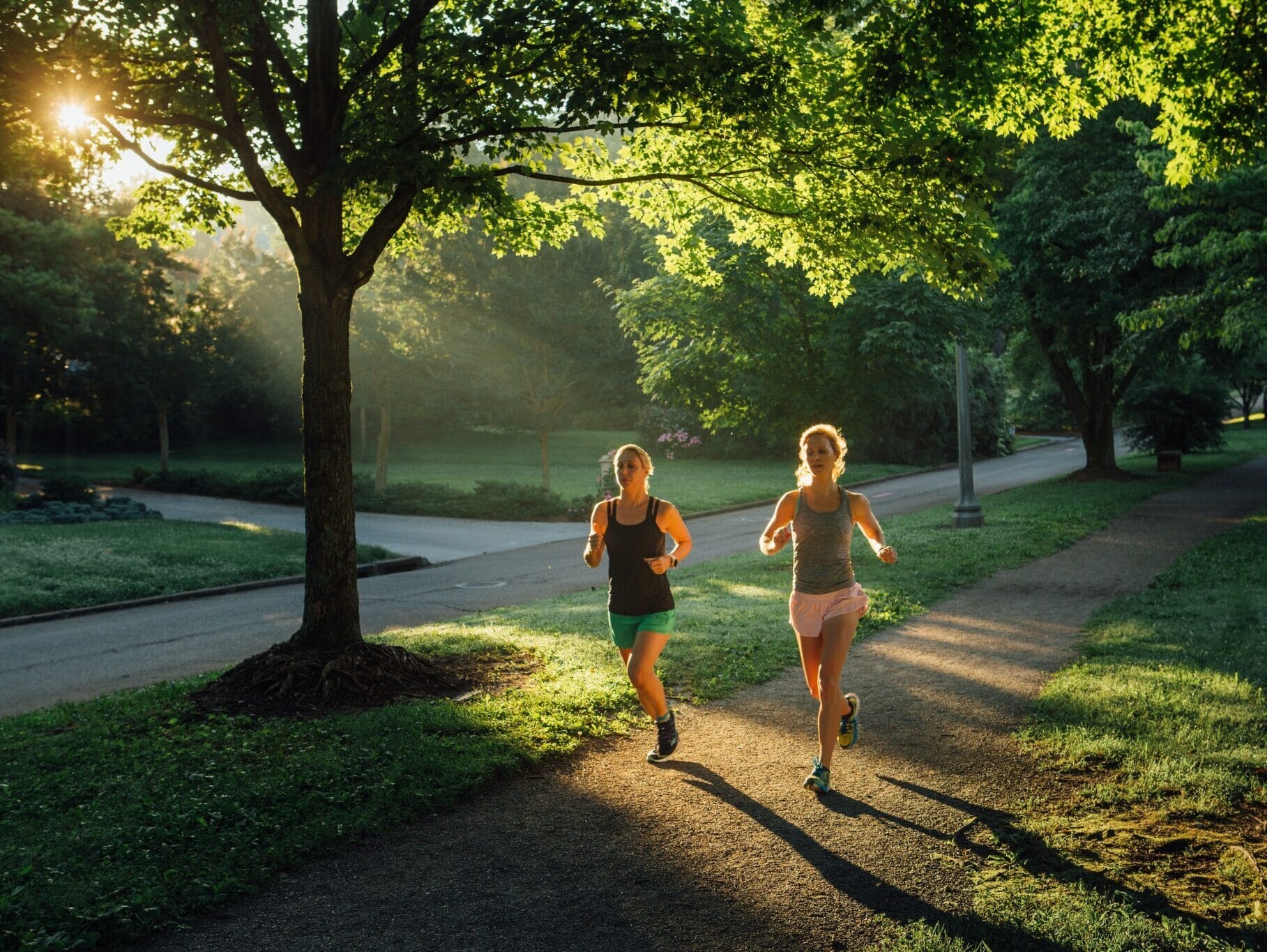
If you are training on a running track indoors or outdoors, varying your direction between clockwise and counterclockwise is essential to reduce the amount of rotational force the body is subjected to.
To optimize your faster-paced workouts indoors, I recommend doing your warm-up and cool-down jogs outdoors, away from the indoor track. This allows your body to reset and adapt after the repetitive stresses of indoor running, enhancing overall performance and reducing the risk of injury. This promotes variability and gradually exposes the body to stress on a range of surfaces and conditions. If I am training for an indoor track race or coaching, I practice these training modifications and encourage everyone else to try them.
Dr. Robert Lawand is a chiropractor at The Runner’s Academy in Toronto. He can be found training and racing in events from the 1,500m up to the half-marathon with the Royal City Athletic Club, and coaching high school track and field with the University of Toronto Track and Field Club.
by Dr. Robert Lawand
Login to leave a comment
Noah Lyles signs record-setting contract with Adidas
The world 100m and 200m champion, Noah Lyles, has signed a record-setting deal with Adidas that will run through the L.A. 2028 Olympics. The exact dollar figures have not been disclosed, but it has been dubbed the richest contract in track and field since the retirement of Usain Bolt.
Bolt’s contract with Puma in 2013 was estimated at around $10 million a year, and the deal took him to the end of his career, in 2017. Lyles’s new contract is likely in the ballpark.
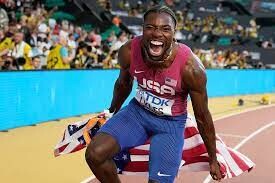
Adidas has been Lyles’s sponsor since the 2016 U.S. Olympic Trials, when he finished fourth in the men’s 200m as a high school senior. Lyles has since become the world’s most dominant sprinter, winning three consecutive World Championships titles over 200m, breaking the 26-year-old American record in 2022 (19.31 seconds) and winning all three sprint gold medals in the 100m, 200m, and 4x100m relay at the 2023 World Athletics Championships in Budapest. He is only the fifth man to accomplish that feat, and the first since Bolt at the 2015 World Championships in Beijing.

“When I first signed with Adidas in 2016 along with my brother, Josephus, it was like a dream come true for us,” Lyles said in a press release. “Today is just a continuation of that childhood dream.” Lyles shared his vision of achieving all he can on and off the track, and his goal to make a change for future generations. “This is what drives me,” he said.
Lyles has had a fast start to the 2024 season, clocking a new personal best of 6.45 at the New Balance Grand Prix earlier this month, then following up his performance with a 60m win at the U.S. Indoor Track and Field Championships in a world-leading 6.43 seconds, beating his compatriot and former 100m world champion Christian Coleman.
The 26-year-old is the favourite to win gold in the 100m and 200m at this summer’s Paris Olympics. (He has yet to win an Olympic gold medal.) He won bronze in the men’s 200m in Tokyo, losing to Canada’s Andre De Grasse and American Kenny Bednarek.
Along with Adidas, Lyles also has partnerships with Omega Watches, Celsius Fitness Drinks, Comcast and Visa.
by Marley Dickinson
Login to leave a comment
A Riveting New Series Shows the Insane Workouts of Elite Runners—Completely Unfiltered
Every week, TRACK: All-Access reveals the raw training of star athletes like Conner Mantz, Clayton Young, and Elle St. Pierre.
“You just watched an attempted murder,” says Graham Blanks as he catches his breath on a pole vault mat at the Harvard University indoor track.
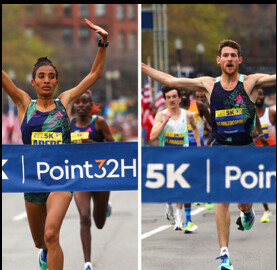
His coach, Alex Gibby, prescribed Blanks a lengthy session. Three sets of 12 minutes at threshold pace (4:49 to 4:40 mile pace), followed by four fast 300-meter reps on the track. Blanks ripped the last interval in 41.9 seconds.
The 2023 NCAA Cross-Country champion—along with his teammate, Maia Ramsden—is the subject of an episode of the new running YouTube channel TRACK: All-Access.
The channel is the latest project from Gordon Mack, who spent the previous decade working at FloTrack and MileSplit, where he wrote articles, covered meets on-site, and co-hosted the FloTrack Podcast. Last year, after a career change, Mack got the idea of doing weekly workout videos. Now, he’s diving head-first into the venture, traveling across the country to create content with some of the biggest names in running.
Mack posted his first video—3-mile repeats with marathoners Conner Mantz and Clayton Young—to popular reception. Since then, he’s been releasing at least one episode every week and has featured the likes of Stanford University stand-out Nico Young, high school star JoJo Jourdon, and 1500-meter Olympian Elle St. Pierre.
So far, he says it’s been a success.
“I’ve been pleasantly surprised and blessed and happy and thankful that people are responding positively,” Mack says. “When you start something, you have in your head the idealistic response, but you actually don’t know if it’s gonna happen until you put it out there. And fortunately, people seem to really like the content.”
Mack plans on releasing videos every Tuesday morning, but for the first few weeks, he’s uploading another video on Thursdays to give the channel some momentum. So far, TRACK: All-Access has over 7,000 subscribers, and the workout video with Nico Young has racked up more than 83,000 views.
While YouTube comments can quickly become crude, viewers seem to welcome Mack’s content. Sometimes they’ll offer feedback or encourage Mack to film episodes with specific teams. Some users have even joked that workout videos are prophetic.
“Babe wake up! All Access just posted another workout video ? ?” @sofodachimp2776
“Thank you for the back stage pass. I feel so honored to be part of this team.” @deviljames
“I’m starting to think track all access has the script” @orangepeanutyguy6569
The essence of the channel is in its name: access. Mack believes that track and field fans—himself included—crave more behind-the scenes content from athletes, outside of competition or media appearances. “We love watching them race, run records, and win championships,” he says. “But we also really love to see how they did it. And a lot of that is not really shown.”
After working in the running industry for over a decade, Mack has accumulated a rolodex of contacts with professional athletes and coaches. So far, the videos have focused on distance runners, but Mack plans on incorporating sprinters and field events into the mix as well.
Along with access, Mack wants the videos to be in-depth. Instead of editing the raw footage down into highlights, he prefers to show every rep of a session— even the more monotonous parts—to paint a full picture of training. The relationships between the athletes and their coaches are just as important, too. “[I’m] trying to give the user a viewpoint as if they got to watch the practice in full time for that full hour-and-a-half session,” he says.
Mack is a one-man show so far. He films and edits the entirety of the videos, and he has to get creative sometimes to keep up with the runners. When he was initially filming Conner Mantz for a workout in Provo, Utah, Mack sped alongside him on a bike—until he got a flat tire. He came back two days later with a car.
Although TRACK: All Access is still in its infancy, this isn’t a part-time job for Mack—this is his life for the foreseeable future. He plans on supporting the channel with YouTube advertising revenue, as well as working with brands on potential sponsorships down the line. Consistency is a cornerstone of the channel, and Mack plans to keep his output high.
“At the end of the day, it’s a very simple concept,” he says. “It’s workout videos with the best elite athletes in the varying degrees of our sport and the varying disciplines of our sport. And, hopefully, if I put out good content, people will like it.”
TRACK: All-Access tentative schedule
February 15—Boston University men (Distance)
February 20—Sophia Gorriaran (Harvard)
February 22—Northern Arizona University men (Distance)
February 27—BYU men (Distance)
February 29—Northern Arizona University women (Distance)
March 5—Kenzie Doyle (UMass Lowell)
March 7—Arizona State University men (Sprints)
March 12—Courtney Wayment/Anna Camp Bennett (Taylor Made Elite)
by Runner’s World
Login to leave a comment
Las Vegas to welcome the world's largest indoor track
Las Vegas is about to get one of the most impressive indoor sports venues in the world. The Z Athlete Village, which is planned to span more than 390,000 square feet (3.6 hectares), will be the largest indoor track and field arena ever built, and will have track athletes and fans alike clamouring for a chance to visit the facility.
According to the website, the new arena will offer a wealth of amenities that rival any other sports facility in the world, including a 400-metre indoor competition-ready track, a 200m Mondo hydraulic banked track, an outdoor turf training area, a recovery centre featuring cryotherapy and massage, four separate high jump pits, four pole vault pits, up to four shot put and weight throw areas and a cutting-edge indoor simulator featuring AI technology to measure athlete biomechanics.


In addition to being the largest indoor track and field arena ever constructed, the facility will also be home to the Indoor Running Track and Field Events League, with more than 48 weekends of track and field running and other sports events each year. The venue will welcome more than 192,000 participants and visitors annually, and league participation will provide athletes with the opportunity to compete in five meets throughout each 10-week season, including middle school, youth, adult, high school, collegiate and professional competitions.
The indoor running programs offered at the facility will provide runners of all ages with opportunities to train and compete in distances ranging from one mile to 5,000m. Training and competitions will be open to athletes competing in Ironman and special distance relay-running events. Participants in the RunRite Challenge will have the chance to win a share of more than $1,000,000 annually in cash, college scholarships and other prizes. The facility will also offer other services such as camps and clinics.
Finally, it’s not just sport that this new facility will provide. It will be part of the Z Athlete Village, a sports wellness resort also featuring other facilities such as the Villas, where visitors can stay for multiple days, the Indoor Courts for volleyball, basketball, gymnastics and other sports, and the Natatorium for swimming competitions.
The facility isn’t set to open for another two and a half years, but runners everywhere are already dreaming of their first visit. In true Las Vegas style, when the Z Athlete Village is finally completed, it will likely eclipse every other world-class track and field venue out there.
by Running Magazine
Login to leave a comment
Beatrice Chepkoech to open her indoor track season against two Ethiopian youngsters
Beatrice Chepkoech will be pitted against two Ethiopian youngsters in the women's 1500m at the ORLEN Copernicus Cup, a World Athletics Indoor Tour Gold meeting.
Ethiopian youngsters Diribe Welteji, and Freweyni Hailu will be up against Beatrice Chepkoech in the women’s 1500m field at the ORLEN Copernicus Cup, a World Athletics Indoor Tour Gold meeting, in Torun, Poland, on February 6.
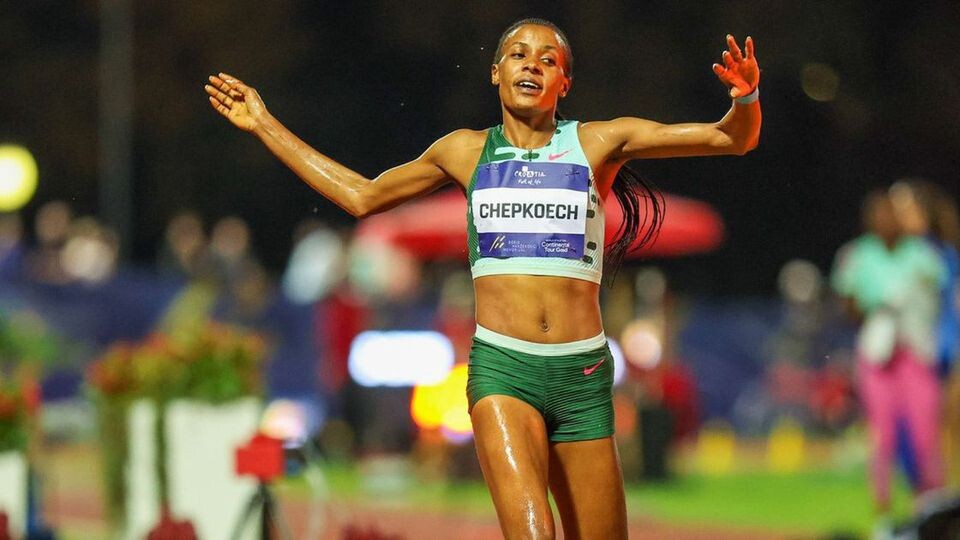
21-year-old Welteji set a world record when winning the mile at the World Athletics Road Running Championships in Riga in October, as she clocked 4:20.98 as her compatriot Hailu finished second with Faith Kipyegon completing the podium.
Welteji and Hailu will team up again in Torun where they will be up against the world 3000m steeplechase record-holder Chepkoech. Other strong opponents in the field include Ethiopia’s world indoor 1500m bronze medallist Hirut Meshesha and Uganda’s 2019 world 800m champion Halimah Nakaayi.
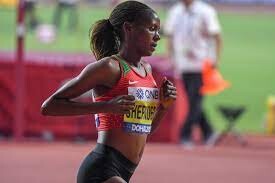
Welteji has proven to be a master in the 1500m and she also doubles up as the World 1500m silver medallist, having finished runner-up to Kipyegon in Budapest in August. She will surely be the one to watch when the race begins.
Meshesha has the quickest short track PB of the quintet, having clocked 4:02.01 in Lievin last year, finishing second and one place ahead of Hailu who set a PB of 4:02.47. Chepkoech ran her national record of 4:02.09 in 2020.
Meanwhile, multiple US record-holder Grant Fisher will take on the already announced world champion Josh Kerr in the two-mile race at the Millrose Games, also a World Athletics Indoor Tour Gold event.
The race on February 11 is set to be paced with the world indoor two-mile best of 8:03.40 as the target. Joining them on the start line will be USA’s Joe Klecker, Cooper Teare, and Dylan Jacobs. New Zealand’s George Beamish, Australia’s Morgan McDonald, and Ky Robinson will also be in the mix and will be joined by Britain’s Matthew Stonier, Japan’s Keita Satoh, Ethiopia’s Samuel Firewu and Addisu Yihune, and Sam Parsons of Germany.
by Abigael Wuafula
Beatrice Chepkoech
Login to leave a comment
Rory Linkletter to chase Olympic marathon standard in Spain
After a short and successful stint on the indoor track to end 2023, Canadian marathoner Rory Linkletter has announced his next race, the Sevilla Marathon on Feb. 18. Linkletter’s goal is to run a personal best and book his ticket to the Paris Olympics, which will require a time of 2:08:10.
“I will be heading to Spain to run the Sevilla Marathon on Feb. 18,” Linkletter wrote on Instagram. His reasoning for choosing to race in Sevilla was to give himself ample time to recover and prepare after his 18th-place finish in the marathon at the 2023 World Athletics Championships in late August.
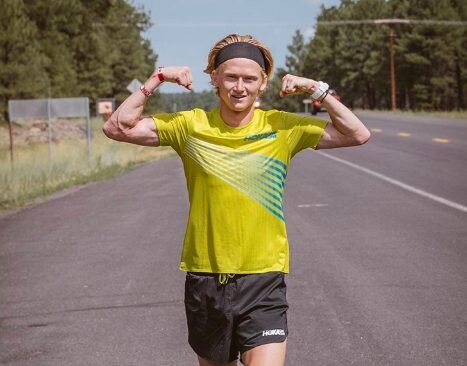
Although Linkletter’s time of 2:12:16 in Budapest was shy of his personal best, he referred to the race as the smartest he’s ever run, passing over 20 runners in the final 15 kilometers.
In Sevilla, Linkletter will be vying for the fastest time of his career, and he will need to hit the men’s Olympic A standard of 2:08:10. If he misses the standard, he can still be selected for Team Canada via the World Athletics rankings. He has a personal best of 2:10:24 from the 2022 World Championships in Eugene, Ore.
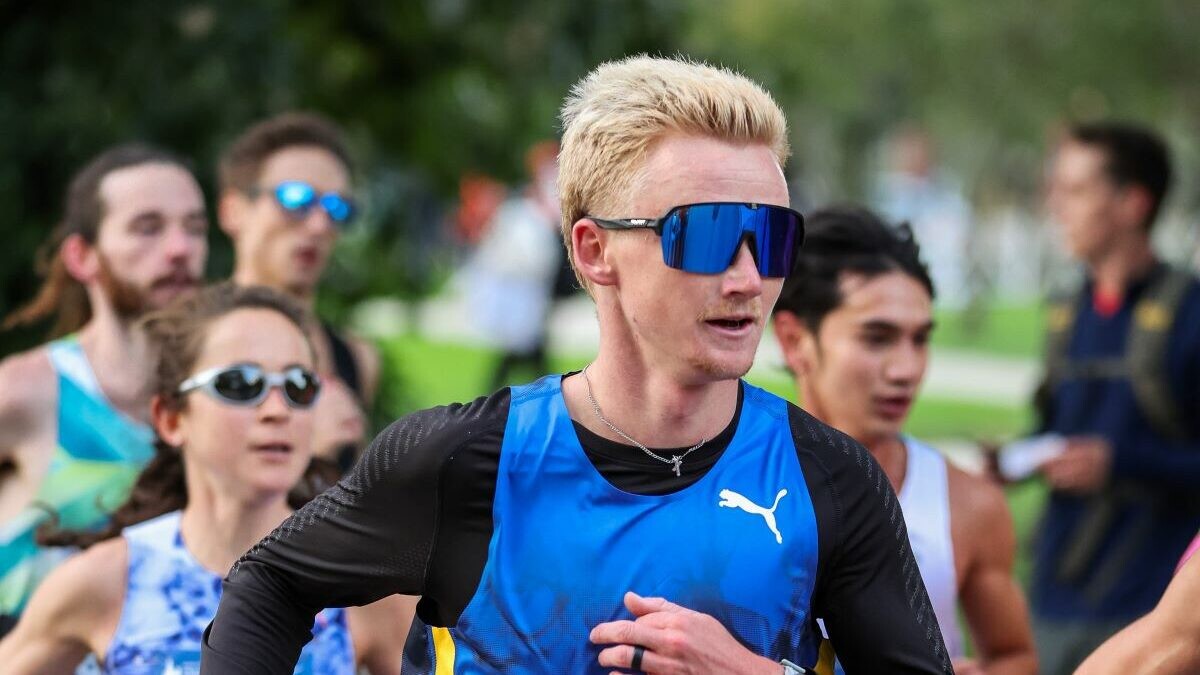
“Training is going well, and I want to set myself up well for an Olympic Standard attempt (2:08:10),” Linkletter said.
The 27-year-old had the second-fastest Canadian men’s marathon time in 2023, behind only Cam Levins’s 2:05:36 in Tokyo. Levins already has one of the three eligible marathon spots for the Canadian men’s Olympic team, but with five months left to qualify, two spots are up for grabs for Canadians who meet the Olympic B standard of 2:11:30.
If Linkletter were to hit the A or B standard, he would potentially be selected for his first Olympic Games.
The Canadian-born marathoner, who lives in Flagstaff, Ariz., has been working on his speed over the last few months with his coach, former U.S. marathoner Ryan Hall, to improve his speed. In early December, he became the 74th Canadian to run a sub-four-minute mile and only the second Canadian to accomplish the feat while also being a sub-2:12 marathoner.
He joined marathon record holder Levins as the only other Canadian to do so.
by Marley Dickinson
Login to leave a comment
Zurich Marathon Sevilla
This urban, flat, fast and beautiful brand new race course will drive athletes through the most beautiful monuments of the city. Zurich Maraton de Sevilla brings the unique opportunity to brake the Best personal result over the mythical distance to all the athletes, professional or age groupers, in one of the most perfect international marathon circuits. This fast marathon takes...
more...Canadian masters running icon Helly Visser dies at 89
On Nov. 30, Canada and the province of Alberta lost a influential member of the running community with the death of 11-time Canadian masters record holder Helena “Helly” Visser of Calgary. She died at the age of 89.
Born in Hilversum, The Netherlands, in 1934, Visser came to Canada in her youth. Her running journey began after her three children left home to pursue their education. With time on her hands, she discovered a passion for pushing her limits and embraced the outdoors.

In 1995, she officially entered competitive events for Canada, winning gold in the W60 1,500m at the WAVA (now WMA) meet. Over the years, Visser achieved remarkable success in her age group, setting three world masters age group records and 11 Canadian masters records across middle distances from 800m to 3,000m (indoor and outdoor).
Visser competed at the masters level provincially, nationally, and in numerous world championships. Notably, she still holds three world masters records in the W80 category for the 1,500m, mile and 3,000m events. Additionally, she boasts numerous Alberta provincial masters records, received multiple honors as Athletics Alberta Masters Athlete of the Year, and was inducted into the Canadian Masters Athletics Hall of Fame in 2010.
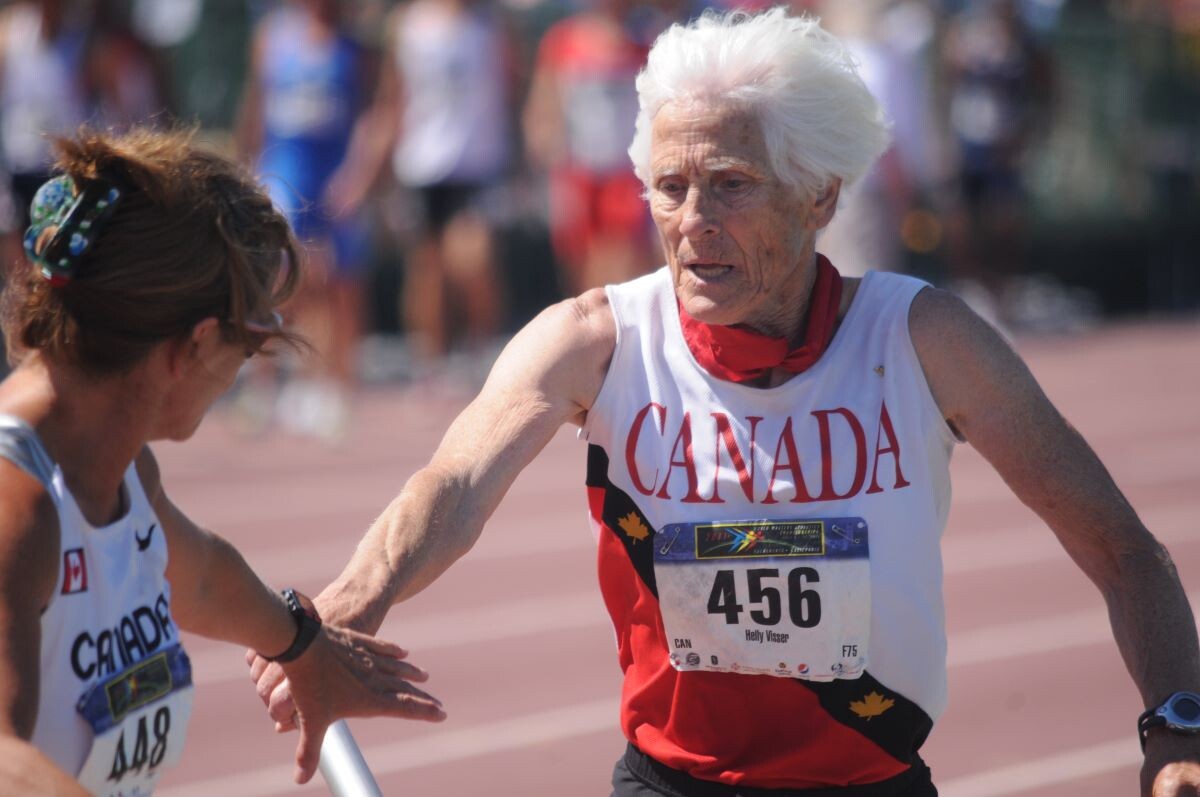
Beyond her athletic accomplishments, Visser played an active role in promoting the sport within Calgary’s community. She organized local running clinics and helped advocate for the construction of an indoor track and field house.
Competing at the masters level until the age of 85 in 2019, Visser served as an inspiration to many runners. Her love for continuous learning and her commitment to improvement through shared experiences made her a cherished figure in the running community.
In memory of Visser and her love for the outdoors, a tree will be planted in the Ann & Sandy Cross Conservation Area in Calgary’s Fish Creek community.
by Marley Dickinson
Login to leave a comment
Track and Field Historian Mike Fanelli Dies of Cancer at 67
Mike Fanelli, the owner of one of the largest track and field memorabilia collections in the United States, died on Saturday after a battle with glioblastoma, an aggressive form of brain cancer. He was 67 years old.
For over 50 years, Fanelli collected running-related memorabilia, which he stored in the “Track and Field Garage” at his home in Sonoma County, California. The expansive collection features over 4,000 artifacts, including the meet program from the first indoor track meet held in the United States in 1868, as well as every issue of Track and Field News and Runner’s World.
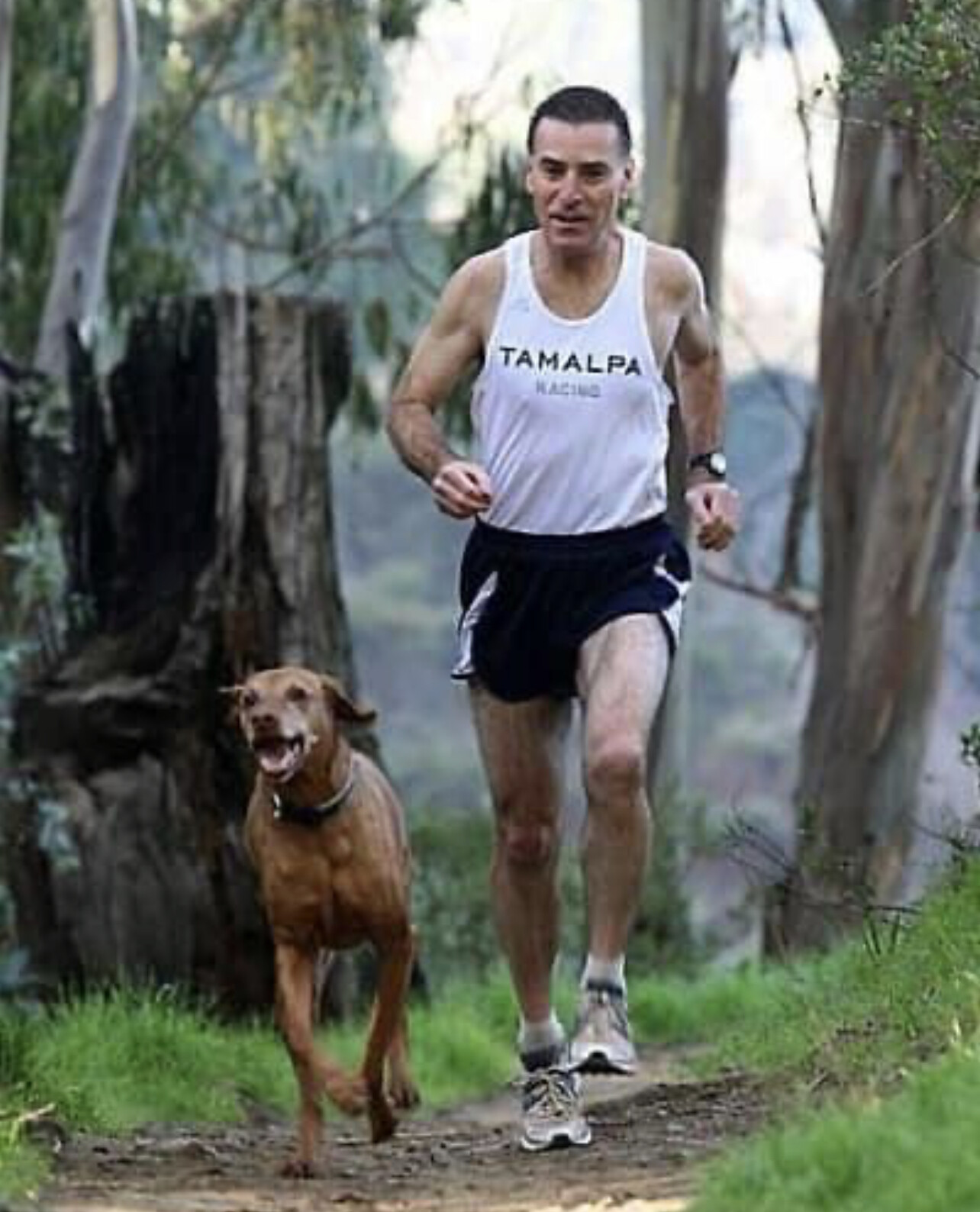
Fanelli made his mark on the sport of track and field throughout his life. He represented athletes as an agent, coached the Impala Racing Team, and served as the USATF National Cross-Country chairman in the 1990s. He’s also the namesake for the Mike Fanelli Track Classic, held at his alma mater, San Francisco State University, each spring.
But Fanelli’s impact, perhaps, is best exemplified by the connections and friends he made along the way. Until just days ago, Fanelli would routinely post track and field trivia facts to an audience of over 4,000 Facebook friends. If you look closely, you’ll find legends of the sport reminiscing about old races or giving their two cents in the comments.
Fanelli’s wife, Renay Weissberger Fanelli, released a statement on Monday announcing his passing: “It is with unbearable sadness that I share with you that Michael has passed away from brain cancer, at home, surrounded by loved ones. While he was a public figure in many ways, he was also a very private person. Because of that, he chose not to share his diagnosis broadly, preferring to live his life as if he was living, not dying.”

Fanelli lived his life fully up until his last moments. Last month, he completed his goal of running 115,000 miles in his life, dutifully logging each run in composition notebooks.
In 2021, Fanelli told Runner’s World why he feels cataloging running history, with the help of his track-nerd friends, is so important. Running history, he noted, is not particularly well recorded.
“I refer to it as ‘cultural storytelling,’” he said. “When a particular culture wants to pass down their history over the years, and it’s not something that can be transcribed otherwise, this is our opportunity to do that.”
by Runner’s World
Login to leave a comment
Three acceleration drills to unleash your maximum velocity
Have you ever watched an efficient runner pick up the pace, with a smooth, seemingly effortless drive forward as their legs and arms slice smoothly through the air? Acceleration is a skill that can be practiced and perfected, and will improve running performance, even if you don’t plan on racing the 100-meter dash.
Renowned speed coach and editor of the book Developing Speed, Ian Jeffreys, explains that whole-body acceleration involves subtle coordination. “Although acceleration technique may vary from athlete to athlete because of size and other physical characteristics, there are coachable technical factors that all athletes can develop.” Add a few sets of these drills into your workout after your warmup, or devote a whole short speed session to them.
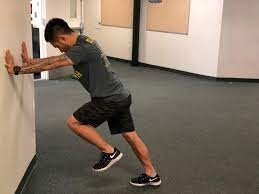
Wall drive drill
This drill helps you master your forward lean, perfect if you’re practicing for short distances or want to be able to really drive your race home. Jeffreys suggests starting this one with slow, controlled movements, and increasing speed as you build competence.
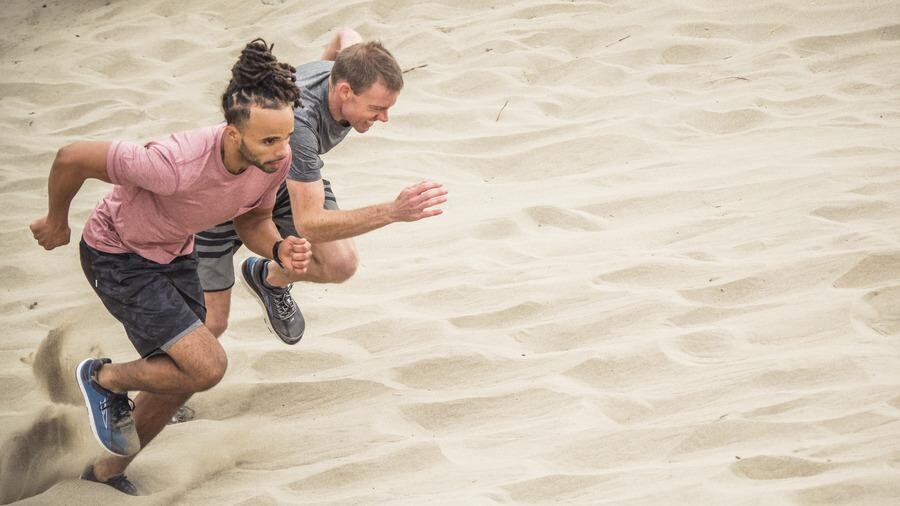
Stand facing a wall with feet shoulder-width apart, and place your hands on the wall at chest height.
Step back, extending one leg behind you.
Strive to keep your body in a straight line from head to heel while you drive your front knee forward, pushing off the back foot.
Alternate legs, focusing on bringing that front knee up with explosive power.
Sprint starts from the ground
Because you start on the ground for this one, as rise up from the facedown position you will naturally begin striding with your body low to the ground, pushing back and assuming a forward lean. This drill is perfect for practicing on grass; try an indoor track or turf in the colder months, or modify by taking a crouch position to start.
Lie right on the ground with hands planted.
Have a friend give a command to get you started, or count down from three on your own. Push yourself up to sprint as fast as possible to a set point straight ahead. Keep your sprint short in this one, from five to 30 meters.
Focus on powerful, explosive movements off the start, driving off your back leg to shoot forward.
Incline Sprint
Jeffreys says the added resistance of the incline here provides a safe and effective way to stress the strength and power demands of acceleration drills, while the upward slope will promote an increased awareness of knee drive and full extension. These are perfect to take indoors to the treadmill.
You’ll need a low incline or hill (five to 10 degrees). Keep these short–20 seconds at maximum.
Stand with a slight forward lean at the base of your hill, and sprint up the incline, emphasizing powerful strides.
Pump your arms vigorously to maximize momentum, and focus on that forward-leaning posture for optimal acceleration.
Repeat a few times, walking back to the start in between to recover.
Remember to focus on quality over quantity in these acceleration drills–maintaining strong, efficient form is essential, so keep your repeats short, fast and effective.
by Keeley Milne
Login to leave a comment
Back to school: Where to run when kids take back the track
The breezy days of summer are even more carefree for those of us who live near a high school track that’s open to the public. The summer break brings freedom not just to students, but to runners who can pick a lane and do laps whenever they please without fear of gatecrashing a gym class or track meet. For some, open access to a school track is more necessity than luxury—my brother-in-law’s decision to relocate to a small New Brunswick community hinged on a guarantee from the town’s mayor that he’d be able to use the nearby school track (which he got—in writing, no less).
But no matter how welcoming a school is to public track users, the new academic year brings an end of unfettered track access and the need for runners to find an alternate training ground. Here are some things to consider for those wanting to get in their track work without the track.
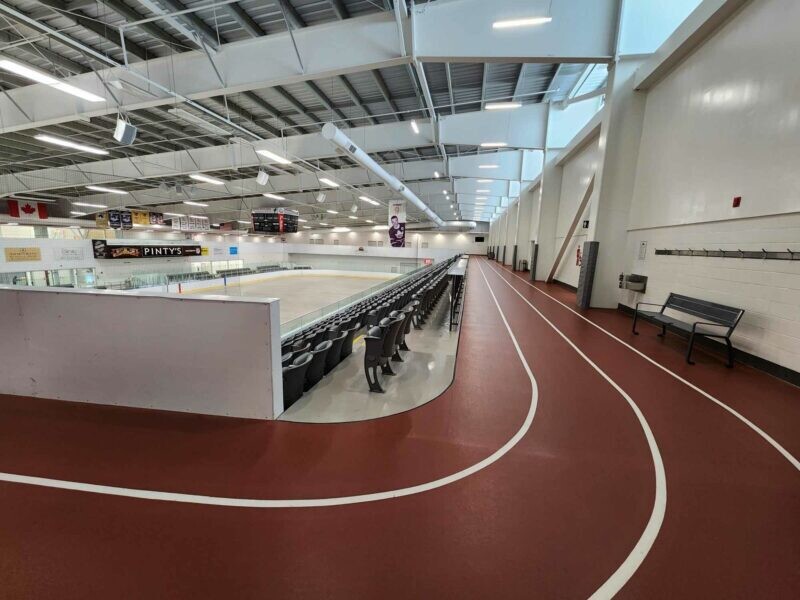
Outdoor alternatives
With autumn—and arguably the year’s most hospitable conditions for outdoor training—ahead, the search for an alternative to the track should begin outdoors. The kind of location you choose—such as a roadway, a pedestrian path in a park, a trail or a parking lot—probably won’t matter as much as the qualities of that location. Some of the characteristics of a good track alternative include:
A (relatively) straight 400m stretch: While a track alternative needn’t be straight—tracks aren’t, after all—a potential training space shouldn’t have any aggressive turns. Having to negotiate sharp, tricky angles during a hard training session can hinder your performance and could easily result in injury. The stretch should be at least 400m to accommodate interval work, but longer stretches (800m or 1,200m) can open up training options that won’t require you to double back. You don’t need a trundle wheel to get a workable read on the distance. Some park pathways have signed markers at regular distance intervals (although these are more often spaced at every 0.25m, which doesn’t fit the 400-meter mould). The more accessible approach for gauging distance is with a GPS watch. Switching your watch’s autolap to 400m instead of 1 km is one option, but for greater ease and consistency, bring a piece of chalk on your run and mark off the 400m distance.

A flat, consistent surface: Similar to choosing a stretch that’s relatively straight, opting for a consistently smooth and flat surface will let you maximize your effort while minimizing the risk of injury. Roads, asphalt paths in public parks and other paved areas such as parking lots are top candidates for a suitable surface, though they may lose out in other areas. If a paved surface isn’t an option, opt for a dirt or grass surface over gravel for stability.
A low-traffic area: High or unpredictable traffic flow is enough to throw a potential track substitute out of contention. A circular roadway that was put in as part of a newer subdivision near where I live looks like it was created with a running-track shaped mould, boasting near-perfect dimensions and a freshly paved surface. But steady traffic on the road and sidewalks spoiled it as a decent option. Another road not far from it, meanwhile, isn’t as smooth or track-shaped, but it makes for a much more productive space for interval work, due to the scarcity of traffic.
Indoor alternatives
The treadmill: Seen by many as the go-to alternative to outdoor running, the treadmill does have some strengths as a track substitute. It does away with the chief safety and performance concerns—there’s no traffic to worry about, the surface is always smooth and consistent and there are no sudden bends in the route. But it falls short of mimicking the track experience. There’s no air resistance, the machine’s motor dictates how quickly you can accelerate, and the reported speed and distance might be inaccurate or inconsistent from one treadmill to the next. And while the monotony of treadmill running can help strengthen mental toughness, it can also dampen motivation.
The indoor track: Not as readily available to most runners, community indoor tracks offer the stability and consistency of the treadmill without tethering you to a machine. A number of community recreational facilities that have been built over the past two decades feature a 200m walking and running track in a mixed-use space—around a skating rink, for example. Indoor tracks are great for interval work—when they’re not busy. Unlike treadmills, indoor arenas can pose considerable traffic concerns, with walkers and runners sharing a limited number of lanes, so it pays to pick your training times during quieter hours.
by Paul Baswick
Login to leave a comment
U.S. sprinter Tori Bowie died in childbirth at home, autopsy reveals
U.S. sprinter Tori Bowie‘s death at age 32 was the result of complications during childbirth at her Florida home, according to an autopsy report by the Orange County Medical Examiner Office.
The report, obtained by USA Today, says Bowie was carrying a “well-developed fetus” at about eight months into her pregnancy when she died during labour at her home in Winter Garden, Fla. Her body was discovered May 2 as part of a welfare check by sheriff deputies, who were responding to reports of a woman who had not been seen for several days.
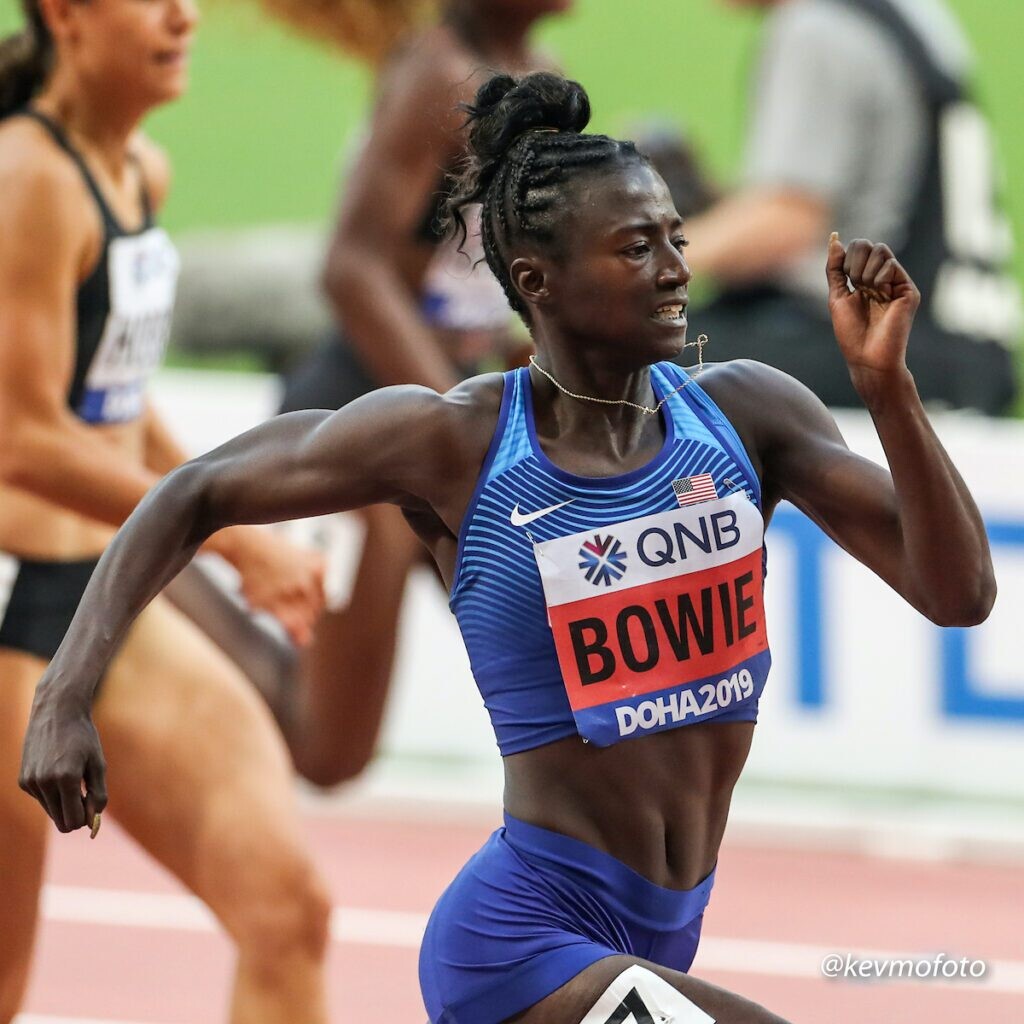
The medical examiner ruled Bowie’s death as “natural” and said complications during labour could have included eclampsia and respiratory distress. (Eclampsia is characterized by seizures related to a spike in blood pressure during pregnancy and can lead to coma, brain damage and death if not treated, according to the Preeclampsia Foundation. The foundation describes the condition as rare in the developed world and is “usually treatable if appropriate intervention is promptly sought.”)
Bowie was a three-time Olympic medallist who took gold in the 4x100m as a member of the U.S. relay team at the 2016 Rio Games. In addition to topping the podium in the relay in Rio, Bowie captured silver in the 100m and bronze in the 200m at the 2016 Summer Olympics.

The news of her death last month dealt a shocking blow to the track-and-field community in the United States and around the world. “We’ve lost a client, dear friend, daughter and sister,” Icon Management, Bowie’s management company, said in a statement confirming the athlete’s death. “Tori was a champion…a beacon of light that shined so bright! We’re truly heartbroken and our prayers are with the family and friends.”
Originally from Sand Hill, Miss., Bowie attended Pisgah High School. There, she earned state titles in the 100m, 200m, 4x10m relay and long jump. Earning a full athletic scholarship at the University of Southern Mississippi, she twice won gold in the long jump at the NCAA Women’s Indoor Track and Field Championship. According to her official bio at USA Track and Field, Bowie was first athlete from the University of Southern Mississippi, male or female, to sweep the long jump NCAA titles at both the indoor and outdoor events in a single season, a feat she accomplished between 2011 and 2010.
Bowie bookended her triumphs in Rio by taking bronze in the 100m at the 2015 World Athletic Championships in Beijing, and topping the podium in the 100m at the World Championships in London in 2017.
by Paul Baswick
Login to leave a comment
10 Reasons to Start Following Track and Field This Year
The 2023 season should be full of record-breaking performances from the sport’s biggest stars. Here are the most important things to know.
Track is back, and if the results from the indoor season and early outdoor meets are any indication, it should be another year of eye-popping results around 400-meter ovals this summer.
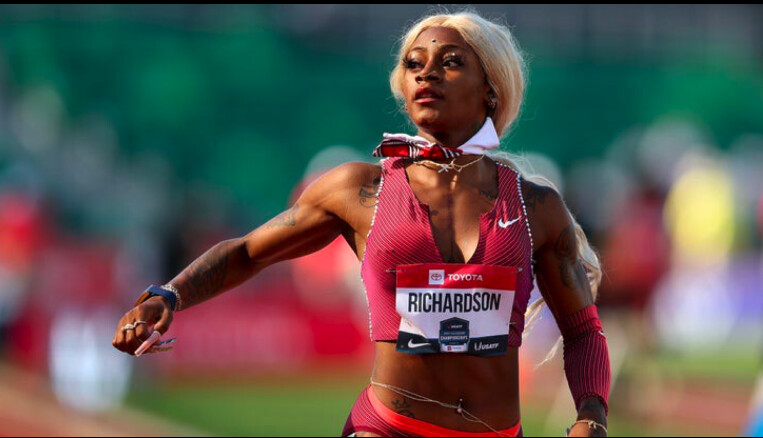
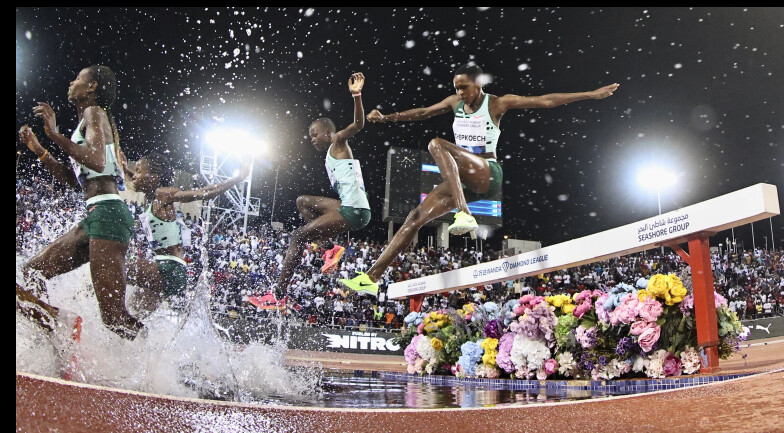
Why is track and field relevant to the average recreational runner?
Perhaps you’re running some of the same distances in your training and racing. Or maybe you have a connection to some of the events from your youth, days in gym class or on the playground. From a human performance perspective, no sport showcases the all-out speed, red-line endurance, max power, dynamic agility, and meticulous bodily control as track and field does.
Here’s a primer on the most awe-inspiring athletes and events of this summer’s track season. Because, come on: with a sport that includes events as multifaceted as the pole vault, as primal as the shot put, and as wild as the 3,000-meter steeplechase—a 1.8-mile race with 28 fixed barriers to hurdle and seven water pits to jump—what’s not to like?
One of the many things that makes track and field so special is that it’s one of the most diverse sports on the planet, both culturally and athletically.
Last summer, athletes from a record 29 different countries earned medals in the 25 different running, jumping, and throwing events at the World Athletics Championships in Eugene, Oregon.
At the highest level, there are athletes of all shapes and sizes from every culture and socioeconomic background. While there certainly are racial and cultural stereotypes that need dissolving and vast inequality among competing countries, from a performance point of view the sport is largely meritocratic, based on the time or distance achieved in a given competition.
Watching American Sydney McLaughlin-Levrone masterfully win the 400-meter hurdles in a world-record time last summer in front of a deafening crowd at Hayward Field in Eugene was a riveting experience. It was vastly different than watching Grenada’s Anderson Peters win the javelin world title with a career-best throw of 90.54 meters on his final attempt to beat India’s Neeraj Chopra, but both had edge-of-your-seat excitement, athletic excellence, and cultural significance.
One of the knocks against track and field in recent years is that it hasn’t done enough to attract casual fans the way professional football, basketball, hockey, and soccer have. Following the On Track Fest, the USATF Los Angeles Grand Prix on May 26-27 in Los Angeles is trying to up the ante by combining a mix of elite-level competition, an interactive fan festival, and top-tier musical performances.
Billed as the one of the deepest track meets ever held on U.S. soil, it will feature a star-studded 400-meter face-off featuring Americans Michael Norman, the reigning world champion, and Kirani James, a three-time Olympic medalist from Grenada, and a women’s 100-meter hurdles clash with world champion Tobi Amusan of Nigeria, Olympic silver medalist Keni Harrison of the U.S., and Olympic gold medalist Jasmine Camacho-Quinn of Puerto Rico.
Saturday’s action will be broadcast live on NBC Sports from 4:30 P.M. to 6 P.M. ET and be followed by a concert event called the Legends Jam, which will include appearances from some legendary athletes and be headlined by Grammy-winning singer Judith Hill.
American sprint sensation Sha’Carri Richardson will be racing the 100-meter dash at the USATF Los Angeles Grand Prix. You probably remember her for her perceived failures more than the astounding times she’s actually achieved on the track.
Two years ago, the sprinter from Dallas blew away the field in the 100-meter dash at the U.S. Olympic Trials with a 10.86 effort, but then she was famously suspended after testing positive for cannabis (which is on the World Anti-Doping Agency’s list of banned substances) and missed the Tokyo Olympics as a result. (She admitted using the drug to cope with the pressure of qualifying for the Olympics while also mourning the recent death of her biological mother.)
Then last year, despite strong early season performances, Richardson failed to make the finals of the 100-meter or 200-meter at the U.S. championships, so she missed out on running in the first world championships held on American soil.
This year, the 23-year-old sprinter appears to be locked in and better than ever, posting a world-leading 10.76 100-meter time on May 5 in Doha (she also ran an eye-popping 10.57 with an over-the-limit tailwind on April 9 in Florida) and posted the second-fastest time in the 200-meter (22.07) on May 13 at a meet in Kenya.
If she keeps it all together, expect Richardson to finally contend with elite Jamaican sprinters Shericka Jackson and Shelly-Ann Fraser-Pryce in the 100 and 4×100-meter relay in August at the World Athletics Championships in Budapest, Hungary.
A few years ago, American sprinter Fred Kerley was on his way to becoming one of the world’s best 400-meter runners. But he wanted more than that. What he really had his heart set on was becoming the world’s fastest man, a moniker that goes with the most dominant sprinter in the 100-meter dash.
Ignoring doubters, Kerley retooled his training and earned the silver medal in the 100-meter at the Tokyo Olympics (.04 seconds behind Italy’s Marcell Jacobs) and then continued his ascent last year by winning the U.S. championships (in 9.76, the sixth-fastest time in history) and world championships (9.86).
The 28-year-old from San Antonio, Texas, also became one of just two other runners (along with American Michael Norman and South African Wayde van Niekerk) to ever run sub-10 seconds in the 100-meter, sub-20 seconds in the 200-meter, and sub-44 seconds in the 400-meter. So far this year, Kerley has two of the four fastest 100-meter times of the season, including a speedy 9.88 on May 21 in Japan.
After trading barbs on social media this spring, Kerley and Jacobs are expected to face off in an epic 100-meter showdown on May 28 at a Diamond League meet in Rabat, Morocco, marking the first time the Olympic gold medalist and the world champion in the men’s 100m face off since the 2012 Olympic final, when Jamaican Usain Bolt beat countryman Yohan Blake. American Trayvon Bromell, the silver medalist at last year’s world championships, is also in the field, so it should be an extraordinary tilt.
If you’re a gambler, bet on Kerley to win that one and eventually get close to Bolt’s 9.58 world record. (To do so, he’ll be running faster than 26 miles per hour!) But don’t count out Kenya’s Ferdinand Omanyala, the early world leader (9.84), or fellow American sub-9.9 guys Bromell, Norman, Christian Coleman, and Noah Lyles at the 2023 World Athletics Championships on August 20, in Budapest. Depending on which three Americans join Kerley (who has an automatic qualifier) at the world championships, it’s actually quite likely the U.S. could sweep the top four spots in the 100 in Budapest.
If you’ve ever wanted to see the world’s top track and field stars competing live in the U.S., this is the year to do it. The May 26-27 USATF Los Angeles Grand Prix meet and June 3-4 Portland Track Festival are part of what might be the mosst compelling outdoor track season ever held on U.S. soil.
If you’re looking for an athlete to marvel at, start with Sydney McLaughlin-Levrone, the gold medalist in the 400-meter hurdles at the Olympics in 2021 and World Athletics Championships last summer. She’s been one of the sport’s rising stars since she was a teenager and yet she’s only 23. Her trajectory is still rising—especially since she moved to Los Angeles to train under coach Bob Kersee. Driven by her strong faith, McLaughlin-Levrone is the personification of hard work, grace and competitiveness.
This year she’ll temporarily step away from her primary event to show off her pure sprinting prowess when she opens her season in a “flat” 400-meter race at the Diamond League meet in Paris on June 9. Her personal best in the 400-meter is 50.07 seconds, set when she was a freshman at the University of Kentucky, but she clocked a speedy 50.68 while running over hurdles, en route to a world-record setting win at last summer’s world championships.
Her best 400-meter split as part of a 4×400-meter relay is 47.91, so it’s within reason to think she could be one of several runners to challenge the long-standing world record of 47.60 set in 1985 by East German Marita Koch. Because McLaughlin-Levrone has an automatic qualifier to the world championships in the 400-meter hurdles, she will likely run the open 400-meter at the U.S. championships and decide after the meet which one she’ll focus on.
American 800-meter ace Athing Mu has looked unbeatable for the past several years as she won Olympic gold in the event at the Tokyo Olympics and last year’s world championships. In fact, she has been unbeatable, having won 13 straight races since she dropped out of a mile race at the Millrose Games in January 2022. Going back to 2020 (when she was a senior in high school) and 2021 (during her one season at Texas A&M), she’s finished first in 51 of her past 53 races (relays included), with her only loss being a narrow runner-up finish to Kaelin Roberts in the 400-meter at the 2021 NCAA indoor championships.
Mu, who is also coached by Kersee and trains with McLaughlin-Levrone, seems to be the most likely athlete to challenge the women’s 800-meter world record of 1:53.28, set in 1983 by the Czech Republic’s Jarmila Kratochvílová. It’s the longest standing record in track and field, and only two runners have come within a second of it in the past 15 years. Her personal best of 1:55.04 is an American record and the eighth-fastest time in history. She’s still only 20 years old, so she has many years to keep improving and other historic opportunities ahead of her.
Mu said earlier this year she’d like to try a 400-800-meter double at an Olympics or world championships if the schedule permits—it’s only been done once successfully by Cuba’s Alberto Juantorena at the 1976 Games—but her coach has said she might attempt a 800-1,500-meter double next year at the Paris Olympics.
This year, Mu will run the 1,500 meters at the USATF Championships in July, but will likely defend her 800-meter title at the world championships in Budapest, as well as potentially running on the U.S. women’s 4×400-meter relay and the mixed-gender 4×400-meter relay (with McLaughlin-Levrone) for an opportunity to win three gold medals in a single championships.
With apologies to quarterback extraordinaire Patrick Mahomes, gymnastics all-arounder Simone Biles, and skiing superstar Mikela Shiffrin, pole vaulter Armand Duplantis just might be the most dynamically talented athlete in the world. That’s because he’s the world’s most dominant athlete (and has set six world records) in arguably the most demanding discipline, not only in track and field but quite possibly in any sport. No sport discipline involves such a dynamic combination of speed, power, precision and agility, and Duplantis, who is only 23, is already the greatest of all-time.
Prove me wrong or watch him set his latest world record (6.22 meters or 20 feet, 5 inches) at an indoor meet on February 25 in Clermont-Ferrand, France. That’s the equivalent of vaulting onto the roof of a two-story building, and in his case, often with room to spare.
Duplantis, who grew up in Lafayette, Louisiana, to athletic parents with Swedish and Finnish heritage, represents Sweden in international competitions. He started pole vaulting at age three, set his first of 11 age-group world-best marks at age seven, and won an NCAA title in 2019 as a freshman competing for LSU before turning pro.
All indications are that North Carolina State junior Katelyn Tuohy could become the next American running star. All she has done since she was young is win races and break records.
After winning the NCAA outdoor 5,000-meter a year ago, she won the NCAA cross country title in November. During the indoor track season this past winter, she set a new collegiate mile record (4:24.26) and won both the 3,000-meter and 5,000-meter title at the NCAA indoor championships in March. On May 7, the 21-year-old from Thiells, New York, broke the NCAA outdoor 5,000-meter record by 17 seconds, clocking 15:03.12 at the Sound Running On Track Fest.
Tuohy will be running both the 1,500-meter and 5,000-meter at the NCAA East Regional May 24-27 in Jacksonville, Florida, with the hopes of eventually advancing to the finals of both events at the June 7-10 NCAA Division I championship meet in Austin, Texas.
University of Arkansas junior Britton Wilson is a top collegiate star who is ready for prime time at the pro level. She won the 400-meter in a world-leading and collegiate record time of 49.13 in mid-May at the SEC Championships, where she also won the 400-meter hurdles (53.23) in a world-leading time. The 22-year-old from Richmond, Virginia, was the runner-up in the 400-meter hurdles at last year’s U.S. championships and fifth in the world championships, and could contend for a spot on Team USA in either event at the July 6-9 U.S. championships.
Kerley and Lyles are expected to square off in a 200-meter race at the USATF New York Grand Prix meet on June 24 at Icahn Stadium on Randall’s Island in New York City. There are also two high-level Puma American Track League meets in Tennessee—the Music City Track Carnival June 2 in Nashville and the Ed Murphey Classic August 4-5 in Memphis—and two Under Armour Sunset Tour meets organized by Sound Running on July 22 in Los Angeles and July 29 in Baltimore.
The best U.S. meet of the year, though, will be the USATF Outdoor Championships held July 6-9 in Eugene, Oregon, where American athletes will be vying for top-three finishes to earn a chance to compete for Team USA at the 2023 World Athletics Championships August 19-27 in Budapest.
The U.S. season will culminate with the September 16-17 Pre Classic in Eugene, Oregon, a two two-day meet that will double as the finals of the international Diamond League circuit and should include many of the top athletes who will be representing their countries in next summer’s Paris Olympics. (And if you want to see the country’s top high school athletes run unfathomable times for teenagers, check out the Brooks PR Invitational on June 14 in Seattle, Washington.)
At the June 2 Diamond League meet in Rome, Italy, the men’s field in the 5,000-meter run will have what might be the fastest field ever assembled, with 13 runners who have personal best times of 12:59 or faster.
The field will be headlined by Joshua Cheptegei of Uganda, who lowered the world record to 12:35.36 in Monaco three years ago. (That’s a pace of 4:03 per mile!). But it will also include Kenya’s Jacob Krop (12:45.71) and Nicholas Kipkorir (12:46.33), Ethiopia’s Yomif Kejelcha (12:46.79), American Grant Fisher (12:46.79), Canadian Mohammed Ahmed (12:47.20), and Guatemalan-American Luis Grijalva (13:02.94), among others. With a big prize purse at stake and pacesetters ramping up the speed from the start, it should be a race for the ages.
by Outside Online
Login to leave a comment
Kenya's track sensation Mary Moraa has her eyes firmly focused on a World Championship conquest in Budapest later in the year
Barely in her 20s, Kenya's track sensation Mary Moraa is already hogging the global limelight and stealing headlines at whim.
The 2022 Commonwealth Games 800 metres gold medallist has rocked premier global athletics shows in recent years to deservedly cut herself a niche in the Hall of Fame.
Fondly known as "The Kisii Express" by her dotting fans, Moraa has already claimed her space in the cutthroat world of athletics. Undoubtedly, the decorated track prodigy deserves every ounce of international acclamation.
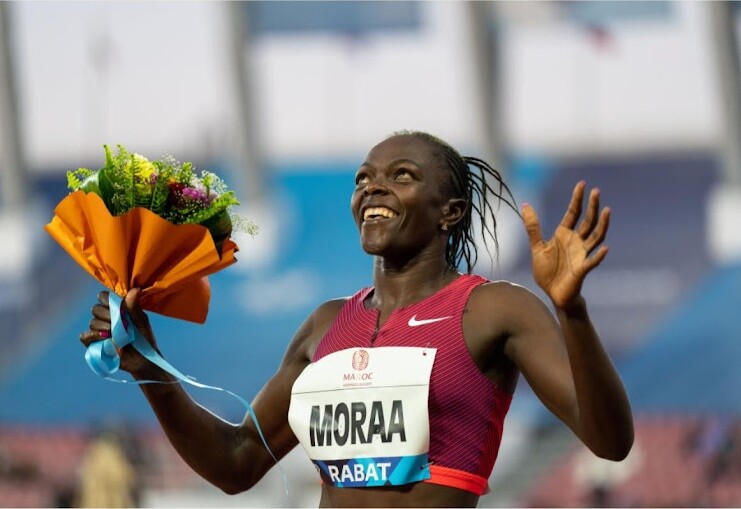
Only recently, she set a new PB in April after storming to the 400m title at the Botswana Golden Grand Prix in an astonishing time of 50.44.
The sublime performance she pulled off in the blistering contest saw her smash her previous national record by 0.24 seconds, subsequently attaining the World Athletics Championships qualifying standards of 51.0 seconds.
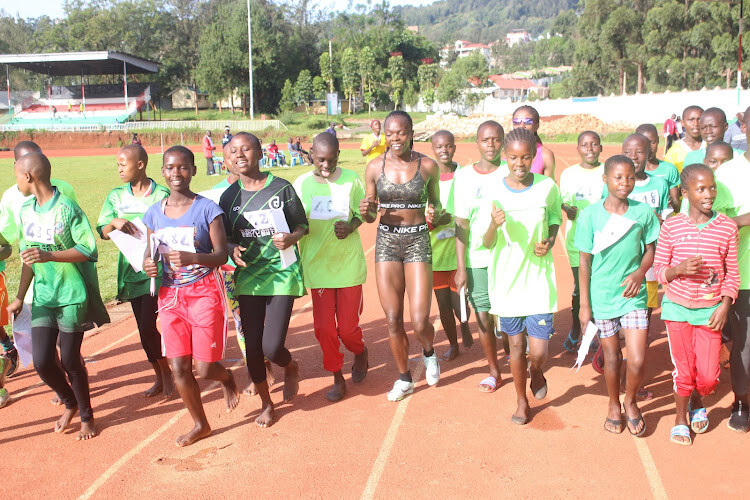
"My previous 400m best was 50.67, which I attained at the Diamond League meeting in Brussels in September."
In Botswana, the two-lap specialists obliterated a stellar field that boasted Olympic and world finalist Candice McLeod of Jamaica, USA’s Kyra Jefferson, and the Botswana duo of Naledi Lopang and Thompang Basele.
She breezed to victory ahead of South Africa’s Miranda Coetzee and McLeod who crossed the line in 51.13s and 51.17s respectively.
She rallied from behind to take the lead with 30m to go on her way to the winner's podium at the National Stadium, Gaborone.
Moraa smashed the national record when she won the Kenyan trials for World Championships and Commonwealth Games in 50.84 on June 25, last year at the Moi Stadium, Kasarani.
Moraa, 23, has vowed to step into the big shoes of her role model Hellen Obiri, the middle and long-distance track sensation.
"I've always admired Obiri. I grew up watching her clinch titles and her amazing performances have inspired me a great deal. To an extent, there is a part of her that lives in me. I just want to be exactly like her," Moraa said.
"To date, Obiri still inspires me a great deal and I'm eager to emulate her success on the international stage," she added.
Indeed, Moraa has every reason to admire Obiri. She is the only woman to have won world titles in indoor track, outdoor track, and cross-country races.
Notably, Obiri is a two-time Olympic 5000 metres silver medallist from the 2016 Rio and 2020 Tokyo Olympics, where she also placed fourth over the 10,000 meters.
She is a two-time world champion, having claimed the 5000 m title both in 2017 and 2019 when she set a new championship record.
Obiri also tucked away a bronze in the 1500 metres during the 2013 World Championships and a silver in the 10,000 m in 2022.
She won the 3000 meters race at the 2012 World Indoor Championships, claimed silver in 2014, and placed fourth in 2018. She romped to the 2019 World Cross Country title and triumphed in the 2023 Boston Marathon.
Moraa said she and Obiri share a lot in common. Besides being compatriots, Moraa is elated they hail from the same county.
Coached by seasoned National Police athletics team gaffer Alex Sang, Moraa has her eyes firmly trained on a World Championship conquest in Budapest, Hungary later in the year.
She said she intends to run the 800m race at the World Championships in Budapest, Hungary in August, adding that she is determined to breast the tape in under two minutes.
Born on June 15, 2000, Moraa attended Nyangononi Primary School in Bassi Borabu, Kisii County where she sat for her Kenya Certificate of Primary Education (KCPE) in 2014.
Her potential in athletics came to the fore at Nyangononi when she ran away with several titles in the sprints and middle-distance races.
"I stamped authority in 100m, 200m, 400m, and 800m and even shattered the 400m East Africa school games record in 2014," Moraa proudly recounted.
Upon completing her studies, Moraa proceeded to Ibacho Secondary School in Kisii County but lasted there for only two years before transferring to Mogonga PAG Mixed secondary school where she sat for her Kenya Certificate of Secondary Education (KCSE) in 2018.
"While at Ibachi, I experienced difficulties paying my school fees and it was the principal who would chip in most of the time. Unfortunately, he got transferred from the school and I was left stranded.
"I later joined Mogonga Mixed Secondary School, where I got a lot of support from the principal who also happened to be my coach."
An orphan from a disadvantaged background, Moraa got financial help from her school principal Aron Onchonga who paid all her school fees at Mogonga. Indeed, aside from affording her pertinent financial assistance, Onchong'a played a key role in honing her skills and carving her path to stardom. It was during her years in Mogonga that Moraa started jutting out her talons on the track.
"I am grateful to the school administration and the Principal for the moral and financial support they gave me while there."
During my years in Mogonga, I wanted to remain a role model to the young girls who shied away from sporting activities. I was determined to train and participate in various activities even after completing school," said Moraa.
by Tony Mballa
Login to leave a comment
World Athletics Championships Budapest 23
From August 19-27, 2023, Budapest will host the world's third largest sporting event, the World Athletics Championships. It is the largest sporting event in the history of Hungary, attended by athletes from more than 200 countries, whose news will reach more than one billion people. Athletics is the foundation of all sports. It represents strength, speed, dexterity and endurance, the...
more...U.S. Olympian stripped of national title after positive cannabis test
On Tuesday, The U.S. Anti-Doping Agency (USADA) reported the one-month suspension of U.S. Olympian Tara Davis-Woodhall after a positive cannabis test in February 2023. The test came after Davis-Woodhall won the long jump at the 2023 USA Indoor Track and Field Championships, held in Albuquerque, N.M. As a result, she will have to give up her national title and she will forfeit any medals, points and prizes accumulated between Feb. 17 and March 21.
Davis-Woodhall tested positive for a urinary metabolite of THC (the active ingredient in cannabis) in a sample collected on Feb. 17, according to the report. The use of cannabis is still banned in competition by the World Anti-Doping Agency (WADA) and usually holds a penalty of up to three months. Davis-Woodhall’s period of ineligibility was reduced to one month because her use of the substance occurred out of competition and was unrelated to sports performance, per USADA.
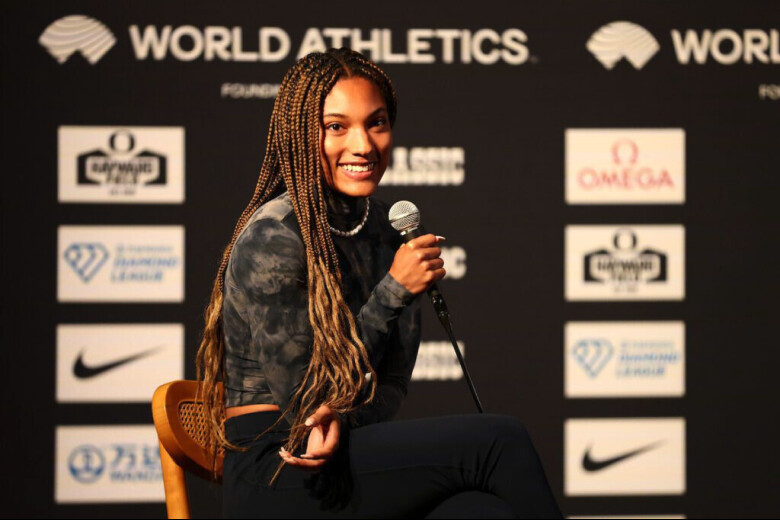
The 23-year-old also successfully completed a substance abuse treatment program.
Davis-Woodhall qualified for the 2020 Summer Olympics in the women’s long jump, where she placed sixth in the final. She is married to a prominent U.S. Paralympian Hunter Woodhall, who won medals at the previous two Paralympic Games.
In 2021, WADA altered its code involving THC, allowing for a reduced three-month sanction if the athlete establishes that their use of the substance occurred out-of-competition and unrelated to sports performance. This came after the July 2021 suspension of Sha’Carri Richardson, who lost her chance to compete at the 2020 Olympics after she tested positive for the substance. Richardson also served a one-month suspension and had her U.S. outdoor 100m title revoked.
Richardson’s suspension caused a stir on social media, with many siding with the U.S. sprinter. Even Toronto rapper Drake weighed in on the suspension, name-dropping Richardson in the song No Friends in the Industry of his Certified Lover Boy album.
by Running Magazine
Login to leave a comment
Innovation in Motion: The Impact of Technology on the Running Culture in Canada
Canada boasts thousands of running paths in beautiful places, and most of the trails are in the cities. You will enjoy amazing running tours in Canada, which allow you to impose pristine wilderness and bustling metropolises. Running guides also show runners the top sights in the cities and the local traits that make Canada unique.
Canadians love sports, and some of the most popular sports in the country include ice hockey, curling, Canadian football, basketball, and golf. Their love for sports has also made sports betting popular in the region. Those looking for a suitable betting site will have to check the complete list of the reviewed and reputable platforms to find the best ones in Ontario. However, running remains a sport that’s ingrained in Canadian culture.

Here are the most popular running cities in Canada:

1. Edmonton: This city has a fantastic running culture. It offers both outdoor and indoor facilities.
2. Ottawa/Gatineau: Ottawa offers a wide range of opportunities for all kinds of runners. It offers indoor tracks, paved paths, and excellent trails.
3. Guelph: This city boasts a robust running culture. It offers multiple outdoor and indoor running tracks.
4. Victoria: This city has top-rated facilities for pro athletes. It also boasts a community of outdoor enthusiasts.
5. Quebec City: This is the city for cross-country runners. It also offers running paths excellent for workouts on a soft surface.
Technological innovations have impacted many aspects of Canadians, including their running culture. Here are the technologies that have impacted the running culture in Canada:
Wearable Technologies
Wearable technologies enable runners to track everything that happens when they are on track. For example, they can track their heart rate and perspiration. Therefore, the wearables can help runners to adjust their running to meet their desired goals.
Most wearable devices come with an app installed and are easy to use. For example, Canadian-based Carre Technologies launched a biometric shirt that retrieves information from the runner. This information makes the runner more conscious about what is happening in their body as they run.
Mobile Apps
Canadians can access running apps that help them with route tracking and other in-depth metrics that track heart rate and calorie burn. This kind of data has enabled the runners to have more concrete running goals because they can compare data from previous runs and adjust their goals accordingly. The apps can also track the runners’ routes and allow them to share their achievements with friends on social media.
A popular running app is the RunGo app by a Vancouver-based company. The app lets runners discover the best routes and offers turn-by-turn voice navigation. It also allows runners to record time, elevation, distance, splits, and progress through the route. Furthermore, you can record your experiences and create an inspiring story.
Key Takeaways
Technology has dramatically impacted the running culture in Canada in the following ways:
1. The runners have more clearly-defined roles
2. They can also easily monitor and evaluate their progress
3. Technology has also enabled runners to explore new routes
4. It has also helped running to be a social activity as well.
Login to leave a comment
3-time champion Molly Huddle is ready for 2023 NYC Half
The United Airlines NYC Half came into Molly Huddle‘s life in 2014 and it was one of the key turning points in the now 38 year-old’s storied career. Never a fan of cross country or indoor track, the 28-time national champion liked to de-camp from her Providence, R.I., home in the winter to put in her pre-season base miles in the warmth of Arizona. The NYC Half, with its mid-March date, was the perfect race to close-out her winter training block. Her long-time coach Ray Treacy, whom Huddle affectionately calls “The Guru,” gave his blessing and she signed-up for the 2014 race. It would be her first-ever half-marathon.
With the temperature right at the freezing mark, Huddle ran the entire race with the leaders. She went through the first 10-K in 33:01, and the second in a much faster 32:21 as the pace heated up. Although too far behind eventual winner Sally Kipyego (1:08:31), she finished a close third to eventual 2014 Boston Marathon champion Buzunesh Deba, 1:08:59 to 1:09:04.

“It was good,” a shivering Huddle told Race Results Weekly’s Chris Lotsbom that day. “I think I stuck my nose in it in the beginning and the distance got to me a little in the end, but it was definitely a fun experience. I definitely want to do another one.”
The rest, shall we say, is history.
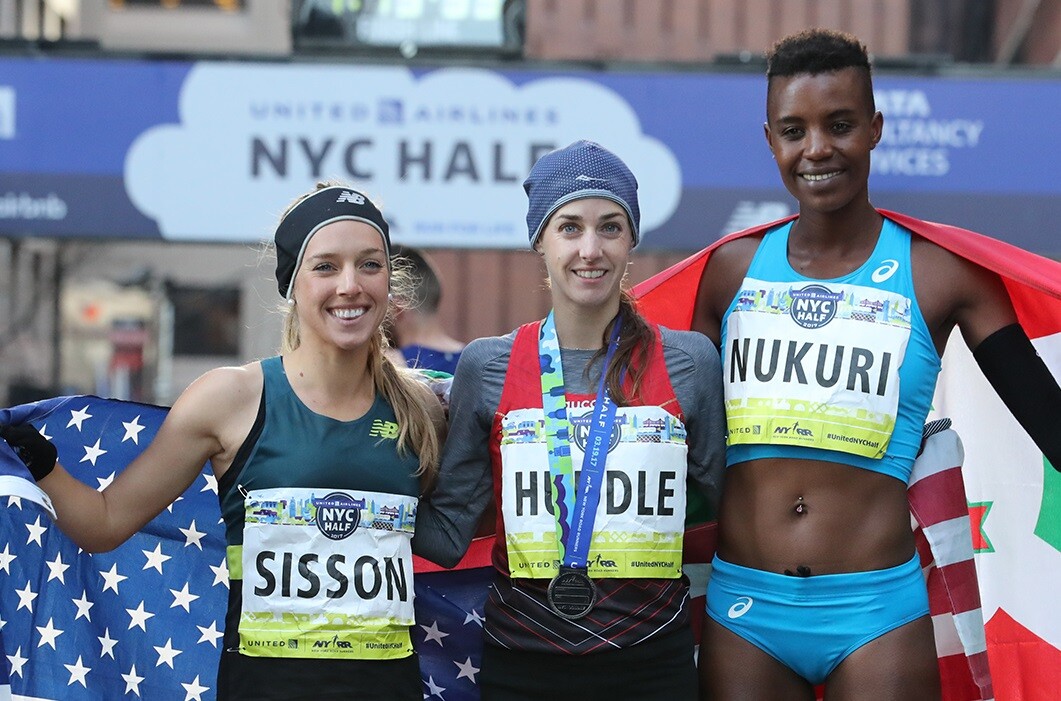
For the next three years Huddle would repeat the same winter program, training in Arizona then coming to New York for the NYC Half before starting her track season*. She won in 2015, 2016 and 2017, and in the 2016 race she set the still-standing USATF record for an all-women’s race: 1:07:41. During her reign at the top, she beat top athletes like Sally Kipyego, Caroline Rotich, Des Linden, Aliphine Tuliamuk, Buzunesh Deba, Emily Sisson, Edna Kiplagat, Diane Nukuri, and Amy Cragg. She also lowered her 10,000m personal best from 31:28.66 to an American record 30:13.17, a mark which would stand for more than six years until Alicia Monson broke it just 11 days ago at The Ten in San Juan Capistrano, Calif. She also collected $65,500 in prize money from the event which is organized by New York Road Runners.
Huddle returns to the NYC Half for the first time in six years on Sunday, but she’s no longer focused on winning. The race comes about 11 months after she, and husband Kurt Benninger, had their first child, daughter Josephine Valerie Benninger, whom Huddle calls “JoJo.” Speaking to Race Results Weekly at a press event yesterday in Times Square, she reflected on her history with the race.
“The last time I did the Half was 2017, I think, so a long time,” said Huddle, wearing a warm hat and jacket on a cold, late-winter day. “Great to be back. Great to be running again seriously after having the baby in April. So, this will be a good test.”
Huddle has been slowly building her fitness since giving birth to Josephine. She first returned to racing last August at the low-key Bobby Doyle Summer Classic 5 Mile in Narragansett, R.I., –very close to her home– clocking 29:17. Since then she has run in a series of local races in New England –a pair of 10-K’s, a 5-K cross country, and a half-marathon– to regain her racing chops.
Then, in January of this year, she ran the super-competitive Aramco Houston Half-Marathon and clocked a very good 1:10:01, a mark which qualified her for the 2024 USA Olympic Team Trials Marathon. She went back to training, and the NYC Half should give her a good reading on her progress.
“I’m really happy to fit it back in the schedule,” said Huddle, who is still breastfeeding and will be pumping while she is in New York (Kurt is with Josephine at home in Providence). “I feel like I’m having more baseline workouts now, less of a building phase and more back to normal. I’ve had a few little injury problems last month, but I’m coming around.”
A well-traveled athlete, Huddle is sticking close to home for her races now. New York is a three and one-half hour drive (or train ride) from Providence.
“I love racing within a drive distance of home now because of the baby, and this is an easier race for me to get to,” Huddle said. “So that’s good.”
Sunday’s race has yet another purpose for Huddle. It will kick-off her training for her next marathon, a distance that she hasn’t taken on since the 2020 Olympic Trials in Atlanta when she was forced to drop out with an injury. Although she wasn’t at liberty to reveal which race it will be, she said that the timing of the NYC Half was perfect, just like it always was.
“So, I’m really focusing more on the roads now; it fits in really well with that plan now,” Huddle said. She continued: “This is going to kick off a marathon build-up for me, so this will be a really good race to fit into my marathon block as we go forward the next two months.”
by David Monti
Login to leave a comment
United Airlines NYC Half-Marathon
The United Airlines NYC Half takes runners from around the city and the globe on a 13.1-mile tour of NYC. Led by a talent-packed roster of American and international elites, runners will stop traffic in the Big Apple this March! Runners will begin their journey on Prospect Park’s Center Drive before taking the race onto Brooklyn’s streets. For the third...
more...Should sub-four be no more?
Over the weekend at Boston University’s David Hemery Valentine Invitational, 52 runners went sub-four in the men’s mile, including five Canadians: Cameron Proceviat, Matthew Beaudet, Charlie Dannatt, Alec Purnell and Foster Malleck. With the advancement of super shoes and the responsiveness of the Boston indoor track, the sub-four-minute mile is still impressive, but is it as remarkable as it used to be?
Last week, Track and Field News, a database that has kept track of sub-four miles since Roger Bannister became the first man to break the barrier in 1954, announced it would no longer update its chronological list of runners who break the barrier. The site released a statement: “The advent of super-shoes has bombarded the 4:00 barrier into something no longer relevant for tracking, although many new members would have made it even without high-tech footwear.”According to an article in Outside, the original decision to scrap the list was based on the (non-scientific) belief that the sub-four stat had lost popularity.
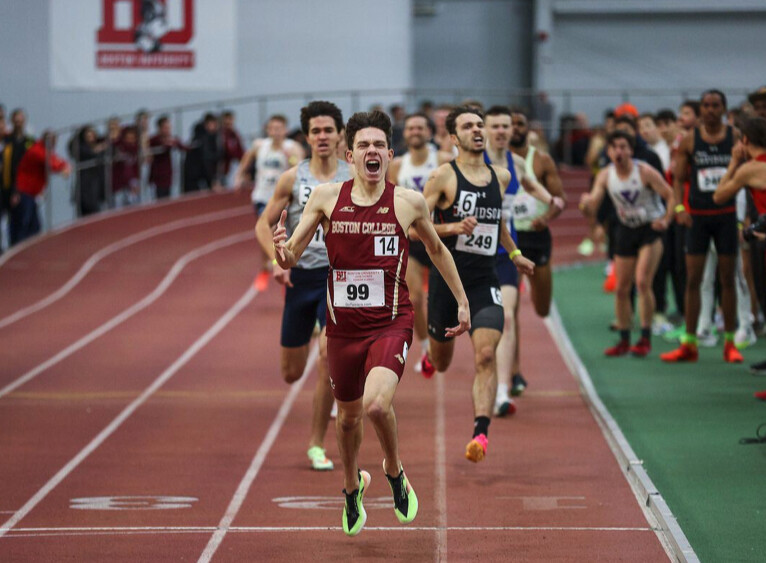
In a later article, Track and Field News editor Garry Hill told Outside: “In retrospect, I now think the opposite might be true, as modern shoes/tracks/training have combined to make a shot at a sub-4:00 now a reasonable goal for a lot more people.”
At the 2023 Millrose Games in NYC, U.S. Olympian Yared Nuguse ran the second-fastest mile in history, clocking 3:47.38, a new North American record, and only milliseconds off the indoor mile world record of 3:47.01. The American track and field community celebrated the mark, but faster times also bring quicker standards and higher expectations.In the past five years, shoe technology and track surfaces have changed, and running must adapt with it.
The Boston University track, which was built in 2002, is unusual in that it was built to the maximum allowable specifications (in terms of the surface, the 18.5 degree steepness of the banked turns); it is considered one of the best tracks in the world for middle distance runners chasing fast times.And while these super spikes bring faster times, what are the athletes supposed to do? Buy old shoes to simulate Bannister’s iconic 1954 race with leather spikes on a cinder track?
As mile times for elite middle-distance runners now stray into the high-3:40s and low-3:50s, the sub-four mile matters less and less; but, like breaking three hours for a marathon or 20-minutes for a 5K, any competitive distance runners will always want their mile time to start with a three. That will never change.
After an online uproar, Track and Field News relented, and said they would continue to keep track of sub-four-milers in their database. To this day, it is still a feat only 75 Canadian men have accomplished (indoor and outdoor)—enough to fill a school bus. No matter how many runners break four, it will always be a barrier many will chase.
by Running Magazine
Login to leave a comment
A sub four minute mile is still an amazing feat and should always be just that! - Bob Anderson 2/19 7:52 am |
The Armory Rebranded as the Nike Track & Field Center
It’s arguably the most famous indoor track in the country. And now, the Armory Track in New York’s Washington Heights neighborhood has been rebranded the Nike Track & Field Center at the Armory.
On Thursday, the sporting goods giant officially unveiled the name as part of a multilayered partnership intended to enhance and expand opportunities for children of all ages to take part in the track’s running activities. These include CityTrack, Little Feet and Tiny Feet programs for elementary and middle school kids, an Armory College Prep program for high school students and Armory College Prep Middle School and Great Minds programs for younger children.

More than 1 million miles are run on The Armory track each year and the venerable complex has played host to countless Olympic and World medal athletes who have set more records there than at any other indoor track. It is also the site of the famed Millrose Games.
“The synergy between our organization and Nike cannot be overstated,” said Jonathan Schindel, copresident of The Armory Foundation. “Keeping kids physically, mentally, culturally, socially and intellectually fit during their school years, and beyond, is paramount. The best way to achieve this is to develop healthy, well-rounded children who are prepared for success in and out of the classroom, instill in them a love and passion for movement, and provide them with fun opportunities to develop this passion. Now thanks to Nike, we will be able to ensure that children in our neighboring communities of Washington Heights, Inwood and Harlem will continue to have such opportunities, while enabling us to expand our outreach.”
The Armory Foundation copresident Rita Finkel added that the track will also benefit from Nike’s “expertise in running, youth play, sports and movement,” as well as its relationships with many of the top athletes and events including the Nike Indoor Nationals, the top high school indoor event.
“Our partnership with The Armory Foundation underscores Nike’s deep commitment to ensuring that communities have access to running and opportunities to play and stay active,” said Roderick Blaylock, vice president of NYC Nike Inc. “The Armory is not only one of the preeminent track and field facilities in the world, but it also has a long history of preparing students as young as fourth grade for higher education and college. Rooted in our belief that running and sports have the power to bring people together, we are teaming up with The Armory to champion community and athletes.”
Among the upcoming events at the track will be the HBCU Showcase on Jan. 14 where high school students will learn about campus life at approximately 20 prestigious Historically Black Colleges and Universities, as well as the Millrose Games on Feb. 15 and the Nike Indoor Nationals, slated for March 10 to 12.
The event also served to introduce the Nike ZoomX Invincible Run Flyknit 3 running shoe.
Login to leave a comment
Britton Wilson Breaks Athing Mu's Collegiate Indoor 600m Record
Razorback Britton Wilson opened the indoor track season with a collegiate record as runner-up in the 600m on Friday evening during the Arkansas Invitational held at the Randal Tyson Track Center.
Wilson posted a time of 1:25.16 over the distance, breaking the previous collegiate record of 1:25.80 set by Texas A&M’s Athing Mu in 2021.

Razorback volunteer Shamier Little won the race in 1:24.65, which ranks No. 5 on the U.S. all-time list and No. 7 on the world all-time list. Third in the race was Arkansas alum Shafiqua Maloney in 1:27.45.
For Wilson, her mark ranks No. 7 U.S. and No. 10 world all-time. The previous UA record of 1:27.29 was set in December of 2021 by Morgan Burks-Magee. Wilson had a time of 1:30.34 in her debut at the distance last year.
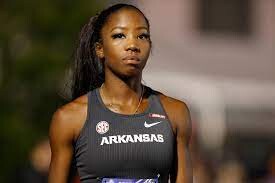
Victories for the Razorbacks included Ackera Nugent with a world-leading 8.00 in the 60m hurdles, moving to No. 5 on the UA all-time list. Arkansas alum Taliyah Brooks finished second in 8.13 as both hurdlers bettered the meet record of 8.13 held by Payton Chadwick since 2018.
Paris Peoples also registered a world-leading effort of 53.10 in the 400m in leading a 1-2-3 sweep with teammates Ashanti Denton runner-up in a career best 53.68 while Aaliyah Pyatt finished third in 53.79.
Racing at the mile distance for the first time indoors, freshman Mary Ellen Eudaly clocked a 4:43.01 to lead a 1-2-3 Arkansas finish. Eudaly bettered her outdoor mile time of 4:51.99. Finishing behind her with a pair of career best times were Heidi Nielson (4:44.79) and Laura Taborda (4:45.77).
A sweep of the top four places in the 200m had Rosey Effiong leading the way in 23.45 as Amber Anning finished second in 23.47 while Nickisha Pryce set a PR of 23.76.
Alum Jada Baylark won the 60m in 7.25 while Ariane Linton was the top Razorback at 7.46 for fifth. Linton ran 23.93 for fourth in the 200m. Gracie Hyde won the 800m in 2:13.50.
Racing a pair of relay teams in the final section of the 4 x 400, the Razorbacks registered world-leading times of 3:30:38 and 3:30.79.
The winning squad included Anning (52.64), Wilson (51.60), Pryce (52.59) and Denton (53.55). The runner-up crew had Peoples (54.09), Effiong (51.51), Joann Reid (52.15) and Pyatt (53.04).
The women’s opening event produced a career best for Sydney Billington as she cleared 5-10.75 (1.80) in placing second in the competition. Billington, who had a previous best of 5-10, cleared five consecutive bars on first attempts before missing three attempts at 6-0 (1.83).
Texas A&M’s Bara Sajdokova, who needed two attempts at 5-10.75, cleared the 6-0 height on a third try for the win.
Kaitlyn Banas led a 4-5-6 finish for the Arkansas vaulters with a clearance of 13-6.5 (4.13). Grace Ridgeway matched that height to set a career best in fifth place. Bailey McCorkle and Marin Chamberlin each cleared 13-0.75 (3.98) to place sixth and eighth.
by Shawn Price
Login to leave a comment
Christian Coleman, Noah Lyles and Ronnie Baker to Clash in Epic 60m at 2023 Millrose Games
The 115th Millrose Games, the world’s most historic indoor track & field event is only six weeks away. The Men’s 60m will surely be one of the most anticipated races of the entire meet, as Christian Coleman, Noah Lyles, and Ronnie Baker, three of the best sprinters in the world, will be taking their talents to the infield straightaway at the iconic New Balance Track & Field Center at The Armory.
The 115th Millrose Games is scheduled for Saturday, February 11th.
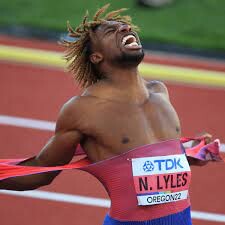
Coleman is the defending Millrose Games champion, World Record holder, and 2018 World Indoor Champion in the 60m. His lightning-quick starting ability makes him nearly unstoppable over this short distance, and he set the current world record of 6.34 seconds in 2018. Outdoors, he has two World Championship gold medals and three silver medals in the 100m and 4x100m relay.
Lyles is the reigning back-to-back World Champion, American Record holder, and the third-fastest man ever in the 200m. He also claimed the Olympic bronze medal in Tokyo. Lyles, the 2022 USATF Male Athlete of the Year, has been open about his pursuit of the world records held by Usain Bolt, and by dropping down in distance to challenge the short-sprint specialists, he hopes to continue improving his start and putting the pieces together for another year of dominance.

Baker is the third-fastest 60m runner in history, and one of the most consistent sprinters competing on the circuit. He is an Olympic finalist, World Indoor bronze medalist, and two-time NCAA champion. Baker is no stranger to the Millrose Games stage, winning the 60m in both 2018 and 2020.
Other athletes in the field include:
–Josephus Lyles, Noah’s younger brother. Lyles is a former World Junior Champion, and he placed fifth in the 200m final at this year’s USATF Outdoor Championships.
–Ackeem Blake of Jamaica, NACAC 100m Champion, and semifinalist at the World Championships.
–Miles Lewis, the 60m national record holder for Puerto Rico.
As always, the Millrose Games will feature the absolute best athletes in the sport, including dozens of Olympians and world champions. Some of the big names already announced include Alicia Monson, Konstanze Klosterhalfen, Abby Steiner, Jenna Prandini, Geordie Beamish, Cooper Teare, Josh Kerr, Katie Nageotte, Sandi Morris, Katerina Stefanidi, Ryan Crouser, and Joe Kovacs, with many more still to come.
The Millrose Games is a World Athletics Indoor Tour Gold meet. With the highest-level competition at the youth, high school, collegiate, club, and professional levels, there is truly something for everyone at the Millrose Games.
by Letsrun
Login to leave a comment
NYRR Millrose Games
The Pinnacle of Indoor Track & Field The NYRR Millrose Games, first held in 1908, remains the premier indoor track and field competition in the United States. The 2025 edition will once again bring the world’s top professional, collegiate, and high school athletes to New York City for a day of thrilling competition. Hosted at the New Balance Track &...
more...Quebec’s Olivier Desmeules breaks 37-year-old Canadian record
As the indoor track and field season kicks off for many collegiate athletes, Olivier Desmeules of Quebec City started his season with a bang on Saturday at the Penn State Intrasquad Meet, shattering the men’s U23 Canadian 600m record.
Desmeules clocked a record-breaking 1:16.63 (solo) to break Brian Thompson’s previous U23 600m record of 1:17.06 from the 1985 Canadian Indoor Championships in Sherbrooke, Que.

The 22-year-old is an up-and-coming middle-distance runner at Penn State University, specializing in the 800m. Desmeules won bronze in the 800m at the 2022 Canadian Track and Field Championships in June, behind world 800m medalist Marco Arop and Canadian 800m record holder Brandon McBride.
The 600m is a rare middle-distance running event that is only commonly run in the NCAA Big Ten Conference during the indoor track and field season.
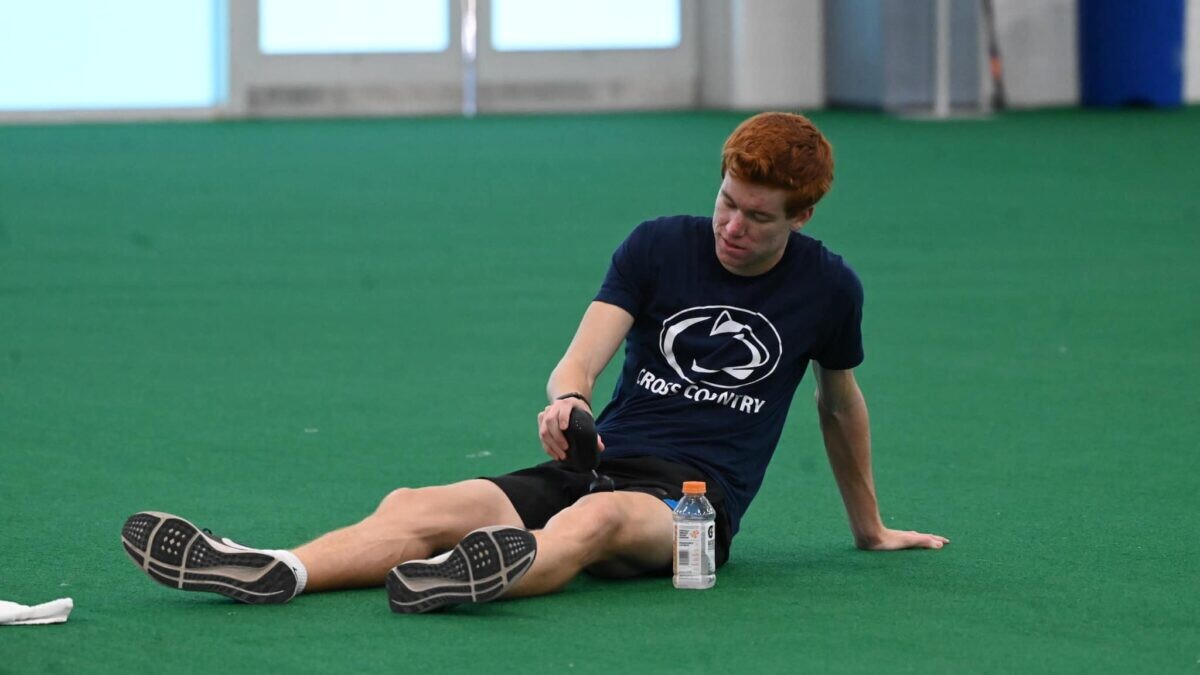
The head coach of Penn State’s Track and Field program, John Gondak, said Desmeules’ time was a top-five 600m result in school history, joining elite company Isaiah Harris and former world relay champion Casimir Loxsom.
Desmeules ran one season with Laval Rouge et Or in 2020-2021 before transferring to Penn State University in 2021. The Penn State track and field program is known for producing some of the best middle-distance runners in the NCAA.
by Marley Dickinson
Login to leave a comment
Did You Know the Boston Athletic Association Has a Membership?
Joining isn’t as simple as you might think.
The 1983 Boston Marathon champion Greg Meyer is a member of the Boston Athletic Association (B.A.A.). So is Bobbi Gibb, women’s champion during the “pioneer era” of the marathon in 1966, ’67, and ’68.
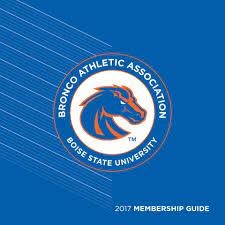
But Kathrine Switzer, who made headlines in Boston in 1967, is not. Nor is Meb Keflezighi, the 2014 champion.

Tom Grilk, the CEO who retired in April, has been a member since 1987. The new CEO, Jack Fleming, is not.
Michael O’Leary, M.D., a surgeon at Brigham and Women’s Hospital and chairman of the B.A.A.’s Board of Governors (which is essentially the same as a board of directors) has been a member of the B.A.A. since 1989. All 13 Governors (10 men, three women) are members—they have to be, in order to be picked to serve on the board.
Scott Peterson, a Miami-area corporate finance professional, is a member, and he has his membership listed prominently on his LinkedIn profile. When asked by Runner’s World about it, Peterson, a marathon veteran, called the group “like-minded people who support the running community.” He said, “It’s a real honor for me and anyone to be part of the membership of B.A.A.”
But what is this selective group, exactly? Who are they? And how are they chosen?
A local mystery
Information about membership on the B.A.A. website is scant, which cloaks the group—intentionally or not—in secrecy. Several people who are deeply involved in the Boston-area running community told Runner’s World they did not know such a group existed. (There is also a B.A.A. Running Club, which is open to runners in the Boston area, but it is different from the membership.)
Chris Lotsbom, a B.A.A. spokesperson, answered multiple questions from Runner’s World about the membership via email. He said the group currently has 174 people.
He also explained that the membership model goes back to the B.A.A.’s founding in 1887. The marathon started 10 years later, in 1897.
The organization had, in its earliest days, a building with a pool, indoor track, bowling alley, and boxing room, among other amenities, like a golf club, for its dues-paying members. The B.A.A. was similar to other athletic clubs across the country, most notably the New York Athletic Club, which still exists.
In the 1930s, during the Great Depression, the B.A.A. lost its headquarters building and its other properties. All that remained was the marathon, the bylaws of the organization, and a small group of members.
The members kept the B.A.A. and the marathon going. And they remain to this day, written into the organization’s bylaws to promote “the common good and the health and welfare of the general public and the encouragement of the general public to improve their physical condition.”
Tom Derderian, executive producer of Boston: The Documentary and author of Boston Marathon: Year-by-Year Stories of the World’s Premier Running Event, takes a skeptical view of the leadership back in the day.
“The B.A.A. expected that their investments in the 1920s would continue to grow,” he wrote to Runner’s World. “The stock market crash and Depression and World War II removed all B.A.A. assets, leaving the Association with only its name, an indoor track meet, the Boston Marathon—and the founding attitude that only B.A.A. members could know what was best.”
The modern-day membership
Today, as with any group, some members are actively engaged in day-to-day matters of the organization, attending meetings, voting, lending expertise, or volunteering at B.A.A. events. Others are not involved at all.
“For us today, membership is a valuable asset when tapped into,” Fleming said in a call with Runner’s World. “There’s still work to be done, but leadership and staff rely on the members for a variety of things. They serve on committees. They provide guidance in areas, their expertise. So finance, real estate, of course, running, community, the professional side, technology.”
For example, when the B.A.A. wanted to buy a building in Hopkinton near the marathon starting line, the organization got real estate advice from some of the members during the process.
They have also helped with recent diversity initiatives.
“Several B.A.A. members were significant in the establishment of the Boston Running Collaborative, which seeks to increase the fitness and participation of minorities in running,” Lotsbom wrote. “In this respect, membership is a resource which complements the staff’s day-to-day work.”
The way the bylaws are written, the Board of Governors are nominated from the membership. So the 174 members influence the direction of the B.A.A. through the Governors, who oversee the CEO.
The B.A.A. doesn’t track the demographic makeup of the membership, but Lotsbom wrote that, since 2010, the group has attempted to improve its diversity.
Thaddeus Miles, who founded the Run to Wellness 5K in Roxbury several years ago, was invited to join the membership two years ago by Tom Grilk. Miles recently showed up at his first in-person membership meeting post-pandemic. He counted only one other Black member among what he estimates were 50 attendees, plus Adrienne Benton and Keith McDermott, who are on the Board of Governors.
Three people who are familiar with the membership said that many members work in the medical professions or financial services industry in the Boston area.
There is a family component as well, according to the B.A.A. O’Leary’s father, also a physician, was a member of the B.A.A. who was responsible for the physicals administered to marathon runners in Hopkinton during the race’s earlier years. A descendant of Walter Brown, who founded the Boston Celtics and was the B.A.A. president from 1941–64, still starts a division of the marathon to this day.
Members pay a nominal fee—$50—each year to belong. In exchange, they get one waiver each year into the marathon. They still have to pay the entry fee ($375), but they can run themselves without qualifying, transfer the waiver to a friend or family member, or donate the number to a charity.
Miles, who is on the steering committee of the Boston Running Collaborative, gives his waiver for a marathon entry every year to a runner of color who otherwise wouldn’t be able to qualify for the race.
For the thousands of runners every year who try to qualify but fail, or who fundraise for one of the charity teams as a way of gaining entry to Boston, the existence of a small membership group might rankle. Lotsbom said fewer than 180 entries are allocated for members annually (out of a field size of 30,000) and less than half are ultimately used.
“The B.A.A. gets to choose whom they want to invite to run the race, and the B.A.A. decides the terms by which it will invite people to participate in its iconic annual event,” said Robert Wang, the founder of the World Marathon Majors Challenge group on Facebook. (The group’s 18,000 runners are seeking to run all six of the Abbott World Marathon Majors, but they have no official affiliation with that organization.)
“If the B.A.A. wanted to invite everyone whose last name starts with ‘Y’ to run the Boston Marathon, that would absolutely be the organization’s prerogative,” Wang said.
I’d love to be a member. How do I sign up?
There’s the rub. Right now, no such sign-up mechanism exists. You have to know a current member or someone on the Board of Governors.
“Potential members are traditionally nominated by a board member or another current member, and apply with a résumé along with specific comments as to why they wish to join the B.A.A.,” Lotsbom wrote. “From there, the nominees are seconded by a Governor, and voted on by the board. The membership is made up of those who have expressed an interest in the B.A.A., B.A.A. activities, and its mission.”
Fleming acknowledged that the relative obscurity of the membership and the lack of clear guidelines for becoming a member could be improved.
“We should make it known more,” he said. “And we should have more public ways of making it easier to have their interest become known. Raise your hand. We should make it easier for that to occur.”
In an era when running’s leaders are trying to make the sport more inclusive, how does the B.A.A.’s membership fit into the landscape? Is it a quirky echo of the organization’s past? Or an impediment to diversity in today’s world? Does a quiet group of invitation-only members pass the sniff test in 2022?
Tiffany Chenault, a sociology professor at Salem State University who is an ambassador for the Boston chapter of Black Girls Run and part of the Boston Running Collaborative, said in a call that she didn’t recall hearing about the membership, and she wondered how much influence the group holds.
“I’m curious,” she said. “I have questions.”
John Hanc, a longtime Runner’s World contributing editor and author of The B.A.A. at 125: The Official History of the Boston Athletic Association 1887-2012, knew of the group’s role in the B.A.A.’s founding, but he didn’t realize it still existed.
“Today we know the B.A.A. for the marathon and its other major running events,” Hanc said.
“But we have to remember that its history is rooted in the 19th century. Back then, it was very much an athletic club, with all of the exclusivity and, by 21st century standards, perhaps unnecessary and stuffy protocol that came with institutions like it at the time. Over the decades, the organization has morphed into a powerful force in the modern running movement. But some vestiges of that past still remain. While we of course want to see greater diversity in every aspect of the sport, this remnant of the old B.A.A. strikes me as fairly harmless.”
The B.A.A. in 2022 is facing very modern challenges, however. John Hancock, the longtime marathon sponsor, announced that 2023 would be its final year. Will a company want to replace Hancock? And critics have said the B.A.A. has been slow to embrace diversity in its ranks and events. Where does the membership group fit into that?
Does a leadership structure that evolved from the 19th century, and with a Board derived from a membership group, still serve the organization?
Derderian isn’t certain.
“It is a human tendency for those in charge to conclude that only they know enough to be in charge, since they have always been in charge,” he wrote, “and to keep things from changing, they have to continue to exclude control from outside.”
by Runner’s World
Login to leave a comment
Increase your aerobic capacity and strength in just four short laps around a standard running track
Remember that oval track behind your old high school? It’s not just for track-and-field types anymore. In fact, if you happen to have a track in your neighborhood today, it may soon become the site of your next great workout.
Just under a quarter-mile long, a standard track is full of numbers and landmarks that are great for dynamic, multi-activity workouts. Track workouts like these seem to shrink distance, spicing up your milelong (or longer) runs, and making it easier and more fun for you to improve your aerobic endurance, power and speed.
The concept is simple: By varying your running speed for short distances and adding special tasks and drills, you simultaneously banish boredom and increase your body’s aerobic capacity and strength. As a result, you’ll begin burning oxygen more efficiently, and, over time, you’ll be able to run farther and faster with ease.
Joe Friel, MS, founder and head coach at TrainingBible Coaching and author of Your First Triathlon, says he often has his clients do a dynamic track workout he calls “strides,” which mixes tasks such as plyometrics and skipping drills with running.
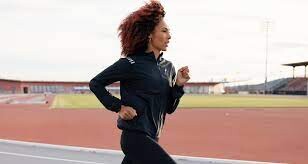
“I consider this one of the most important workouts my athletes — pros and novices — do to improve their economy and form,” Friel says. And, he adds, every physical activity — running, cycling, swimming, basketball — will become easier when you make this a part of your exercise routine.
“Each lap specifies a fresh set of tasks to complete, which gives you multiple goals you can achieve during a single run,” explains Troy Jacobson, national director of endurance sports training at Life Time in Chanhassen, Minn. “And collectively, those laps add up to one big goal: running a full mile.”
Plus, unlike simply going out for a jog on a sidewalk, using a standard running track to guide your workout gives you clear measurements to gauge your progress, augmenting your feeling of incremental accomplishment and motivation.
Still worried that a mile is too far to travel? Listen to music or recruit a workout buddy, suggests Amby Burfoot, former Boston Marathon winner, editor at large for Runner’s World magazine and author of The Runner’s Guide to the Meaning of Life. “You can time each other during the fast intervals and help record each other’s progress over time.”
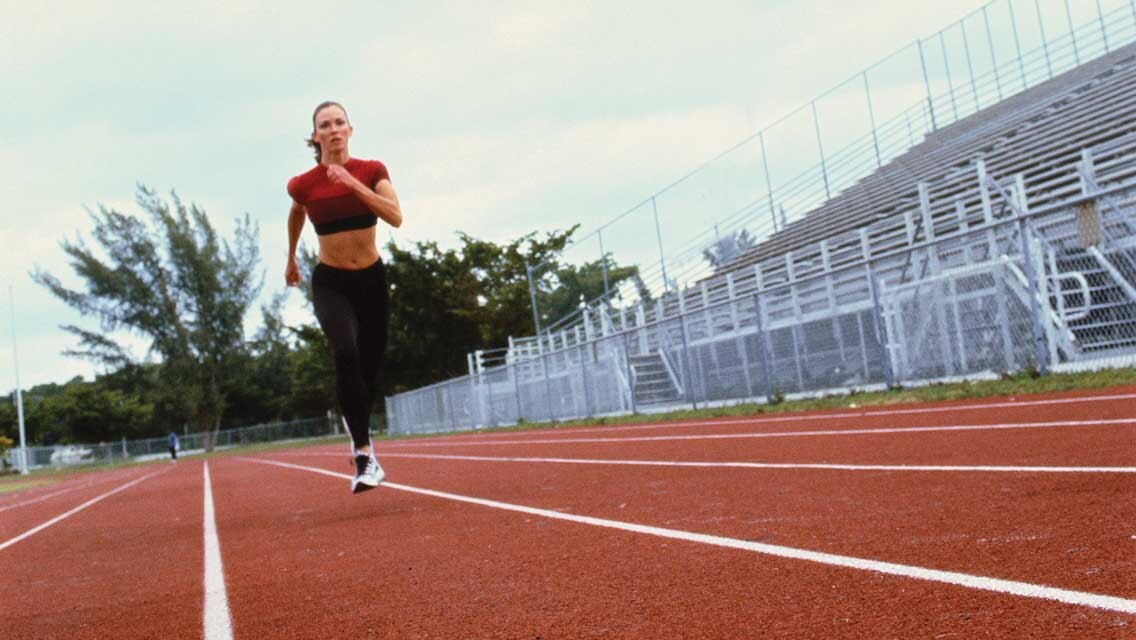
The Workout
This fun, milelong track workout should take between 20 and 30 minutes for beginners (between 10 and 15 minutes for more highly trained athletes) to complete. For each of the four laps (it will be eight laps if you’re on a 200-meter indoor track), do your best to complete the suggested tasks based on your current fitness level. If you find any part of the workout too challenging, you can back off on reps or intensity, or skip an exercise in favor of jogging the equivalent distance on the track. Just build up to doing more of the exercises over time.
Note: Before getting started, begin with a five-minute dynamic warm-up that includes exercises such as light jogging, arm and leg swings, high-knee pulls, and body-weight squats. (See “The Art of the Warm-Up”.)
Lap 1: Run + Walk
Do what’s called a “fartlek,” or speed-play, lap. Jog or walk the turns and go fast on the straights. If you’re with a friend, walk the turns and race each other on the straights. If you’re on a small indoor track, complete the fartlek by time, not distance (jog or walk for 30 seconds, then sprint for 30 seconds; repeat for three minutes).
Goal Achieved: Speed intervals improve cardio endurance and overall running speed. Varying your speed makes the lap feel shorter, too.
Note: “Beware using the inside lane for any prolonged sprinting,” Burfoot warns, since tight, one-directional turns can strain your knees and ankles. If the track isn’t too busy, switch directions or use the outside lanes to keep things balanced. (For more tips on using the track, see “Anatomy of a Track,” below.)
Lap 2: Run + Calisthenics
Jog 100 meters (generally a quarter of the track), then do 10 pushups: Get into pushup position, hands just wider than shoulder width. Keeping your back straight, bend your elbows to lower yourself to the ground. When your chest is just off the ground, push yourself back up to the starting position.Sprint 100 meters, then do 10 crunches: Lie on your back on the grassy infield and bend your knees. Place your hands behind your head and contract your abs, raising your shoulders a few inches off the ground. Keep your neck neutral and your chin pointed toward the sky. Slowly lower yourself back down and repeat.
Jog 100 meters, then do 10 prisoner squats: Stand with feet slightly wider than shoulder width, toes pointed slightly outward, and lace your fingers behind your head. Keeping your elbows pointing straight outward, bend at hips and knees until your thighs are parallel to the ground. Press back up to the starting position and repeat.
Sprint 100 meters, then do 10 squat thrusts: Stand with feet together. Squat down and place your hands on the ground just outside your feet. In one fluid movement, thrust your feet backward, landing in a pushup position, jump back to the squat position, stand and then repeat.
Goal Achieved: Varying the speed of your 100-meter segments continues that fartlek-interval effect, while the various tasks in between build core strength, working your major muscle groups and giving you more power. Plus, the variety of exercises keeps your mind occupied so you don’t realize you just completed another quarter mile.
Lap 3: Run + Plyometrics
Run 100 meters, then jog up and down a flight of stairs or bleachers. If no stairs are available, then “high step” or run in place, raising your knees as high as you can, for 30 seconds. This exaggerated movement will put more spring in your step and help your normal running stride feel easier.
Sprint 50 meters, then do 10 plyometric box jumps: Find a sturdy platform (such as a stair, step or box) approximately 12 to 24 inches high. Stand in front of the step with feet shoulder-width apart. Jump straight up and land lightly but squarely on the step. Step down and repeat. If no step is available, jump in place.
Sprint 50 meters, then do walking lunges for 50 meters: Step forward with your right leg, lower your hips toward the ground and bend both knees to 90 degrees. Your back knee should almost touch the ground; keep front knee aligned over ankle. Push off the heel of your right foot, lift your left foot and bring it to center, then step forward with your left leg. Alternate legs, continuing for 50 meters.
100 meters running with butt kicks: As you run, bring your heels to your butt without arching your back; repeat as you move down the track for 100 meters. You should feel a strong stretch in your quads.
Goal Achieved: This lap is all about building speed, power and conditioning while keeping you distracted with the tasks, says Jacobson. Speed is a simple equation of stride length times stride frequency, Burfoot explains, and moves such as butt kicks and walking lunges will improve both stride and frequency. They also help improve your running form, which will make you more efficient, so you’ll need less energy to travel the same distance. Try to move seamlessly from task to task without resting in between. As you build endurance and strength, you can increase the number of reps or the distance.
Lap 4: Wind Down
Run 100 meters along the straightaway, pushing your pace from a jog to a stride, but keeping it short of an all-out sprint.
Pump arms overhead, as if punching the sky, as you walk or jog 100 meters around the next curve.
Side shuffle the length of the straightaway, taking care to keep your feet from touching each other. Switch your lead leg halfway down to balance the muscles.
Pump arms overhead as you walk or jog around the final curve.
If you have time, walk one additional lap while sipping water. This will help you cool down further, rehydrate, and begin to flush the waste products out of your muscles.
Goal Achieved: This gradual cool-down also works your upper body, quads and hamstrings.
by Gina DeMillo Wagner
Login to leave a comment
Why you maybe should run intervals over distance workouts in the cold
As the weather gets colder across Canada and snow begins to cover our beloved running tracks and trails, it becomes harder to find places to train. If you don’t have access to a treadmill or indoor track, it’s challenging to do distance repeats outdoors.
Generally, most Canadians are not racing this time of year due to the cold weather and lack of races. But those who plan on racing in the early spring need to get in workouts to keep in touch with their speed and intensity. Instead of worrying about finding a loop to do your distance workout, do intervals or fartlek training and focus on your perceived exertion.
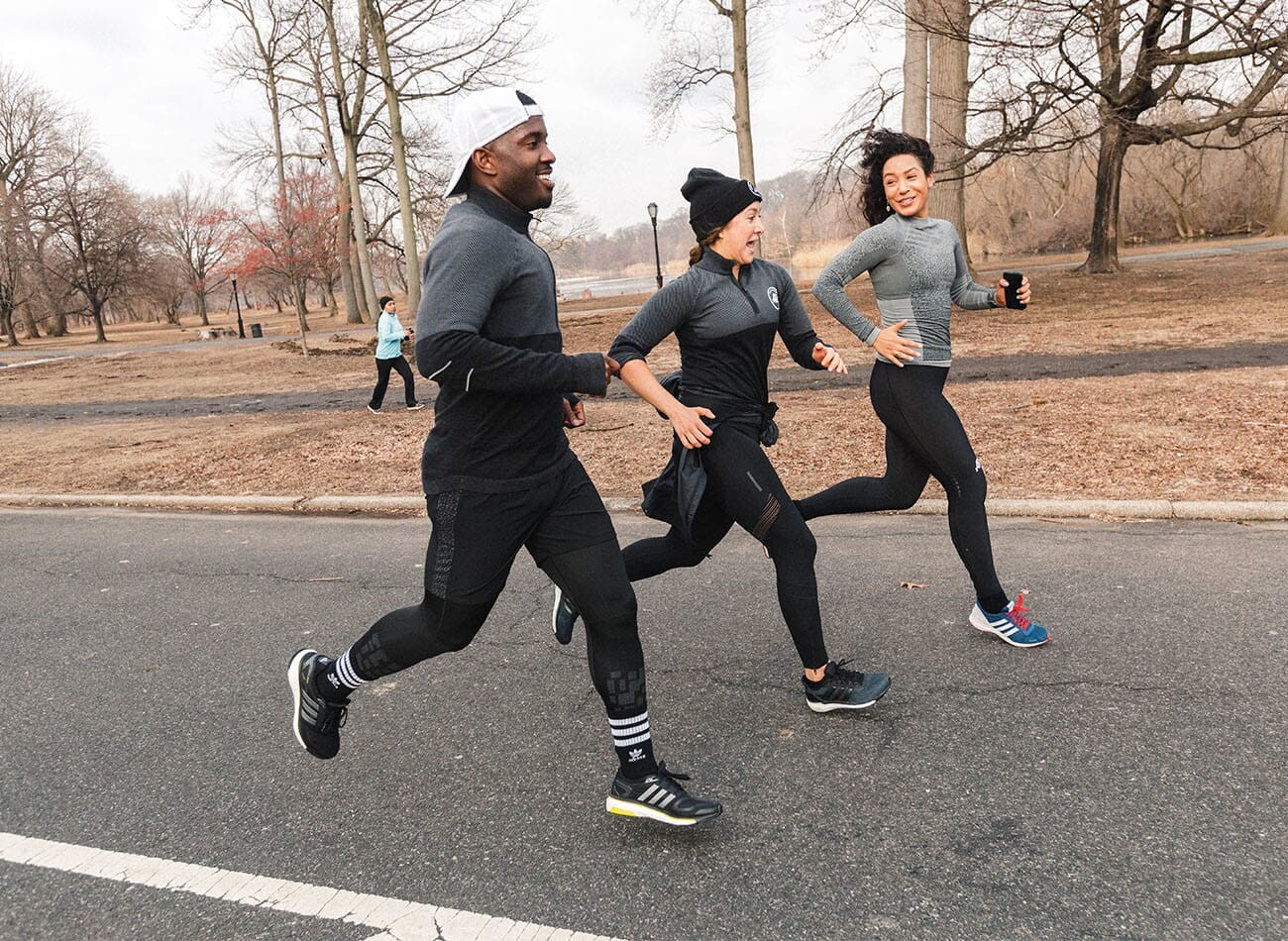
For example, doing 90-second intervals instead of 400m repeats won’t make too much difference physiologically, though mentally, you can focus on your output rather than hitting paces, which makes the workout more manageable.
Your running pace is also bound to be slower in colder temperatures, as it’s harder for blood to circulate to your muscles and keep them warm.

At the right intensity, interval workouts are suitable for all runners, from beginners to experienced. The great thing about interval training is it can be tailored to any individual and their goals and needs, plus it’s easy to track. Research has shown that it’s the most effective way to run and will help get you to your goals faster and help you enjoy running along the way.
Make sure you stick to plowed roads and lit-up streets with proper footing while doing intervals to ensure your safety. If you can’t get your workout in safely, it’s not the end of the world if you push it back a day or two.
by Marley Dickinson
Login to leave a comment
Hellen Obiri Wants To Win NYC In Her Marathon Debut
After earning a silver medal in the 10,000 meters at the World Athletics Championships in Eugene, Oregon, in July, Hellen Obiri was already looking toward the next big thing: making her 26.2-mile debut at the 2022 New York City Marathon.
Racing in New York was always her main goal for 2022, even though she made a late decision to compete on the track at the world championships. Immediately after her September 11 win at the Great North Run in northeast England, Obiri finally made her long-planned move from Ngong, Kenya to Boulder, Colorado, to start training with the On Athletics Club under three-time Olympian and coach Dathan Ritzenhein.
Obiri’s agent and former coach, Ricky Simms, worked with Ritzenhein to plan out her training for the Great North Run and the New York City Marathon as she made the move, and although she’s only been training in her new environment for nearly two months, she has proven to be adjusting nicely to the transition.
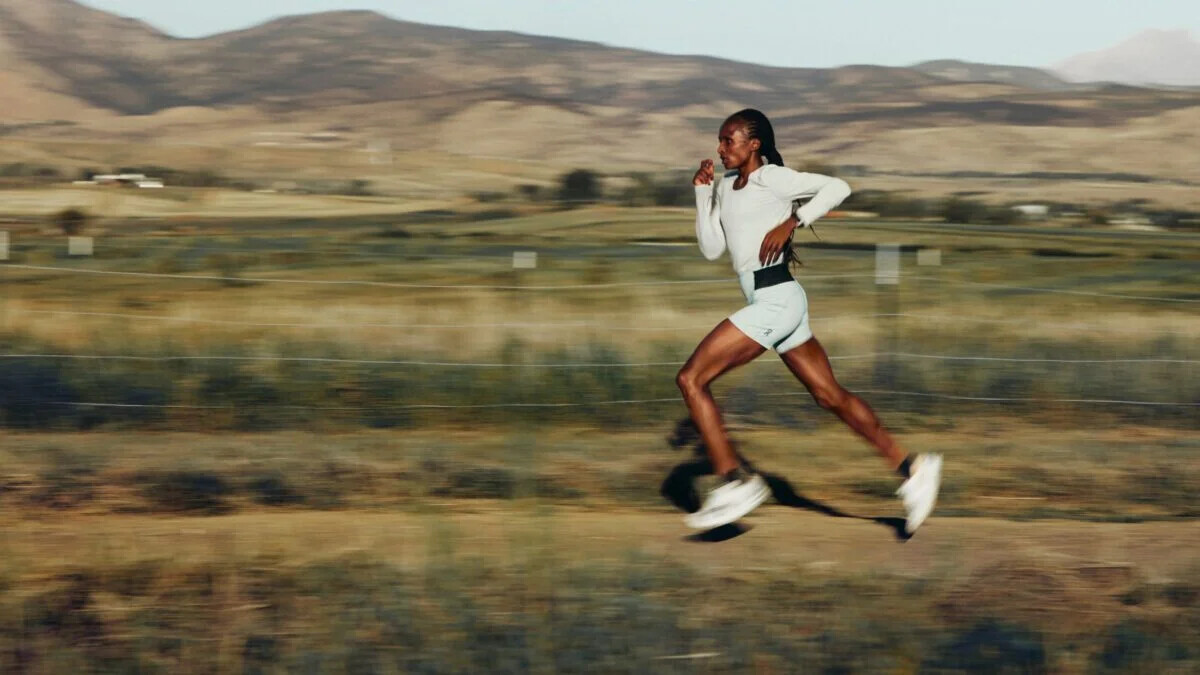
“Everyone has been very welcoming and the training environment is perfect; training is very similar to Kenya,” Obiri says. “I think it will be a good place for my daughter to grow up. The biggest challenge has been being away from my family, as I am missing them a lot. They have not been able to come as they do not yet have U.S. visas.”
So far, due to most of her teammates having been on vacation after the track season, Obiri, 32, has mainly trained with Ritzenhein, who either accompanies her on her training runs or leads her on a bike, and fellow countrywoman Edna Kiplagat, a two-time marathon world champion who has been living in Boulder for a decade and who will also be racing in New York.

“Every day, I show up and wonder how Hellen is going to amaze me that day–she is completely dialed for New York,” Ritzenhein says. “We’ve spent a lot of early mornings out there, and it’s been a great couple months of getting to know each other and trusting in this new process. It’s really amazing to me how talented and focused she is.”
A Multifaceted Athlete
Obiri is one of the only women to have won world championships in outdoor track, indoor track and cross country. Among the 11 global championship medals she’s earned, she owns two world championship gold medals in the 5,000m (2017, 2019), another from the 3,000 at the 2012 indoor world championships and one more from the 2019 world cross country championships.
But the marathon has always been waiting in the wings. Given her speed, endurance and championship pedigree, Obiri seems to have the right qualities to be ever better over the longer distance, Ritzenhein says. After several weeks training in the U.S., he’s confident the challenging terrain Obiri has gotten used to in Kenya and now the rolling dirt roads north of Boulder will translate well to New York’s undulating course.
“Coming off the world championships this summer, we knew Hellen still had the wheels. But it had been a big increase in total running volume but also the volume and intensity of the long runs and workouts,” Ritzenhein says. “We tried to do some quality sessions on hilly terrain that mimics the course, and she has handled it all very well. I am very confident she will handle the course.”
Ritzenhein noted that Obiri will also likely eventually serve as a guide for fellow 10,000-meter runner Alicia Monson, who will likely make the move to the marathon within the next few years. The 24-year-old third-year pro placed 13th in the 10,000 at both the Olympics in 2021 and the World Athletics Championships in 2022.
“[Monson’s] track times are getting close, so hopefully the training with Hellen will be a bridge to her career on the roads in years,” Ritzenhein says. “Now that the team is back, [Obiri] will do some of the easy morning runs with them, but her workouts are still so much bigger than where they are in training.”
The Marathon Distance Beckons
After her solid 1:07:05 half marathon at the Great North Run, it’s no surprise that Obiri is exuding confidence as she approaches what’s expected to be a highly competitive field for her first go at the marathon distance. It was her fifth time competing in the half-marathon distance, which she says she has grown very comfortable with. In February, she finished second in a half marathon in the United Arab Emirates in 1:04:22, which remains the No. 2 time in the world this year.
“I aim to win [in New York]—the time doesn’t matter,” Obiri says.
Obiri is one of the only women to have won world championships in outdoor track, indoor track and cross country. Among the 11 global championship medals she’s earned, she owns two world championship gold medals in the 5,000m (2017, 2019), another from the 3,000 at the 2012 indoor world championships and one more from the 2019 world cross country championships.
But the marathon has always been waiting in the wings. Given her speed, endurance and championship pedigree, Obiri seems to have the right qualities to be ever better over the longer distance.
“With Peres [Jepchirchir, the reigning 2020 Olympic and 2021 New York City Marathon champion] now out of the race, it definitely changes the landscape a little,” Ritzenhein adds. “But with multiple world championship medalists and last year’s podium finishers, it’s still such a strong field. The marathon debut should always be cautious early on, but there isn’t anything that I think [Obiri] can’t handle.”
Obiri was also eager to share her thoughts on transitioning from training and racing in shoes from Nike, her former sponsor, to the On Cloudboom Echo 3.
“The fact that I was able to transition seamlessly to the new racing shoes and feel very comfortable in them is credit to the designers and team at On,” she says. “I hope I can give them more podium finishes.”
Looking ahead after New York, Obiri plans to continue to focus on road racing in 2023, though she may still jump into some track races if she feels as though she can remain competitive. After the marathon, she’ll wind down with a return to Kenya for the holidays, followed by some winter cross country running before jumping back for marathon training for a to-be-decided spring race, Ritzenhein says.
“[Obiri] could honestly train with the men’s team for much of the long training,” he says. “She’s doing things which are really incredible, and it’s inspiring for them and me to see.”
As with many elite long-distance runners, Obiri is unsurprisingly also looking ahead to the 2024 Paris Olympics as she plans out her future schedule and sets goals for future accolades.
“I have already won the world championships, world cross country championships, world indoor championships, Commonwealth Games and African Championships,” she says. “But I only have silver medals from the Olympics, and I would love an Olympic Games gold.”
by Emilia Benton
Login to leave a comment
TCS New York City Marathon
The first New York City Marathon, organized in 1970 by Fred Lebow and Vince Chiappetta, was held entirely in Central Park. Of 127 entrants, only 55 men finished; the sole female entrant dropped out due to illness. Winners were given inexpensive wristwatches and recycled baseball and bowling trophies. The entry fee was $1 and the total event budget...
more...Running outside year-round will make you indestructible
It’s the time of year when many runners start to shift some runs over to a treadmill or indoor track. Keeping most of your runs outside from the moment the days become shorter can be an efficient and straightforward training tool. If you can continue to train outside year-round, both your brain and body will benefit.
Aim to keep as many of your runs outdoors as possible, particularly in the fall season when the weather is in between summer warmth and the winter frigid temperatures. As it gradually gets colder, you will also adjust and it won’t be a huge shock when you step out into a deep freeze mid-winter.
Avoiding darker mornings and evenings due to safety concerns are, however, valid reasons to shift to an indoor setting, and it’s important to stay aware of your surroundings and prioritize safety.
You’ll gain mental strength and grit

Depending on where you live, winter can feel interminable. Many people suffer from seasonal affective disorder (SAD) or subclinical variations of it. Exercising, period, can seem much less enjoyable much of the time. No matter how you reframe it, trudging through rain and snow is tough. Knowing that the long-term benefits outweigh the short-term challenges can be helpful motivation to get out the door.
Give yourself huge kudos every time you head out into a less-than-appealing day, and imagine how much easier hill training will feel in the daylight, in shorts, in a few months. Putting in the hard work early in the year will lead to more fun when the sun is shining.
Getting outdoors will boost your mood, even when the weather is bad

It can be hard to find motivation when the sky is cloudy or the weather is really cold. Even when it isn’t sunny, you’ll still be getting exposure to daylight, something neuroscientist Andrew Huberman says is key to longevity and staying healthy.
A Harvard University study showed that the elevated levels of carbon dioxide often present in indoor environments can have negative effects on cognitive function. Breathing fresh, oxygen-rich air (even if it’s chilly) is good for your body and brain.
Even the coldest winter runs, the ones where you can’t wait to get indoors and peel off the freezing layers, will give your brain a kick-start and leave you feeling better for having moved your body.
Training all winter will give you an edge on the competition
This early part of winter is the best time to build your aerobic base and set an important foundation upon which spring speed and endurance will be built. Think of your training as a pyramid—your winter base mileage forms the bottom layer on which your other training can rest.
If you skip this step, you won’t be ahead of the game when spring arrives, and it will take longer to get into racing shape. Running on snow or uneven terrain also recruits your stabilizer muscles into action, so you’ll be strenghtening areas of your body that aren’t usually a focus while you run.
Running during the unpredictable fall and winter months also means you’ll be challenging your body and brain to tackle new and different things regularly–another science-backed way to keep your brain and body optimized for many years to come.
by Keeley Milne
Login to leave a comment
The 10 Commandments Of Running On The Track
The rules of the track are a bit different than the rules of the road, so one runner has penned these commandments to teach track etiquette.
Track: a five-letter word that strikes fear into the heart of almost every runner. You cast your eye across the oval and everyone out there looks like they know exactly what they’re doing, flexing svelte muscles and then proceeding to run at speeds so fast you get whiplash just watching. Then you look at yourself: an awkward track virgin, stumbling out onto that giant round stage for all to see.
I, too, was once that awkward track virgin. All I could think was, Everyone will be watching me. Running. The whole time. I was certain it would be one of the most humiliating experiences of my life.
But…it wasn’t. Honestly. I swear. In fact—stay with me here—it actually turned out to be fun, and I eventually came to enjoy the rubberized revolutions. Where else can you run with multiple friends, regardless of pace, without losing someone? There are no traffic lights slowing you down, no potholes to watch out for, and best of all, no wrong turns. (It’s a 400m circle. If you manage to get lost, you’ve got other problems.)

The truth is, what deterred me most at the start of my track-running days were the “unspoken rules.” Therefore, after many, many visits, I’ve put together this simple list. They’re easy to follow and—I hope—will ease your fears and get you out there sooner rather than later. Because the track will make you faster, I promise!
1. Thou shalt warm up before starting a workout (and cool down after!).
You know those “goofy” people skipping in slow motion and kicking themselves in the butt? Doing stuff you tell yourself you’d never do? Well, those “goofy” individuals are getting ready to run—and you should, too. It’s important to warm up before any run, but it’s especially important before a track workout, when you’ll push your muscles to their limit. Then, afterward, it’s a good idea to cool down, to keep your muscles from scrunching up into tight, sore little pretzels. Be good to your body and it will be good to you!
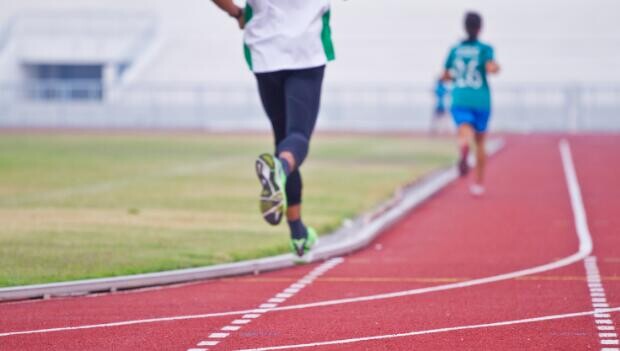
2. Thou shalt always run counter-clockwise.
It’s the most basic of directions to follow: unless you see a sign that says otherwise—and some tracks do have this—make sure you’re running counter-clockwise. Said another way: when you face the track from the “outside,” run to your right. And when in doubt, go with the flow.
3. Thou shalt only use the inside lane when running speed workouts.
If you’re at the track to get in easy miles or are recovery-jogging during a workout, please be mindful, because people running workouts will pass you, and they may not be the nicest about it. When you’re laying off the speed, the correct track etiquette is to stay to the outer lanes or the infield. (I learned this the hard way, by getting hollered at and nearly stepped on more than once.) The innermost lane, Lane 1, is the closest to being an “exact” distance—400m on most outdoor tracks, 200m on regulation indoor tracks—and when you’re running a speed workout, those inches and seconds matter!
4. Thou shalt not measure thy workout using GPS.
We all know that GPS can get confused sometimes and when you’re running in lots of tiny identically-shaped circles, it can get really confused. Do yourself a favor and turn off your GPS. Then, just count the laps: 400 meters, 800 meters, 1200 meters, 1600 meters (1 mile). Also, remember that when you race, you will not run a perfect distance, and the track is no different; however, the marked distances on the track are so close, you simply don’t need GPS. Run free, my friend!
5. Thou shalt adhere to one’s workout and prescribed paces.
When you’re running in countless circles under the scrutiny of fellow athletes, it can be tempting to change things up; not to mention give in to that little bit of friendly competition. After all, you want to look like the fleet-footed runner you are! However, try to remember: You’re not at the track to show how fast you already are, you’re at the track to get faster. That means practicing distances and paces that might make you look “slow” or turn you into a heaving sweaty mess of speed demon. But when you finally step up to the starting line of your race—that’s when you’ll be ready to run like a rock star.
(Plus, there’s a bonus! You’ll often feel a bit better and run a touch faster when you run on the track, as opposed to the road. This is because the surface is made for your shoes to grip better, and the softer landing is easier on your joints. Faster running that feels easier? Yes please!)
6. Thou shalt always finish thy interval on a straightaway.
It’s physics: When you run around a bend, you twist your body, lean into the curve, and wind up off-balance. At the end of an interval, however, you want to be pushing your hardest to run your fastest, and to do that, you need your best running form—which has to be totally balanced. Therefore, always finish on a straightaway. Every. Single. Repetition.
7. Thou shalt give verbal warning to those blocking thy path.
If you are running in Lane 1 and find yourself approaching a slower runner from behind, give that person ample notice to move out of your way. Please, however, avoid the reflex phrases that we all have: “MOVE!” “Out of the way!” “Watch out!” The best phrases to call out are “track,” “on your left,” or “on the inside.” And if you hear any of these phrases shouted at you, don’t list lazily to the right; move right immediately, because they are coming in hot! (I once moved left instead and, well, it wasn’t pretty.)
8. Thou shalt never stand motionless on the track.
If you must stop moving, step off the track. It’s common courtesy, and also practical: you don’t want to cause a collision. Imagine if cars just stopped motionless in the middle of the freeway! Also, even if you manage to avoid a collision, if you stand in the middle of the track and force runners to go around you, you will get a dirty look. Probably more than one. So do what you will, but don’t say I didn’t warn you!
9. Thou shalt leave thy earphones at home.
To go back to the cars metaphor, it’s the same reason you don’t wear earphones while driving: When a bunch of cars are maneuvering around each other at high speeds, every driver needs to be fully aware of what’s going on. The same applies to runners on a track. Don’t be the cause of a pileup.
10. Thou shalt encourage thy fellow runners.
Even if every runner on the track is doing a different workout, we’re all enjoying this suffer fest together—so let’s help each other out. A simple high five or “looking strong” can make all the difference—especially when you need it the most.
by Allison Goldstein
Login to leave a comment
Five tips for running during allergy season, Enjoy running this summer without sneezing
Temperatures are warming up, flowers are blooming, and allergy season is in full swing. If you suffer from seasonal allergies, you are familiar with the struggle of fitting in regular training while battling a stuffy nose and congested head. Try these suggestions to minimize your allergies and get you out the door in your shorts and running shoes.
Find the right time of day

Both pollen counts and air pollutant indices rise during the day and fall during the night. Running in the very early morning or later in the evening is the best way to avoid those pesky allergens. High pollen counts also trigger exercise-induced asthma, so avoiding those mid-day runs can be critical for easy breathing.
Save the intervals for allergy-free days
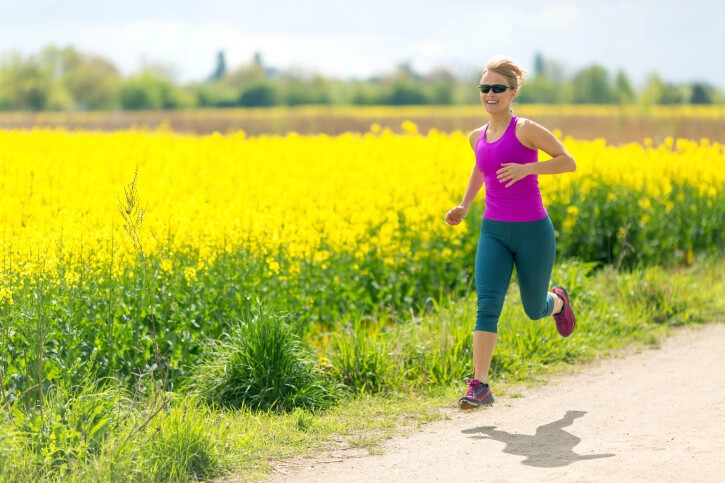
High-intensity workouts that involve breathing hard can exacerbate allergy symptoms. Save your speed workouts for the treadmill or indoor track during allergy season, or plan them for cooler or rainy days. Easy runs, or even a fast walk, will still enable you to get outside and move your body without triggering an allergy attack.
Keep an eye on the weather
Wind and dust will contribute to allergy symptoms; heat can also make them worse. Studies show thunderstorms also concentrate allergens in the air. Running immediately after a thunderstorm or rain is ideal when the air is clear. All runners know how hard it can be to predict the weather in North America but using the weather app and knowing what to avoid can be useful.
Take preventative measures
If you normally take an antihistamine to treat your allergies, taking it pre-run can be effective in keeping symptoms at ease. Similarly, if you have exercise-induced asthma and use an inhaler, check with your doctor to see if you are safe to use it before your workout.
Rinse pollen away
Taking a shower right after running can get rid of any lingering pollen on your hair and skin. Throwing your clothes into the laundry after a run will also keep them free from allergens. With a little extra effort, you should be able to enjoy the sunshine and warmer weather while keeping those sniffles at bay.
by Keeley Milne
Login to leave a comment
2022 Carlsbad 5000 Announces Its Elite Field
eigning champion and 17-time NCAA All-American Edward Cheserek headlines men’s race; Olympians Kim Conley and Dom Scott lead women’s elite fields
36-Year Southern California Running Tradition Returns with over 6,000 runners on Sunday, May 22

One by one, America’s most famous road races have returned after being waylaid by COVID. The Boston Marathon, Peachtree Road Race, New York City Marathon.
Familiar images unfolded. Runners excitedly talked to friends and strangers in corrals. Spectators delivering high-fives. Medals draped around necks.
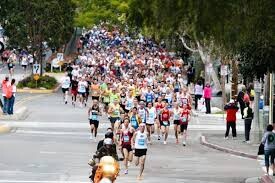
Bolder Boulder, Bay to Breakers, the Los Angeles Marathon.
Come Sunday, the last of the United States’ iconic road races returns after a three-year pandemic hiatus when the Carlsbad 5000 presented by National University celebrates its 36th running. Over 6,000 runners and joggers will enjoy the splash of the surf and clean salt air along the traffic-free Pacific Coast Highway 101, then sipping brews in the Pizza Port Beer Garden.
“I’m excited to return to the Carlsbad 5000,” said reigning champion Ed Cheserek of Kenya. “Last time in 2019 was a lot of fun and after everything our running community has been through since then, I’m really looking forward to being back at the beach in sunny Southern California.”
The Carlsbad 5000 is renowned as “The World’s Fastest 5K” and the moniker was earned.
Sixteen world records have been set on the seaside course, plus a slew of national records and age group bests. Olympic gold medalists Tirunesh Dibaba, Meseret Defar and Eliud Kipchoge have run Carlsbad.
So have U.S. Olympic medalists Deena Kastor and Meb Keflezighi. Keflezighi, the San Diego High product and only male runner in history to win the Boston and New York City marathons, plus an Olympic medal, is now co-owner of the race.
“The San Diego community is very proud of the fact that Carlsbad hosts the world’s most famous 5k race,” said San Diego Track Club coach Paul Greer, a former sub-4-minute miler. “We’re proud of the race. And local runners are endeared by the fact that Meb is involved in the event because he’s one of our own.”
Many people deserve credit for the Carlsbad 5000’s success. Chief among them are Tim Murphy, the race’s creator, Steve Scott, the former American mile record holder who designed the course, and the late Mike Long, the beloved man who built relationships with African athletes and recruited them.
When the race was first held in 1986, the 10K and marathon were road racing’s popular distances. The 5K was considered a casual fun run.
“That’s how innovative Tim was,” said Scott. “He was going to start something when there wasn’t anything there.”
Scott not only designed the course. He won the first three races.
Another plus for The ’Bad: the race fell perfectly on the calendar, with the elite runners being in peak fitness after running the World Cross Country Championships.
“The world records were produced by the quality of the fields and the expectations of running fast,” said road racing historian and announcer Toni Reavis.
It may have been three years since the Carlsbad 5000 was held live (there was a virtual race in 2020), but all the charms will be back Sunday. The custom beer garden IPAs, the ocean views, the left-hand, downhill turn onto Carlsbad Village Drive, and the sprint to the finish.
The race’s official charity is the Lucky Duck Foundation, a local non-profit dedicated to fighting homelessness in San Diego County.
“Homelessness is San Diego’s number one social issue right now, and I couldn’t be prouder to partner with Lucky Duck Foundation as an official charity of the Carlsbad 5000,” said Keflezighi.
As in the past, the Carlsbad 5000 will feature a series of age-group races, starting with the Men’s Masters at 6:55 am, the Women’s Masters at 8:00 am, Open Men at 9:15 am, Open Women at 10:08 am, Junior Carlsbad Kids Mile at 11:20 am, Junior Carlsbad Kids Half-Mile at 12:13 pm, Elite Men at 1:20 pm and Elite Women at 1:23 pm.
The morning-long races create a cheering audience for the pros.
“That’s the other thing that made the elites run fast,” said Reavis. “The crowds.”
So after a three-year pause, the Carlsbad 5000 is back. For why the race continues to maintain its iconic appeal, Reavis said, “It’s those ocean breezes, the lapping waves, the laid-back lifestyle. It is perfect for this little Southern California town which gets transformed into a race course.”
For a complete race day schedule and more, visit Carsbad5000.com.
— Elite Rosters Follow —
Elite Men
Bib Number , Name, Country, Career Highlight, Birthday
1. Edward Cheserek, KENYA, Defending Champion . 17x NCAA Champion, 02/02/1994
2. Kasey Knevelbaad, USA – Flagstaff, 13:24.98 5000M(i) Personal Best, 09/02/1996
3. Reid Buchanan, USA – Mammoth, 2019 Pan American Games 10,000m Silver, 02/03/1993
4. Jose Santana Marin, MEXICO, 2019 Pan American Marathon Silver Medal, 09/03/1989
5. Eben Mosip, KENYA, Road 5k Debut, 12/31/2002
6. James Hunt, GREAT BRITAIN, 4-time Welsh Champion, 04/28/1996
7. Dennis Kipkosgei, Kenya, 2021 Philadelphia Broad Street 10 Miler Champion, 12/20/1994
8. Sean Robertson, USA, Butler University Athlete, 09/16/2001
9. Tate Schienbein, USA – Portland, 2013 U.S. Junior Steeplechase Champion, 04/04/1994
10. Hosava Kretzmann, USA – Flagstaff, AZ, 14:15 5000m PB, 09/02/1994
11. Dylan Belles, USA – Flagstaff, AZ, 2X Olympic Trials Qualifier, 05/16/1993
12. Dylan Marx, USA, San Diego’s Fastest Marathoner, 01/14/1992
13. Steven Martinez, USA – Chula Vista, 2x U.S. Olympic Trials Qualifier, 09/15/1994
14. Spencer Johnson, USA – San Diego, 14:39.09 (2022 Oxy Distance Carnival), 03/20/1995
15. August Pappas, USA – San Diego, 14:05 PB, Big Ten Indoor Track Champs, 04/10/1993
16. Dillon Breen, USA – San Diego, 14:43 Virtual Carlsbad 2020, 09/01/1992
17. Dante Capone, USA – San Diego, Phd Student at Scripps Institute, 11/07/1996
18. Jack Bruce, AUSTRALIA, 13:28.57 5000m Best on Track, 08/31/1994
Elite Women
Bib Number , Name, Country, Career, Highlight, Birthday
20. Kim Conley, USA, One of America’s best 5000m runners, 03/14/1986
21. Dominique Scott, SOUTH AFRICA, Two-time Olympian, 05/24/1992
22. Grace Barnett, USA – Mammoth, Silver at 2021 USATF 5k Championships, 05/29/1995
23. Carina Viljoen SOUTH AFRICA, 5k Road Racing Debut, 04/15/1997
24. Ayla Granados, USA – Castro Valley, 15:53 Personal best, 09/18/1991
25. Biruktayit Degefa, ETHIOPIA, 2022 Crescent City 10k Champion, 09/09/1990
26. Andrea Ramirez Limon, MEXICO, 2021 National 10000m Champion, 11/05/1992
27. Claire Green, USA – San Francisco, NCAA All-American, 05/12/1996
28. Caren Maiyo, KENYA, 5k Road Debut. 7th At 2022 Houston Half Marathon, 04/17/1997
29. Nina Zarina, RUSSIA, California resident, 3rd at the 2021 LA Marathon, 03/17/1987
30. Emily Gallin, USA – Malibu, Finished 4th 2022 LA Marathon, 10/30/1984
31. Lauren Floris, – USA – Oak Park, 2020 U.S. Olympic Trials Qualifier, 07/07/1990
32. Sara Mostatabi, USA – Los Angeles, 09/27/1993
33. Ashley Maton, – USA – Toledo, 16.37 PR at U.S. Road 5k Championships, 11/20/1993
34. Judy Cherotich. KENYA, 16:50 PR
35. Lindsey Sickler, USA – Reno, 16:59 PR, 09/05/1997
36. Megan Cunningham, USA – Flagstaff, 15:53 Track Best 5000M, 03/01/1995
37. Jeannette Mathieu, USA – San Francisco, 2020 Olympic Trials Qualifier, 04/19/1990
38. Bre Guzman, USA – San Diego, 17:37 5k/ 36:00 Road 10k PR, 10/30/1992
39. Aubrey Martin, USA – San Diego, 17:33 5k /1:19 Half Personal Best, 10/10/1997
40. Chloe Gustafson, USA – San Diego, Division II – NCAA All-American, 11/10/1992
41. Sammi Groce, USA – San Diego, 2021 Rock ‘n’ Roll Marathon Winner, 04/29/1994
42. Kristi Gayagoy, USA – San Diego, 17:06 PR
43. Annie Roberts, USA – San Diego, 16:58 5k, 07/10/1996
44. Alexa Yatauro, USA – San Diego, 17:40 5k, 10/18/1995
45. Jessica Watychowicz, USA – Colorado Springs, 15:47.51 5000m Track PB, 02/27/1991
About the Carlsbad 5000
The Carlsbad 5000 annually attracts amateur, competitive and professional runners from around the world. The 36th running of the iconic race will take place on the weekend of May 21-22, 2021. The inaugural 1986 event helped establish the 5K as a standard road running distance, and today, the 5K is the most popular distance in the United States. Throughout its history, the Carlsbad 5000 has seen 16 World records and eight U.S. records, as well as numerous national and age group marks. Race day begins at 7:00 am with the Masters Men (40 years old and over), the first of seven races to take place on Sunday. The “Party by the Sea” gets started as soon as the first runners cross the finish line with participants 21 and older celebrating in the Pizza Port beer garden with two complimentary craft brews and runners of all ages rocking out to live music on the streets of the Carlsbad Village. Further information about the Carlsbad 5000 can be found online at Carlsbad5000.com and on Facebook, Instagram and Twitter.
by Running USA
Login to leave a comment
Carlsbad 5000
The Carlsbad 5000 features a fast and fun seaside course where 16 world records have been set. Both rookie runners and serious speedsters alike enjoy running or walking in Carlsbad. Weekend festivities kick off Saturday morning with the beloved Junior Carlsbad, a kids-only event in the heart of Carlsbad Village featuring fun runs, toddler trots, and diaper dashes! On Sunday,...
more...Pro Runner Ben Blankenship Believes High Mileage Is Overrated
Ben Blankenship of Oregon Track Club Elite believes there are other important ways to measure running success.
Hear me out: High mileage is overrated.
A couple months ago, I posted that on Instagram. Mostly because it’s true—I don’t think running high mileage is always the best way to reach your potential—and partially because I’m a guy who loves to stir the pot.
It definitely drummed up conversation. I received dozens of comments and messages, some defending mileage, some agreeing with me, but all coming to a similar conclusion: It depends on runners to learn what’s best for themselves.
What worked for me? I came from a low-mileage, high-intensity high school program. The Minnesota track season was only a few months long, due to weather and the popularity of winter sports. We didn’t have an indoor track season either. Outdoors we would race twice a week, go to state, and that would be it.
When I started my college career at the University of Minnesota, coach Steve Plasencia focused on longevity. He wanted us to have a long and prosperous career, even post-collegiately, so he never had us immediately reach for high mileage. Also, back in the early 2010s, not everyone had GPS watches. So when I return to my college running loops, I’m like, man, that used to feel longer than it actually is, because we never actually measured them.

When I began my professional career with the Oregon Track Club Elite in Eugene, coach Mark Rowland eased me into higher volume. Instead of getting stuck in the mentality of needing a certain amount of miles, I put the emphasis on how good my workout sessions were. It was all about being able to handle high intensity at high volume with low rest.
For example, I remember one workout when I switched between four 1,000-meter repeats on a trail, eight 400-meter repeats on the track, then back to the trail for another four 1,000-meter repeats. I only had half each rep’s time to recover. Whenever I was able to complete those types of workouts feeling strong, I knew I was in good shape.
The philosophy worked. I saw plenty of success in the 1500 meters, qualifying for the 2016 Olympics and earning a spot in the final.
After that Olympic cycle, I wanted to become a versatile athlete, able to run fast at any race distance. I already had so much quality work behind me that I thought, “What’s left to do?”
My answer at the time was more mileage. So from 2017 to 2019, I upped my weekly average from 75 to 100. I decided to test my new philosophy by chasing the 10,000-meter Olympic standard of 27:28.00, because I have a romantic view of the 10K. It’s poetry in laps.
The guys I trained with were all 100-mile-plus-week types, so I added six-mile afternoon doubles and longer cooldowns with them to prepare. I kept thinking how awesome it was to be a high-mileage runner. At the end of 2019, I got a little banged up with injuries. So to come back stronger, I doubled down on the mileage.
It worked for a while. I debuted over 10,000 meters with a 28:08.20 in August 2020. But I felt stiff, tired, and not very productive in my workout sessions—exactly the opposite of what my philosophy used to be.
Toward the end of 2020, the real injuries started. I hurt my Achilles and my plantar, and suffered a small tear in my hamstring. I eventually ended up with a stress fracture in my tibia in late spring 2021.
As a result, my buildup to the Olympic Trials wasn’t great. I had almost zero on-the-ground training; I was either in the pool or on the bike.
While I wasn’t as competitive as I had been in years past, I was amazed at my racing ability, making the semis despite not running much in my buildup. That was eye-opening. What was I doing to get my cardiovascular fitness up? What was I able to do neurologically without the pounding of running?
Now, I know that much of it has to do with how long I’ve been doing this. I have 18 years of running in me, week in and week out. That has allowed me to sit back and say, “Okay, what weaknesses do I need to focus on?” instead of worrying about an entire rounded-out training program. So I realized I don’t have to run high mileage—there are other ways to get better at running.
As a 33-year-old, my focus is to be athletic. After the Olympic Trials, I started to play basketball. I felt strong and powerful, and my range of motion was fluid and comfortable. I returned to training refreshed and ran a couple of good races.
Not everyone is built for other sports or willing to risk running to play them. I remember my parents putting hockey skates on me and my ankles just not moving that way. But one easy way to stay athletic is to prioritize fast running. A lot of runners will throw strides in after a run when their body is already tired. But I propose making them the main focus sometimes.
Get to the track, warm up for 15 to 20 minutes, put some spikes on, and prioritize moving quickly. Run efficiently and fast for 80 meters, the first 60 percent easier and the last 40 percent harder. Walk and jog the next 320 meters and do another. In total, do eight to 10. Think about using good form and pulling yourself forward off the ground. On a nice day, you can even find a turf field and kick your shoes off for some barefoot strides. Follow the same idea as before, but instead of measuring out meters, just run the diagonal across a soccer field and jog a lap for rest.
Keep in mind, this is what I’ve learned throughout the course of my career. If you’re a beginner, you might get overwhelmed by the different perspectives out there. So my main advice is to be a student of the sport. Ask yourself: Why am I running these miles? What am I getting out of the work I’m putting in? Why am I doing this type of workout, this type of run, this type of cross-training?
If it makes sense for you to run higher mileage because you’re new to running and need to build a base, then do it. What high mileage means completely depends on the person; for some 40 is a lot, for others 100 is. But if you’re suffering for the sole purpose of suffering, then you’re doing it wrong. The goal is to improve yourself. Success is more likely to come if you focus on the purpose of your miles instead of the number of miles you run.
by Runner’s World
Login to leave a comment
National record-holder Tonatiu Lopez, on track and making history for Mexico
For all its strength across the sporting spectrum, Mexico has had scant success of late on the track when it comes to major championships. At the Tokyo Olympics, the nation of 128 million fielded full teams across the marathons and race walks, but had just one male competitor on the track.
That athlete was Jesus Tonatiu Lopez, a 24-year-old whose Games came to an end in the semifinals of the 800m, a tactical mistake costing him precious fractions of a second and leaving him wondering what might have been. Lopez finished third, just 0.03 behind Emmanuel Korir of Kenya and 0.17 behind Patryk Dobek of Poland – who went on to win gold and bronze respectively.
“I cried,” says Lopez, who made his 2022 debut at the Millrose Games, a World Athletics Indoor Tour Gold meeting, on Saturday (29). “I felt very frustrated. I knew maybe I could be in that race.”
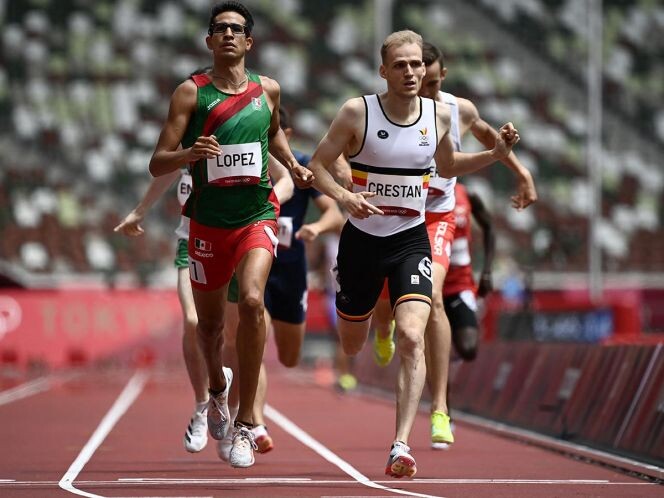
Over the coming months, he’ll have ample opportunity to make amends, with Lopez targeting the World Athletics Indoor Championships Belgrade 22 in March and the World Athletics Championships Eugene 22 in July.
“I’m not looking for a big achievement,” he says of Belgrade. “To compete with the best in the world is going to be helpful; I’ll get a lot of experience. In Eugene, I want to make the final. Obviously I want a medal, but I try to not stress myself with (such a) specific objective.”
On the build-up to Tokyo, the medal question was often put to him by Mexican journalists, and Lopez did his best to play down expectations.
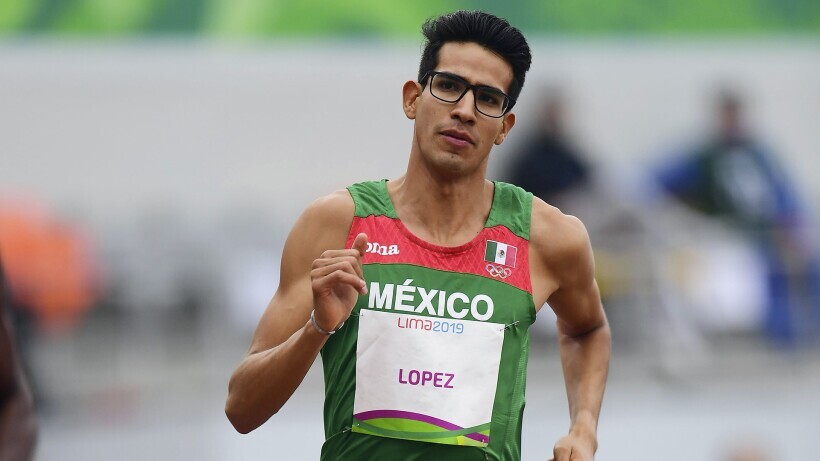
“I don’t like to talk like that,” he says. “I just want to run the best I can. I’m going to do my best, but of course with my best race I can get a medal.”
The past 12 months have taught him as much.
Through 2020 and 2021 Lopez has taken many small steps that, ultimately, led to one giant leap into world-class territory. In May last year he lowered his national record to 1:44.40 and then two months later, he hacked almost a full second off that mark, clocking 1:43.44 in Marietta, USA.
It sounds strange, but Lopez was actually happier after the first race. The reason?
“When I ran 1:43, that same day was (the) Monaco (Diamond League meeting), and (Nijel) Amos ran 1:42.91,” he says. “I wanted to be there, so I was frustrated. I thought I could run faster.”
What led to his breakthrough? Lopez’s story is similar to many other athletes who had their worlds turned upside down in 2020, forced to reassess his approach, rebuild his fitness and return better than ever once racing resumed.
“I think the pandemic helped me,” he says.
In 2019 he set a Mexican record of 1:45.03 shortly before the Pan American Games in Lima, Peru, but he was struck down with injury in the heats at that championships and failed to finish.
“In 2020 our philosophy was to get better in the things we do well and fix the things we don’t do well,” he says. “It was to get better in our weaknesses. I was not giving it everything I had (before) and I felt I needed to give a little more to get better.”
Lopez is a full-time athlete these days and trains in Hermosillo, a city of 800,000 people, located in the state of Sonora in northwest Mexico. It’s also where he grew up, first finding athletics at the age of seven, brought to it by his parents, Claudia Alvarez and Ramon Enrique.
At the time, he was playing American football, putting his speed to good use as a running back, and in those early years he “didn’t really care so much” about athletics. His parents, though, made sure he stayed the course.
“They obligated me to train,” he says. “When I was a boy I wanted to (play) American football, soccer, but they were like, ‘no, you’re going to be a track and field athlete.’”
There was no athletics background in his family, but his coach knew talent when he saw it. In 2013 Lopez – then 15 – competed at the World U18 Championships in Donetsk, Ukraine, and it left an indelible mark.
“I realized: I want to do this all my life,” he says.
At 16 he lowered his best to 1:50.33, and competed at the World U20 Championships in Eugene, USA. At 17 he was running 1:48.13. At 18: 1:46.57.
In 2017 he made his first World Championships at senior level, competing in London before going on to win the World University Games title in Taipei. By then he was a student at the University of Sonora, studying physical culture and sports and training under Conrado Soto, who still coaches him today.
Lopez would rise early, training at 6am before his classes, steadily progressing each month, each year. The sporting and academic demands meant he wasn’t able to work on the side, but support from his parents – who started him out on this path – has never wavered.
“Even with not much money, they gave me what I needed to put me in the city where I need to compete,” he says. “The first years were very difficult but thanks to them I was able to be consistent from year to year. They were also always there for me for emotional support. All this, I owe to my parents.”
As he told his story, Lopez was sitting trackside in the Armory, New York City, ahead of the Millrose Games. He’d never raced on a 200m indoor track before but Lopez ran well to finish sixth in 1:48.60.
“It was a very fierce competition but I’m satisfied,” he said. “I can get better and I know what I need to do to be better next time.”
Given his pedigree as a teenager, he had a range of options available to study in the US but Lopez overlooked them in favor of staying at home. “My coach was great, I had my family, my home,” he says. “I don’t need to go to other places when I have everything in Hermosillo.”
Growing up, he had few compatriots to look up to who were mixing it at the top level in middle-distance events, but Lopez is hoping his presence on that stage – both now and in the future – will inspire many others to follow.
“I always wanted that,” he says. “Every competition, I want to have people by my side. It took me a long time to believe I could compete with the (world’s best), but one year ago I really believed. I can compete with them.”
by World Athletics
Login to leave a comment
Ontario student athletes petitioning government to open training facilities
In the pre-pandemic era, the beginning of January marked a return to the OUA and OCAA season for many student-athletes, but on Jan. 3, the gov’t of Ontario announced new province-wide restrictions in response to the spread of the Omicron variant of COVID-19, placing a ban on all non-elite sports until the end of January. Athletes across the province are signing a petition for the provincial government to lift restrictions on university and collegiate sports in Ontario to be defined as an “elite-level” sport.
The government’s decision stated that ‘elite-level sports’ can continue to play – the Toronto Six and Toronto Raptors can play, Olympians and Paralympians can continue to prep for Beijing. But, OUA and OCAA coaches and student-athletes are left off the playing field. The current restrictions in Ontario prohibit training in university facilities, as well as indoor meets until at least Jan. 27
t the Tokyo 2020 Olympic Games, there were 37 current and past OUA athletes who represented Team Canada (incl. runners Madeleine Kelly, Lucia Stafford, Gabriela DeBues-Stafford, Julie-Anne Staehli and Alicia Brown).
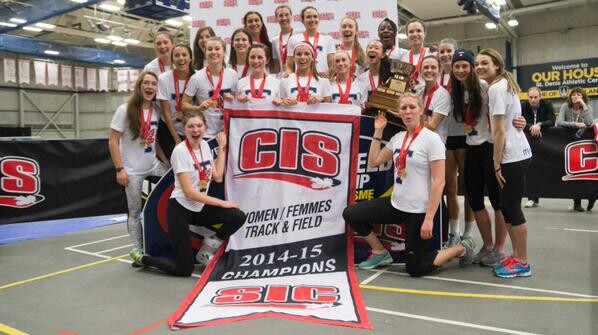
Before Christmas, Ontario University Sport (OUA) announced they were going to halt all winter competitions due to the ongoing spread of Omicron until Jan. 24, but at that time, athletes were still allowed to practice using university facilities depending on the university’s regulations surrounding Omicron.
The recent announcement leaves OUA athletes without a place to train.
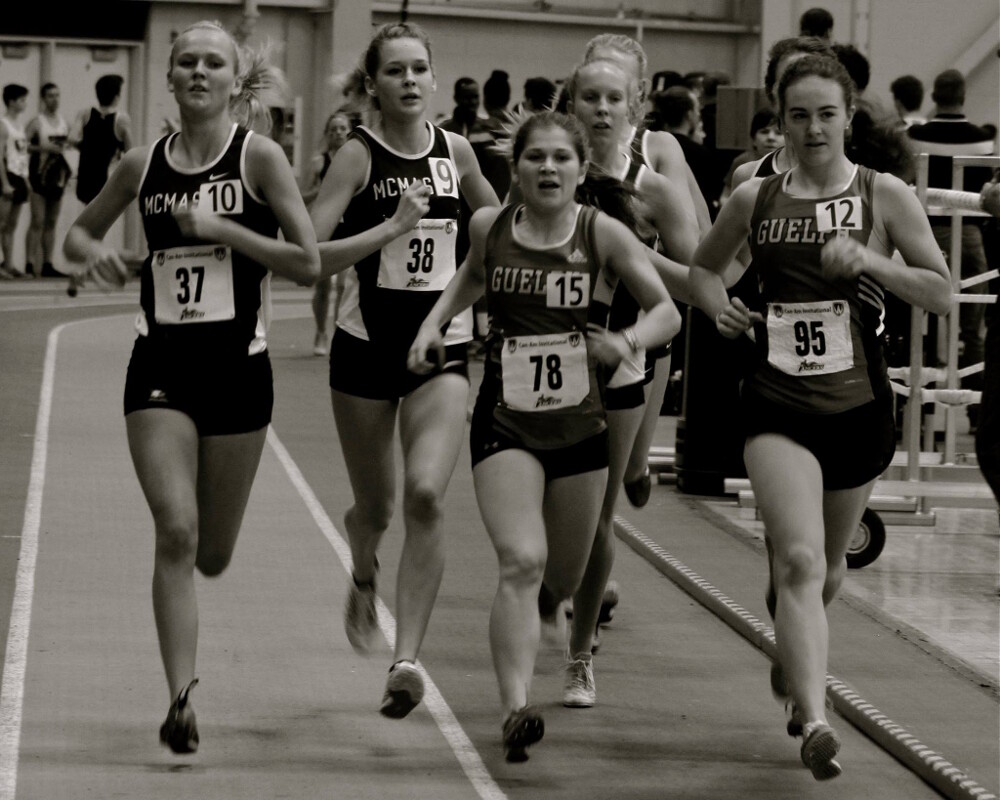
Andrew Davies is an elite-level distance runner with the McMaster Marauders Track & Field team, who has represented Canada at the junior level. “Since we don’t have a useable indoor facility at McMaster, our team was commuting to Guelph once a week to use an indoor track,” Davies says. “The recent restrictions from the government have left us without options in preparation for the indoor season.”
Several OUA-governed indoor track and field meets were supposed to take place in January but have since been cancelled. Many university athletic departments are pushing for their facilities to be opened for varsity teams.
For some senior student-athletes, this season marks their last year of OUA eligibility. “It’s been difficult to plan for races with the uncertainty of the season,” Davies says. “If there were to be further cancellations into February our team would look into options of entering races south of the border.”
The petition for the Ontario provincial government to resume sport has currently gathered over 2,000 signatures.
by Marley Dickinson
Login to leave a comment
Kwizera and Mohamed Katir, duel at the summit in the San Silvestre Vallecana International
The Burundian athlete Rodrigue Kwizera, dominator in the cross season, starts as a favorite against Mohamed Katir, who leads the Spanish representation with Ayad Lamdassem, Dani Mateo, Yago Rojo and Abdessamad Oukhelfen in the Nationale-Nederlanden San Silvestre Vallecana Internacional, which will be dispute this December 31 in the ‘heart’ of Madrid.
La San Silvestre is reunited with its traditional layout and Rodrigue Kwizera’s favorite poster. The athlete from Burundi arrives in Madrid after having shone in the national cross season, with victories in Itálica, Soria, Venta de Baños, Alcobendas and Lasarte, and a second place in Atapuerca.
With a performance that is very reminiscent of Jacob Kiplimo when he pulverized the Nationale-Nederlanden San Silvestre Vallecana record, the 26 minutes and 41 seconds of the Ugandan could be at risk this year if Kwizera brings out all that class that they have shown in this winter season.

The competition that you will find on the asphalt will contribute to this. And it is that Shadrack Koech and Abel Sikowo, already confirmed for the race as representatives of the NN Running Team, are joined by the very young 19-year-old Kenyan Emmanuel Kiplagat, who has 28 minutes and 28 seconds as the best mark in 10,000 meters in the open air, and the great star of national athletics today, Mohamed Katir.
In a dreamy summer, the Murcian of Moroccan origin broke three national records that seemed eternal – 1,500, 3,000 and 5,000 meters -, achieved two victories in the Diamond League against the best in the world, and was an Olympic diploma in 5,000 meters at the Games Tokyo 2020.
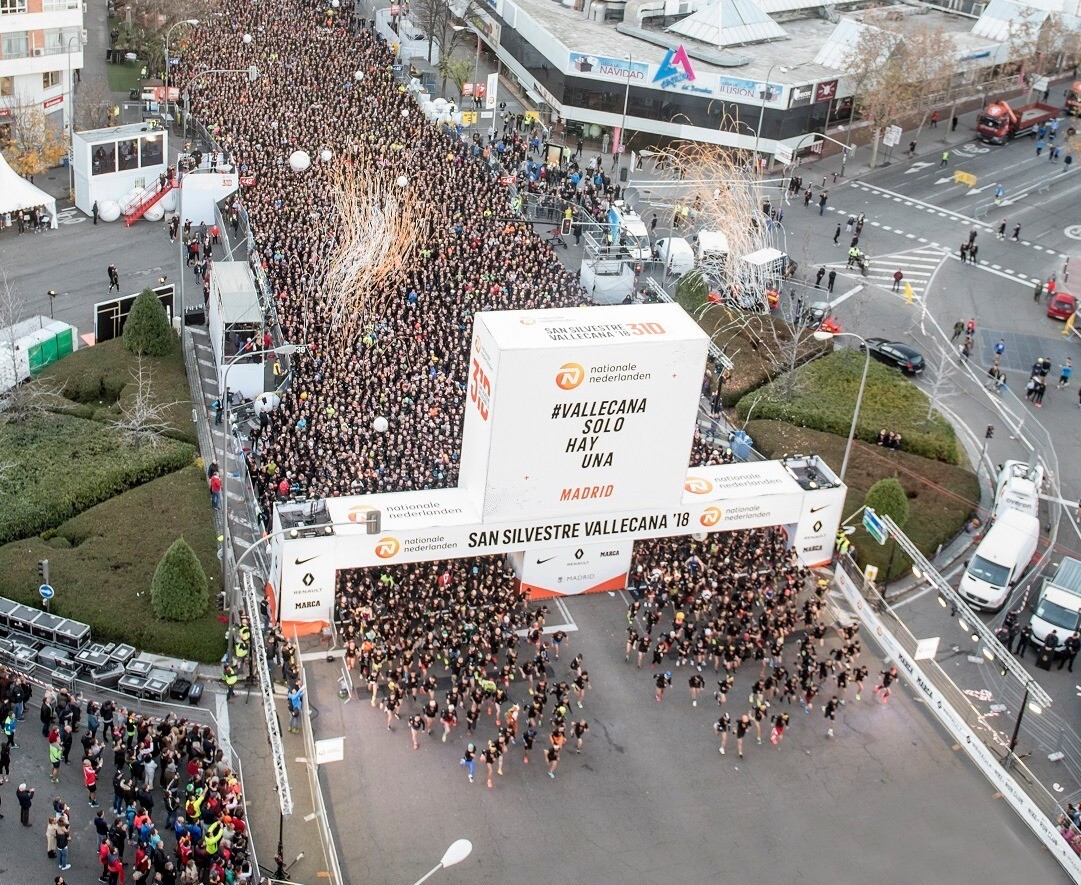
With ambition and courage as the flag, Katir will seek to climb to the top of the podium at the Vallecas Stadium, a victory that would be historic, because a Spaniard has not won since Chema Martínez was crowned in the 2003 edition.
Along with Katir, the Nationale-Nederlanden San Silvestre Vallecana will have the best Spanish athletes of the moment. Ayad Lamdassem knows what it is like to be very close to victory in the Vallecana. The national marathon record holder -2: 06: 35- and fifth at the Tokyo 2020 Olympic Games, has been second three times in Vallecas and will seek to approach the positions of honor. Of course, his personal best is very far in time, 28:09 in 2010.
Dani Mateo shattered this year the national record of the hour of a mythical, Mariano Haro. After his Olympic experience in Japan, the marathoner from Soria will seek to overcome his best position in the race, a ninth place, and try to go down for the first time in his career of 29 minutes in 10K (29:07 as a personal best).
For his part, Yago Rojo has dropped this year from 2 hours and 9 minutes in the marathon, which confirms him as one of the young talents of the distance. In the Vallecana he has already been tenth, in 2018, with a personal best time of 28:48.
The Spanish army is completed by Abdessamad Oukhelfen, current national cross champion and who has just been twelfth in the European cross country in Ireland, confirming the progression of this 23-year-old talent; the canary by birth Nassim Hassaous, the best of the Spaniards in the 2021 European Cross Country, with a seventh place; Ignacio Fontes, Olympic finalist in 1,500 meters in Tokyo 2020; Jesús Ramos, runner-up in Spain in 10,000 meters and with a personal best of 27:49; or Jesús Gómez, double European runner-up of 1,500 meters on the indoor track in 2019 and 2021, among others.
by George Williams
Login to leave a comment
San Silvestre Vallecana
Every year on 31st December, since 1964, Madrid stages the most multitudinous athletics event in Spain.Sport and celebration come together in a 10-kilometre race in which fancy dress and artificial snow play a part. Keep an eye out for when registration opens because places run out fast! The event consists of two different competitions: a fun run (participants must be...
more...Check out this greenhouse track in Japan
A high school in Japan came up with a creative solution for dealing with their winter weather. Instead of building an indoor track, they built a greenhouse around a 330m outdoor track where their athletes can escape the cold and snow.
The track was built for Asahikawa Ryukoku High School in Japan’s Hokkaido Prefecture, whose athletes are currently training for the Hokkaido Prefecture High School Girls Ekiden on October 23. The team is hoping for their sixth straight win, and their coach is hoping this new track will help get them there.

The Hokkaido Prefecture is known for heavy snowfall and temperatures that can drop as low as -20 C. In years past, the school’s Ekiden team has continued to train outside in the winter or had to travel to Sapporo to train on inside domed stadiums, a four-hour round trip from the school.
The special track was built on a 1,650 metre campus where the high school is being relocated next summer. The greenhouse structure is coated in durable vinyl, ranges from 5.4 m to 7.2 m in width and stands four metres high at its maximum point. Currently, the four-lane track is made of dirt, but in the future, two lanes will be covered with artificial turf and one lane will have a 100 m segment coated with standard all-weather track surface material. The facility is heated so it can be used throughout the year.
A few of the athletes have already tested out the new track and given it good reviews, including senior captain Sakura Ishibashi. “This will be a great place to train without having to worry about wind or snow,” Ishibashi told Japan Running News. “We’re all super grateful and want to show our thanks by succeeding.”
The track will also be available to the community and will be a great sports facility for the masses during the cold, snowy winter months.
by Running Magazine
Login to leave a comment
17 Years After His Dad Raced at the Athens Games, Randolph Ross Makes the Olympic Team
It was the best Father’s Day gift the North Carolina A&T program director could have asked for.
At first, Duane Ross was in “coach mode” while he watched his son, Randolph Ross, compete in the 400-meter final at the U.S. Olympic Track and Field Trials. The track program director of North Carolina A&T was also nervous—knowing that Randolph was competing in his ninth race in 11 days and first national championship at Hayward Field—but he was confident his son would still find a way to qualify for the Tokyo Games on Sunday.
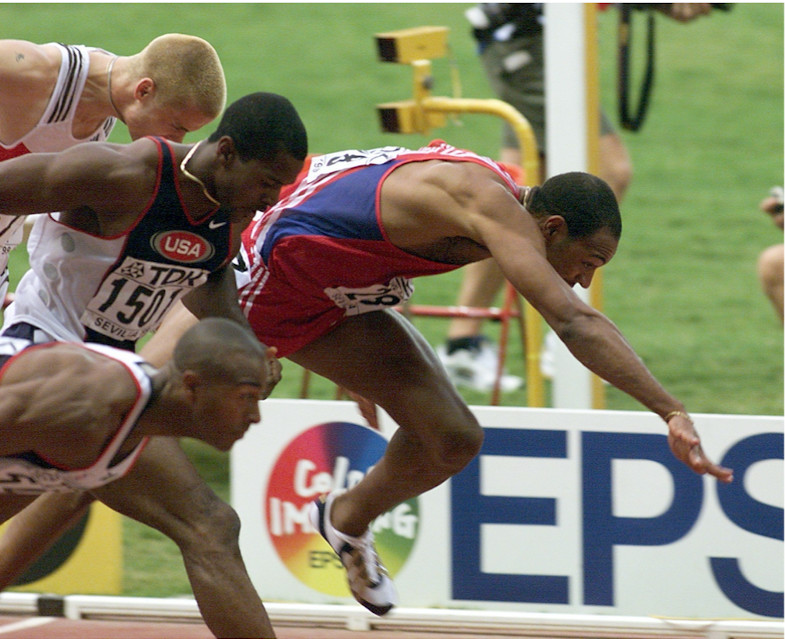
Randolph, running in lane eight, hit the homestretch in fourth place behind Michael Norman, Michael Cherry, and Elija Godwin. But the college sophomore charged the last 100 meters, switching gears to come from behind and pass Godwin for third in 44.74. Norman won in 44.07 and Cherry placed second in 44.35.
At 20 years old, Randolph made his first Olympic team—17 years after his dad finished second in the 110-meter hurdles at the 2004 Olympic Trials and represented the U.S. in Athens.
“It wasn’t about me having joy because he’s following in my footsteps; it was literally seeing the joy on his face [because] he’s accomplished something that he’s talked about for a while,” Duane told Runner’s World. “He’s been in track for awhile. He grew up around it, and that smile said it all. That victory lap and that smile just brought me to tears. When he came up and gave me a hug, he said, ‘Happy Father’s Day.’”
→ Join Runner’s World+ to get the latest running news, training tips, and exclusive workouts!
Picking up track, just like his dad
Randolph was born on New Year’s Day 2001, and he’s the oldest son in a family with seven children. “I knew from this kid’s birthday that he was going to be special. 01/01/01,” Duane said.
Right around when Randolph was born, Duane was in the prime of his professional track career. He represented Team USA at four IAAF World Championships, including the 1999 meet in Seville where he earned bronze in the 110-meter hurdles (In 2010, the U.S. Anti-Doping Agency disqualified all of Duane’s results in competition since November 2001 because of information uncovered by the BALCO investigation).
When Duane finished ninth in the 110-meter hurdles at the 2004 Olympic Games, 3-year-old Randolph was in the stadium in Athens, watching his father race.
“Even when I was competing, he was always with me, always at the track,” Duane said. “We were laughing about that the other day. One of his favorite music groups is The Temptations. [They’re] way before his age, but it’s my favorite group and when he was a child, whenever we were in the car, that’s what we’d listen to. We’ve always been very close.”
Randolph started competing in track and field when he was 5 years old. He also participated in football and basketball, but ultimately decided to focus on track going into his junior year at Garner Magnet High School in Garner, North Carolina.
“Competing in track and field was just different,” Randolph told Runner’s World. “You have a team, but it’s more individual, and I just felt like that’s where I belong more than on the football field or the basketball court.”
At the time, Duane was well into building the program at North Carolina A&T. He offered advice to his son when needed but otherwise left his early development to his high school coaches—and he felt like they left a lot of potential on the table.
“He never lifted weights in high school, never did real interval work. I wanted him to enjoy track and field,” Duane said. “He’s got so much more. People don’t realize he’s just getting started.”
As a senior in 2019, Randolph won the 400-meter title in 46.80 at the North Carolina state meet, and then decided to join his father’s college program at North Carolina A&T. Randolph said he made the decision to focus on track because the sport felt like a calling he wanted to pursue for himself.
“[My dad] didn’t have any pressure on us,” Randolph said. “He wanted us to do our own thing, find our own way, but we ended up following him regardless.”
The sprinter is happy to go in his father’s footsteps with a deeper understanding of the effort and discipline required to compete at the highest level of the sport. When he arrived on campus in Greensboro in the fall of 2019, Randolph joined his father and eventually his younger sister (Jonah Ross just finished her freshman year) on the squad Duane has been leading since 2012.
“Our whole team is basically family,” Randolph said. “We all get treated the same way and we all work just as hard. It’s been a blessing growing with the team.”
Dealing with the pandemic
During the 2020 indoor track season—his first with the Aggies—Randolph ran a world lead in the indoor 400 meters, clocking 45.44 in January. He and the rest of the NCAA qualifiers were in Albuquerque, New Mexico for the 2020 NCAA Indoor Championships in March when the NCAA canceled the championship and the rest of the track season in the early stages of the pandemic. Instead of competing for NCAA titles, Duane had to inform his son that they were going home not knowing when they’d be able to compete or practice together again.
“He was a favorite in the 400 [meters], and he shed a tear when they canceled it,” Duane said. “I mean, that’s tough, and it was tough for me to tell him. … Quite a few [student athletes] shed a tear because they didn’t know what was next.”
To cope with the cancellations and stay-at-home orders, Duane honed in on regular zoom meetings, leaned into his program’s structure and discipline, and emphasized to his team the importance of focusing on themselves instead of outside competition. In September 2020, the squad was able to resume training together. By January 2021, the Aggies were prepared to take on the program’s best season to date.
At the 2021 NCAA Indoor Championships in March, the Aggies finished fifth overall in the men’s team competition, highlighted by the program’s first-ever NCAA title in the 4x400-meter relay. The relay squad ran 3:03.16, the fifth-fastest time in NCAA history. The team is also the first from a historically Black college or university (HBCU) to win an NCAA indoor title in the 4x400-meter relay since Morgan State won in 1966, according to North Carolina A&T athletics. In the open 400 meters, Randolph finished second and All-American Trevor Stewart placed seventh.
Coming into the championships as underdogs
Despite the mens team’s top-five finish during the indoor season, North Carolina A&T came into the NCAA Outdoor Championships, held at Hayward Field from June 9 through 12, ranked low among the top teams in the country. The week before the championship, USTFCCCA projected the men at No. 12 and the women No. 13.
“They see the rankings, but they do a good job of just using it as motivation and fuel,” Duane said. “They’ll pay attention to it, and then toss it to the side.”
In the men’s 400-meter final on June 11, Randolph won the NCAA title in 43.85, setting a new world lead in the third-fastest time in collegiate history, while his teammate, Stewart, finished fourth. Later that day, the sprinters contributed to the Aggies’ 4x400-meter relay victory. They also finished third in the 4x100-meter relay.
By the end of the meet, North Carolina A&T had blown up the pre-meet rankings, scoring 35 points for a third-place finish on the men’s side. The women’s team finished fourth overall with 31 points thanks to Cambrea Sturgis’s 100-200-meter sprint double.
‘A moment we’ll never forget’
A week later, Randolph returned to Hayward Field for three rounds of the 400 meters at the U.S. Olympic Trials. Battling fatigue from the demand of back-to-back championships, Randolph still believed he would make his first Olympic team and even texted his father the morning of the final to share his goal. “I said, ‘Happy Father’s Day. Now let’s go make this team,” Randolph said. “He said, ‘That’s right. Thanks boy, I love you.’”
When he crossed the finish line and qualified for Tokyo, Randolph gave his dad a Father’s Day gift and a legacy that’s been 20 years in the making. Now he aims to win Olympic gold in the 400 meters and the 4x400-meter relay with his father in the stands this summer.
“Having the ability to actually follow in my dad’s footsteps all the way—the Olympics is as high as it gets when you go out there to compete for your country, it’s what everybody’s end goal is,” Randolph said. “Being able to share something with him, and basically almost live the same life he did growing up, wanting to work so hard for it, it’s a moment we'll probably never forget.”

by Runner’s World
Login to leave a comment


